How travel guidebooks charted and changed the world

May 4, 2020 • 8 min read

Brendan Sainsbury reflects on the history of travel guidebooks © Brendan Sainsbury / Lonely Planet
Referenced by generations of globe-trotting travelers and kept on bookshelves as dusty, dog-eared souvenirs, guidebooks have played an influential role in dissecting and shaping travel culture for over 200 years.
In contrast to the inherently fleeting attractions of the internet, these well-thumbed relics of grand tours and budget backpacking jaunts retain a nostalgic and romantic allure that’s hard to replicate online. Open a furrowed Lonely Planet and dozens of memories come pouring out: the faded coffee-stains, the cheap hostel reviews marked in yellow highlighter pen, the scribbled phone number of a gap-year sociology student you met in Cuzco in nineteen-ninety-something but never reconnected with.


The travel guidebook takes shape
The exact origin of guidebooks is murky. Travel memoirs have been written for as long as humans have been exploring the globe. However, what separates modern guidebooks from old-fashioned travelogues like The Travels of Marco Polo is the inclusion of practical information written with the intention of encouraging readers to follow in the writer’s footsteps.
An early pioneer of the art was Mariana Starke, an aspiring British poet and playwright who shared the same publisher as Jane Austen and Lord Byron. Starke’s 1802 book, Travels in Italy Between the Years 1792 and 1798 comprised a collection of travel memoirs that dispensed of overly romantic first-person descriptions of nature in favour of solid factual advice. Eager to smooth the passage for travelers brave enough to circumnavigate the battlefields of revolutionary France, Starke wrote up her observations of Italian churches and villas using a subjective rating system based on one to five exclamation marks.
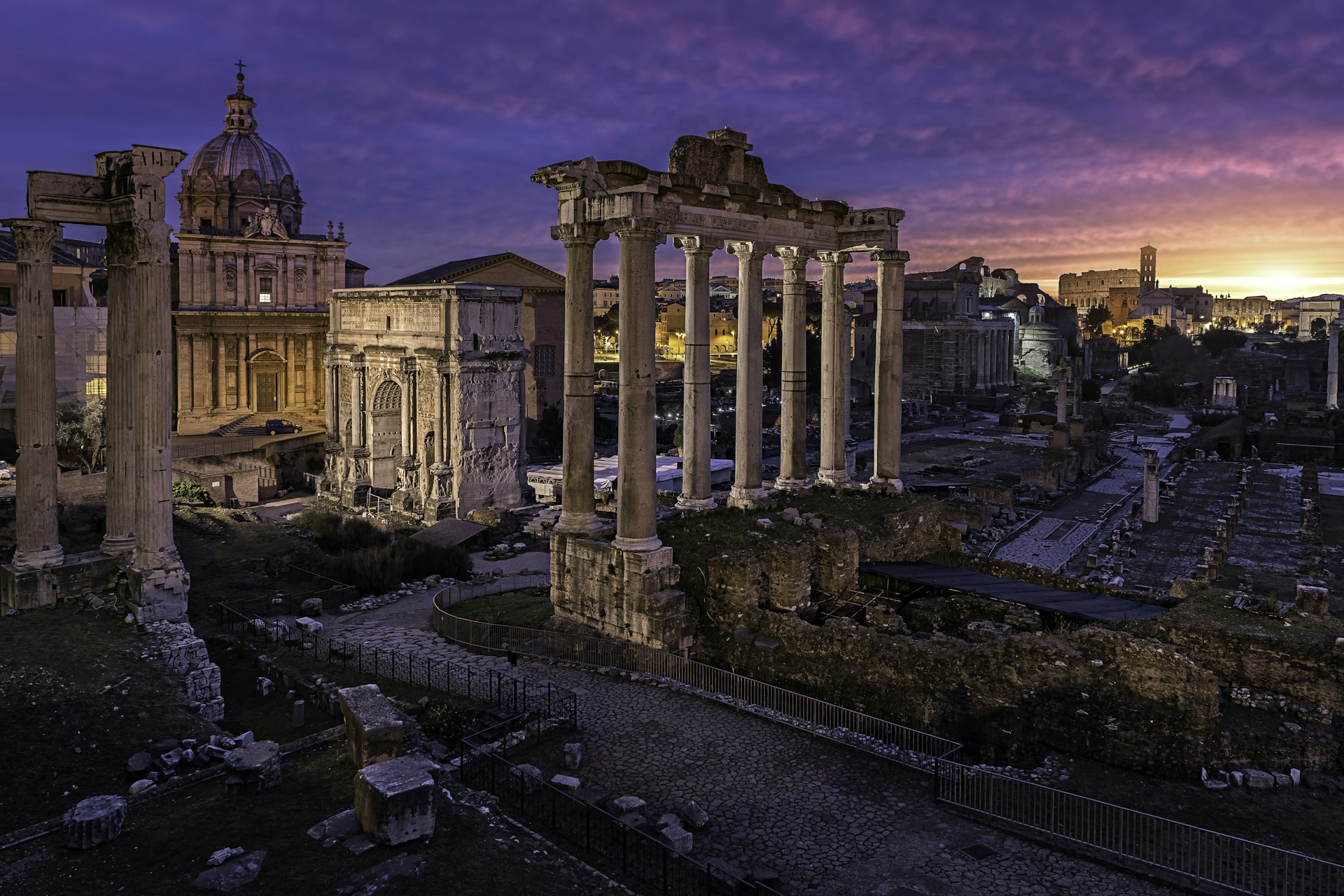
Starke’s book languished as a little-used guide for over a decade, primarily because Europe was still embroiled in the Napoleonic Wars and worryingly short of congenial hotels. Things changed in 1815 when the Congress of Vienna ushered in a protracted period of peace, and European ladies and gentlemen of means, inspired by the poetic prose of writers like Byron, expressed an increasing desire to travel abroad.
As the map of Europe had been largely redrawn since Starke’s 1802 guide, the author – by then well into her 50s – produced a more comprehensive update. Published in 1820, Information and Directions for Travellers on the Continent covered Europe from Portugal to Russia and was stuffed with pithy advice on “tolerable” inns, how to hire a horse carriage and the variable state of the continent’s post-roads.
Starke’s second book struck a chord, not just with the public, but also with its British publisher, John Murray, a foresighted man who knew a ground-breaking idea when it landed on his desk (he later went on to publish Charles Darwin’s The Origin of Species ).
Guidebooks grow into a business
Inspired by Starke’s musings, Murray decided to get in on the travel guidebook business himself. In 1836, his Handbook for Travellers on the Continent ignited one of the world’s first guidebook series and quickly established a prototype for all books that followed. Murray borrowed several ideas from Starke, including organizing subsections into itineraries, sightseeing spots, and inn listings.

Quality was Murray’s hallmark. Demanding high standards of his writers and researchers, the “Murray Handbooks” with their trademark red covers and gold lettering were produced by a capable pool of scribes, some of whom were noted literary figures. Richard Ford, a graduate of Trinity College, Oxford, undertook two years of arduous research on horseback in Spain.
The resulting 1845 Murray’s Handbook to Spain quickly morphed into the Odyssey of travel guidebooks. By turns witty, opinionated, exhaustive and erudite, Ford’s book and sometimes prejudicial views on Spain helped put the country on the travel map. His priceless essays on Spanish music provide some of the earliest insights into the nascent art of flamenco, while his expert ruminations on art and history helped kick-start a love affair with Spain among British travellers that endures to this day.
Baedeker guidebooks’ beginnings
The rise of the Murray Handbooks in Britain coincided with the birth of another brand in Germany. Bookseller and publisher Karl Baedeker launched his first book, the inauspicious Travels along the Rhine from Mainz to Cologne , in 1832 based on information taken from an existing guide he had bought from a bankrupt publishing house. After refining his vision with ideas poached from Murray, the so-called “father of modern tourism” quickly hit on what became his best-selling formula: a guide that encouraged the burgeoning European intelligentsia to travel independently without an expensive assemblage of servants and paid guides.
Some of Mr Baedeker’s working methods are familiar today. He undertook his meticulous research covertly usually traveling on his own. “The entire contents of the book are based exclusively on personal experience,” he wrote as a foreword to all his early editions. With the books fanning out to cover multiple countries including France and Britain by the 1840s and 50s, personal research became a tall order. Baedeker, who was proficient in ten languages, did much of it solo and ultimately overreached himself. He died aged 57 in 1859, reputedly from overwork.

Murray Handbooks was sold off in 1900, but Baedeker, under the direction of Karl’s son Fritz, continued to flourish, publishing an astounding 233 guides to over 40 countries between 1900 and 1914. Faultlessly accurate, though jarringly un-PC by modern-day standards, many of the books went on to become classics. The Palestinian guide was mined extensively by TE Lawrence (of Arabia) during his archaeological digs in the Middle East, while the encyclopedic 1929 Egyptian tome is widely considered to be one of the most accomplished guidebooks ever produced. Today, rare first editions of classic Baedekers can fetch up to US$5,000 at auction.
So ubiquitous were the company’s books that they were often name-checked by contemporary novelists and playwrights. EM Forster converted them into a simile ("their noses were as red as their Baedekers") while TS Eliot referenced them in a poem ("Burbank with a Baedeker: Bleistein with a Cigar"). By the 1920s, the verb “to Baedeker” had become a synonym for ‘to travel’.
Events took a sinister turn in World War II when the Nazis used Baedeker’s 1937 Great Britain guide to pinpoint monuments in historic British cities for devastating bomb attacks. The so-called “Baedeker raids” were carried out in retaliation to the British bombing of Lübeck in March 1942. “We’ll go out and bomb every building in Britain given three stars in the Baedeker,” Nazi propagandist Gustav Braun von Stumm is said to have proclaimed. Cultural sites in Exeter, Bath and York were all subsequently hit. Reprisals were swift. The following year British bombers destroyed Baedeker’s publishing house in Leipzig.

Travel comes to the masses
With the onset of mass tourism in the 1960s and 70s, guidebooks proliferated, most notably at the budget end of the market. Mega-brands grew from humble DIY roots to feed a new generation of freewheeling explorers christened “backpackers.” Arthur Frommer’s self-published GI’s Guide to Traveling in Europe (1955), a thin volume initially tailored for American soldiers, morphed into Europe on $5 A Day . Let’s Go guides arose from an idea hatched at Harvard University in 1960. The books, written by students for budget-seeking Americans, served as a fertile breeding ground for young authors, some of whom later graduated to careers in screenwriting, journalism and politics, including travel essayist Pico Iyer.
The biggest new innovators, Lonely Planet, emerged after founders Tony and Maureen Wheeler turned a cheap trip across Asia into a multimillion-dollar travel business whose guidebooks were so influential they became known as travel “bibles.” The Wheelers’ initial 1973 book, Across Asia on the Cheap packed more than a dozen countries into just 94 pages and included gems of hippy-era budgetary advice (“In Afghanistan in particular you can get stoned just taking a deep breath in the streets”). Within two decades, the company had remapped the world, catering to a new generation of time-rich, cash-poor twenty-somethings with a penchant for banana pancakes.
Like the Baedekers before them, Lonely Planet guidebooks were occasionally name-dropped in works of literature. Alex Garland’s 1996 novel The Beach , set in Thailand, alludes to a whole culture of Lonely Planet travelers inadvertently reshaping the destinations they passed through. In the process they created what became known as the “banana pancake trail,” a network of cheap guesthouses and cafes in Southeast Asia whose spiritual home was Bangkok’s Khao San Road.

The books also attracted notoriety. In the 1980s, Lonely Planet’s Africa on the Cheap was banned in Malawi for its criticisms of the country’s president, Dr Hastings Banda. Twenty years later, during the Iraq War and its aftermath, the US military allegedly used Lonely Planet’s 1994 Middle East guide for information on the economy, government, and important embassies and buildings. “It’s a great guidebook,” reflected US Ambassador, Barbara Bodine in 2007, “but it should not be the basis of an occupation.”
In the shortened attention-spans of our modern interconnected world, the guidebook’s obituary has been written at regular intervals since the turn of the 21st century. Yet despite existential threats from blogs, booking websites and, more recently, pandemics, there’s something fundamental about guidebooks that still resonates. Standing the test of time, they act as poignant reminders of our life on the road, each one telling a unique and deeply personal story.
You might also like: How to prepare now for the trip of your lifetime (once the pandemic is over) Missing your backpacking days? Why not adopt a hostel? History’s most famous explorers and their epic journeys
Explore related stories
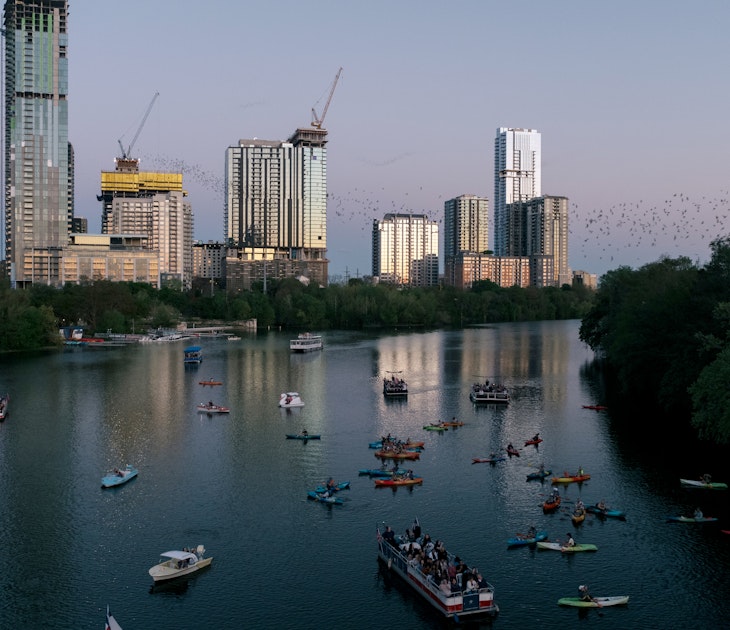
Wildlife & Nature
Apr 24, 2024 • 10 min read
Each of Austin's neighborhoods showcases a different aspect of Austin's character – the political, historical, academic, techy and funky.
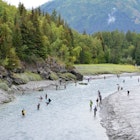
Apr 24, 2024 • 7 min read
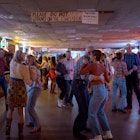
Apr 24, 2024 • 9 min read

Apr 24, 2024 • 11 min read

Apr 24, 2024 • 5 min read

Apr 23, 2024 • 9 min read
- North America
- Significant Moments That Changed The...
Moments That Changed the Way We Travel: A Timeline

Commissioning Editor
The only thing guaranteed in life is change. A single invention has the power to change the course of history, as does a disaster – take the way Covid-19 is playing out in front of us. Sometimes we lose sight of that – the present moment feeling eternal, which isn’t a bad thing in an age of mindfulness. As a reminder of such change, Culture Trip looks back on the past 200 years to reflect on significant moments that altered the world of travel for good.
1802: the ‘puffer engine’ is invented.
It was more than two centuries ago that a Cornwall -born inventor and mining engineer called Richard Trevithick would complete the first iteration of a train – little did he know how central it would become to our everyday existence. The high-pressure “puffer engine” he patented was the first steam-powered locomotive engine on rails. Come 1829, another fellow, this time by the name of Robert Stephenson, who would later become known as the Father of Railways, designed the Rocket, an early locomotive of 0-2-2 wheels. It’s arguably one of Britain’s greatest feats of engineering and it set the wheels in motion for more to come.

1863: the first Tube travels underground in London

1903: it’s liftoff for The Wright Brothers’ Flying Machine
A century on from train innovation comes the first aircraft to make a controlled flight. It was for 12 seconds, travelling 120ft (37m), and it was a massive feat for American aviation pioneers Orville and Wilbur Wright. Many aviators tried to get their inventions off the ground around the same time – and for that reason there is some debate as to who, indeed, was the first to achieve a seamless flight. Some make a case for German aviator Gustave Whitehead; in 1901 a newspaper reported that he had completed a flight in Connecticut. Meanwhile, others argue that it was Brazilian inventor Alberto Santos-Dumont; in 1906 his kite-like contraption flew some 220m (722ft) in Paris. Let your inner conspiracy theorist run wild.
1912: RMS Titanic sinks en route to New York from Southampton
We have actors Leonardo DiCaprio and Kate Winslet – along with a stellar soundtrack from Celine Dion – to credit for bringing to life the tragic sinking of the RMS Titanic in 1912. It was in the early hours of 15 April that the world’s then-largest man-made “unsinkable” ship struck an iceberg, just four days into her maiden voyage from Southampton, UK, to New York. Travelling over capacity, with 3,300 people on board, the ship only had lifeboats for a third of them. Only 492 passengers and 214 crew survived. As a consequence, ship design changed, an International Ice Patrol was established, and liners always travel with enough lifeboats.

1919: the first non-stop transatlantic flight proves the impossible
Flying a modified World War I Vickers Vimy bomber, British aviators John Alcock and Arthur Brown went where others could never have imagined: across the Atlantic Ocean. In 16 hours, they flew from Newfoundland , the most easterly province of Canada, to Cliften in Ireland. Then, in 1927 – propelled (pardon the pun) by his doubters – Charles Lindbergh became the first pilot to fly solo non-stop across the Atlantic, from New York to Paris, in 33 hours. Five years later, Amelia Earhart became the first woman to make the solo trip.
1952: a golden age of air travel is born as BOAC goes commercial
By the 1950s, aviation had come a long way from The Wright Brothers’ Flying Machine. The British Overseas Airways Corporation made another world first: a commercial jet service, designed by British engineer Geoffrey de Havilland. Enter a golden age of air travel. Well, for wealthy celebrities and politicians, at least. It was an affair to get dressed up for: think Sunday best and fine jewellery, with lobster and champagne on the menu. The flight that kicked off this era of luxury jet travel journeyed from Johannesburg to London, and the rest is history – with flying today a far cry from this once-elusive and rather chic club.

1964: Japan introduces the world to high-speed trains
The concept of high-speed rail isn’t anything out of the ordinary for us today. Fancy going to Paris from London? The Eurostar will get you there in just over two hours. How about Paris to Champagne? That will be 40 minutes on the TGV. But pre-1964, the idea of such speedy land-based travel would have been unfathomable – until Japan unveiled a high-speed rail system called the Tōkaidō Shinkansen . Complete with their signature bullet noses, the first of these trains travelled at 210kph (131mph), while trains on that same network can reach a speed of 320kph (199mph) today. Though this still isn’t enough for the Japanese, who are set to unveil an even faster version in 2030. Speedy Gonzales.
1969: the Jumbo Jet brings affordable flying to the masses
1969 was a big year: as Commander Neil Armstrong became the first person to set foot on the moon, a Boeing 747 Jumbo Jet 231ft (70m) long, took to the skies with 490 passengers on board. It quickly became known as the Queen of the Skies and a gateway for the masses to travel affordably – now package holidays in warmer climes were calling. The airliner retained its title of the largest civilian plane until 2007, when the Airbus A380, with its gargantuan 868-passenger capacity (and encore of screaming babies guaranteed), came along and nabbed the accolade. Concorde also made its first flight in 1969 – but, notoriously reserved for an exclusive jetsetters’ club , its impact could never match that of its jumbo sister.
1974: Navstar launches, reshaping navigation
For that annoying voice we all know and love so well that tells us to “take the first left at the roundabout” three times more than we need to hear it, we have the American scientist and inventor Roger L Easter to thank. And while GPS has its roots in the Sputnik era (the first artificial earth satellite, launched by the Soviet Union in 1957), it wasn’t until 1974 that it hit our roads. In collaboration with Naval Air Systems Command, Easter created and patented a 24-hour satellite GPS called Navstar. Back then, it was the best thing since, well, physical road maps. Sorry, road maps.
1978: Unesco lists its first World Heritage sites, birthing the bucket list
A destination is always more in demand when Unesco confers World Heritage site status upon it. This recognition is based on whether it offers “outstanding universal value” in terms of geographic and historical significance. Drawn up in 1978, the first list included just a dozen sites (dubbed “properties”) such as Yellowstone National Park in the United States and the Galápagos Islands in Ecuador. It served as the first benchmark of must-visit locations, and the bucket list as we know it was born. Today this ever-fluctuating list includes just shy of 1,000 sites, among the most famous of which are Machu Picchu in Peru and the Taj Mahal in India.

2001: 9/11 attacks shakes the world and collective confidence in flying
On 11 September 2001 , two hijacked airplanes smashed into the twin towers of the World Trade Center in New York, with a third hitting the Pentagon in Washington DC. Almost 3,000 people were killed, and the date is now observed as an annual day of mourning. It shocked the world – as well as the US economy, which fell sharply, and battered global confidence. People lost their faith in flying, and flying itself became an altogether different experience. Security became paramount: liquids were inspected any over 100ml (3.4 fl oz) were confiscated; pat-downs and body-scans became the norm; and unattended pieces of luggage were considered a serious threat.
2004: Richard Branson sets out plan for commercial space travel
The idea of travelling to outer space used to be reserved for highly trained astronauts and TV characters like The Jetsons. That is, until Sir Richard Branson had a grand idea. Following his Virgin conquests of air (Virgin Atlantic), land (Virgin Trains) and sea (Virgin Voyages), the entrepreneur turned his attention to space. He called this new venture Virgin Galactic. The idea? To take us mere mortals out into the big void ourselves. In 2018, the first suborbital flight took three people into space, and 2020 is set to be the year in which commercial space travel really takes off, with SpaceX, Boeing and the European Space Agency all vying for first dibs. A whole new space race is on.
2020: Covid-19 sweeps across the globe and self-isolation becomes the new normal
As we waved goodbye to 2019 and rang in the new decade, we did so with optimism. But it quickly dwindled. First came the Australian bushfires that burned 5m hectares (12,355,270 acres) of land, killed 500m animals and at least 17 people. Then, Covid-19 . A member of the coronavirus family, it’s thought to have originated in a wildlife market in Wuhan, China, in December 2019 – but it wasn’t confined to the Chinese province for long. By April 2020, it had spread across the entire world, starting with one or two cases in each country, before multiplying and infecting millions. In an attempt to stop this unknown entity in its tracks, retreating indoors and self-isolating are the new normal. Borders closed, airlines ceased operations, and trips beyond the front door were restricted to essentials only. A first in recent history, we’re truly in uncharted territory.

Since you are here, we would like to share our vision for the future of travel - and the direction Culture Trip is moving in.
Culture Trip launched in 2011 with a simple yet passionate mission: to inspire people to go beyond their boundaries and experience what makes a place, its people and its culture special and meaningful — and this is still in our DNA today. We are proud that, for more than a decade, millions like you have trusted our award-winning recommendations by people who deeply understand what makes certain places and communities so special.
Increasingly we believe the world needs more meaningful, real-life connections between curious travellers keen to explore the world in a more responsible way. That is why we have intensively curated a collection of premium small-group trips as an invitation to meet and connect with new, like-minded people for once-in-a-lifetime experiences in three categories: Culture Trips, Rail Trips and Private Trips. Our Trips are suitable for both solo travelers, couples and friends who want to explore the world together.
Culture Trips are deeply immersive 5 to 16 days itineraries, that combine authentic local experiences, exciting activities and 4-5* accommodation to look forward to at the end of each day. Our Rail Trips are our most planet-friendly itineraries that invite you to take the scenic route, relax whilst getting under the skin of a destination. Our Private Trips are fully tailored itineraries, curated by our Travel Experts specifically for you, your friends or your family.
We know that many of you worry about the environmental impact of travel and are looking for ways of expanding horizons in ways that do minimal harm - and may even bring benefits. We are committed to go as far as possible in curating our trips with care for the planet. That is why all of our trips are flightless in destination, fully carbon offset - and we have ambitious plans to be net zero in the very near future.

Guides & Tips
Top trips by culture trip for ticking off your bucket list.

Travel With Culture Trip: Who Are Our Local Insiders?

How to Book a Private Tour with Culture Trip

See & Do
Gift the joy of travel this christmas with culture trip gift cards.

Everything You Need to Know About Booking a Private Culture Trip

The Benefits of Booking a Private Tour with Culture Trip

How to Make the Most of Your Holiday Time if You're in the US

The Best Couples Retreats in the USA

5 Ski Resort Scenes You Can't Miss This Year

Travel in America: Top 5 Trip Ideas

Top Trips for Embracing Your Own Backyard

The Best Solo Travel Tours in the US
Culture trip spring sale, save up to $1,100 on our unique small-group trips limited spots..

- Post ID: 1001441798
- Sponsored? No
- View Payload

Art & Culture Travel Blog
History of travelling: how people started to travel.
- Tea Gudek Šnajdar
- Cultural Tourism

Although we often have a feeling like people are travelling for the last few decades only, the truth is – people are travelling for centuries. Old Romans were travelling to relax in their Mediterranean villas. At the same time, people in Eastern Asia wandered for cultural experiences. I’ve got so fascinated with the history of travelling, that I did my own little research on how people started to travel. And here is what I’ve learned.
History of travelling
I was always curious about the reason people started to travel. Was it for pure leisure? To relax? Or to learn about new cultures, and find themselves along the way?
I wanted to chaise the reason all the way to its source – to the first travellers. And hopped to find out what was the initial motivation for people to travel.
According to linguists, the word ‘travel’ was first used in the 14th century. However, people started to travel much earlier.
While looking at the history of travelling and the reasons people started to travel, I wanted to distinguish the difference between travellers and explorers. Most of the time, when thinking about travel in history, people like Marco Polo or Christopher Columbus are coming to mind. However, they weren’t really travellers in a modern sense. They were explorers and researchers. So, to really learn about how people started to travel, I wanted to focus on ordinary people. Travellers like you and me, if you wish.
Romans and their roads
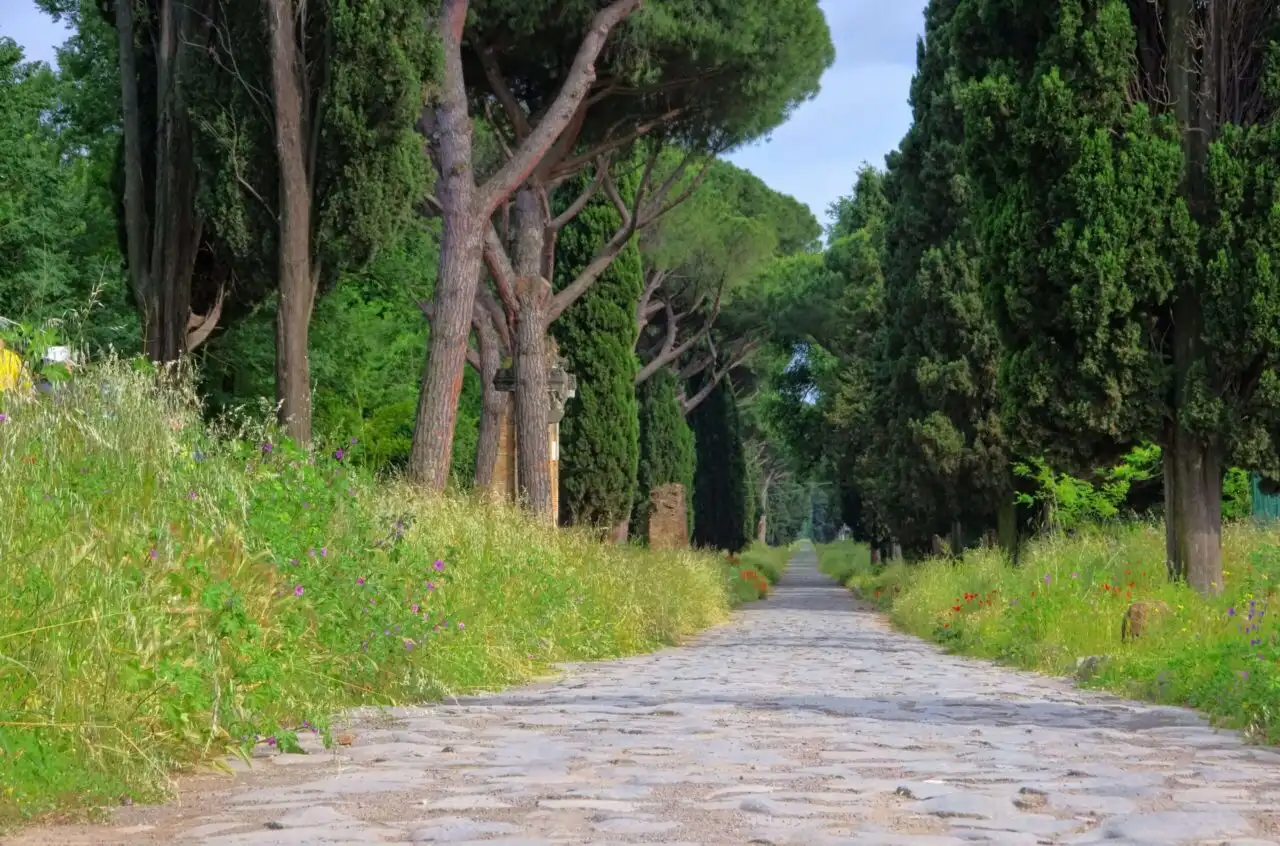
First people who started to travel for enjoyment only were, I’m sure you won’t be surprised, old Romans. Wealthy Romans would often go to their summer villas. And it was purely for leisure. They could, of course, start doing that because they invented something quite crucial for travelling – roads. Well developed network of roads was the reason they could travel safely and quickly.
However, there is another reason that motivated people in Antiquity to travel. And I was quite amazed when I learned about it.
It was a desire to learn. They believed travelling is an excellent way to learn about other cultures, by observing their art, architecture and listening to their languages.
Sounds familiar? It seems like Romans were the first culture tourists.
⤷ Read more : 20 Archaeological sites you have to visit in Europe
Travelling during the Middle Ages
It may come by surprise, but people started to wander more during the Middle Ages. And most of those journeys were pilgrimages.
Religion was the centre of life back in the Middle Ages. And the only things that connected this world with the saints people were worshipping, were the relics of saints. Pilgrims would often travel to another part of the country, or even Europe to visit some of the sacred places.
The most popular destinations for all those pilgrims was Santiago de Compostela, located in northwest Spain. People would travel for thousands of kilometres to reach it. To make a journey a bit easier for them, and to earn money from the newly developed tourism, many guest houses opened along the way. Pilgrims would often visit different towns and churches on their way, and while earning a ticket to heaven, do some sightseeing, as well.
Wealthy people were travelling in the caravans or by using the waterways. What’s changing in the Middle Ages was that travel wasn’t reserved only for the rich anymore. Lower classes are starting to travel, as well. They were travelling on foot, sleeping next to the roads or at some affordable accommodations. And were motivated by religious purposes.
⤷ TIP : You can still find many of those old pilgrim’s routes in Europe. When in old parts of the cities (especially in Belgium and the Netherlands ), look for the scallop shells on the roads. They will lead you to the local Saint-Jacob’s churches. Places dedicated to that saint were always linked to pilgrims and served as stops on their long journeys. In some cities, like in Antwerp , you can follow the scallop shell trails even today.
Below you can see one of the scallop shells on a street and Saint-Jacques Church in Tournai , Belgium.

Grand Tours of the 17th century
More impoverished people continued to travel for religious reasons during the following centuries. However, a new way of travelling appeared among wealthy people in Europe.
Grand tours are becoming quite fashionable among the young aristocrats at the beginning of the 17th century. As a part of their education (hmmm… culture tourists, again?) they would go on a long journey during which they were visiting famous European cities. Such as London , Paris , Rome or Venice, and were learning about their art, history and architecture.
Later on, those grand tours became more structured, and they were following precisely the same route. Often, young students would be accompanied by an educational tutor. And just to make the things easier for them, they were allowed to have their servants with them, too.
One of those young aristocrats was a young emperor, Peter the Great of Russia. He travelled around western Europe and has spent a significant amount of his time in the Netherlands. The architecture of Amsterdam and other Dutch cities definitely inspired a layout of the new city he has built – Saint Petersburg . So, travelling definitely remains an essential part of education since Roman times.
⤷ Read more : 15 Best museums in Europe you have to visit this year
The railway system and beginning of modern travel in the 19th century

Before the railway system was invented, people mostly travelled on foot (budget travel) or by water (the first-class travel at that time). However, when in the 1840s, an extensive network of railways was built, people started to travel for fun.
Mid-19th century definitely marks a real beginning of modern tourism. It’s the time when the middle class started to grow. And they have found a way to travel easily around Europe.
It’s coming by no surprise that the first travel agency, founded by Thomas Cook in England, was established at that time, too. He was using recently developed trains together with a network of hotels to organise his first group trips.
⤷ Read more : The most interesting European myths and legends
History of travelling in the 20th century
Since then, things started to move quickly. With the development of transportation, travelling became much more accessible. Dutch ships would need around a year to travel from Amsterdam to Indonesia. Today, for the same trip, we need less than a day on a plane.
After the Second World War, with the rise of air travel, people started to travel more and more. And with the internet and all the cool apps we have on our smartphones, it’s easier than ever to move and navigate your way in a new country. Mass tourism developed in the 1960s. But, with the new millennium, we started to face the over-tourism.
We can be anywhere in the world in less than two days. And although it’s a great privilege of our time, it also bears some responsibilities. However, maybe the key is to learn from history again and do what old Romans did so well. Travel to learn, explore local history and art, and be true culture tourists.
History of Travelling , How people started to travel , Travel
Join Us On YouTube!

Matsumoto Castle, Nagano, Japan
A Brief History of Travel and Tourism
Utilizing the widest definition of the word, human beings have been travelling since the dawn of time. No matter one’s beliefs about the creation of humans, everyone can agree our species began in some single locale, likely Africa or the Middle East , and ‘travelled’ outwards, settling new lands. However, most of this ‘travel’ was done out of necessity and war, often without the intent of return. It wouldn’t be until Antiquity, or the glory days of the Greek and Roman empires, that tourism, or leisure travel, would be introduced.
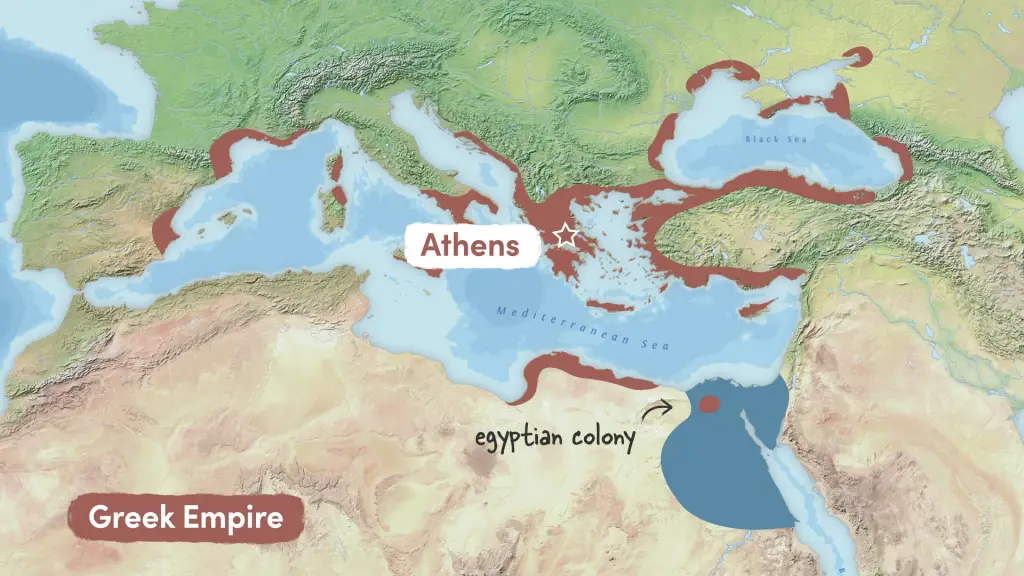
Aristocratic Tourism
In those days, tourism was a privilege almost entirely confined to the wealthy, who travelled largely for cultural exploration. One has to remember, the Greek and Roman upper classes were people who prided themselves on artistic, scientific, and philosophical pursuits. It follows, then, that these early travellers largely sought to learn the arts, languages, and cultures of their destinations.

Soon enough, travelling for leisure’s sake began to gain popularity; from the Roman Empire arises some of the earliest examples of travel resorts and spas in the world. Though they documented their experiences most thoroughly, the elite Europeans were not the only ones travelling in ancient times. In eastern Asia , it was popular for nobles to travel across the countryside for the religious and cultural experience it offered, oftentimes stopping at temples and sacred sites during their travels.
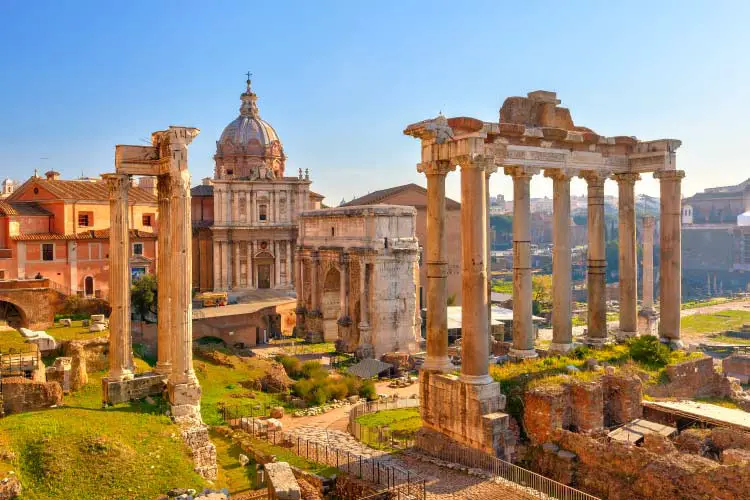
Religious Tourism
During the Middle Ages, travel took on a new meaning. Although leisurely travel was still reserved for the upper class, it became more and more common for members of the upper and even lower classes to embark on pilgrimages. Most of the major religions at the time, including the Islamic, Judaic, and Christian traditions, encouraged their practitioners to conduct pilgrimages.

Largely unaided by technology, most of these journeys were done on foot, often occasionally with a beast of burden to carry supplies. The wealthy were able to afford other forms of travel including horseback and ship. Furthermore, the Middle Ages saw the emergence of connected shipping routes. As ports grew, travel opportunities increased, and the dock was typically the start of any long-distance travel during the Middle Ages.
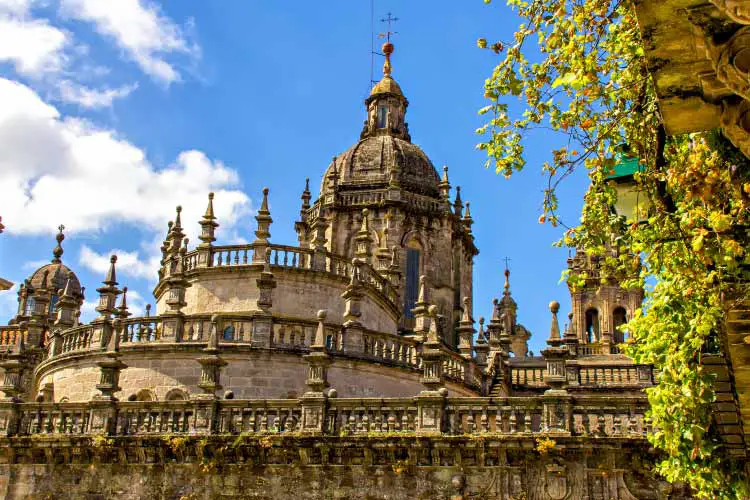
The Grand Tour
Travel continued to exist in this way for some time: the rich travelled primarily for cultural and leisure reasons, while the poor travelled largely for religious reasons, if at all. The next major development travel underwent was the establishment of the Grand Tour. Undertaken by the elite men of Western and Northern European countries , the Grand Tour took young travellers across Europe in a “rite of passage” meant to educate the wealthy after they finished their education but before adulthood. Historians cite this tradition as the origin of the modern tourism industry and indicate that the tradition had become well established in European culture by the 1660s.
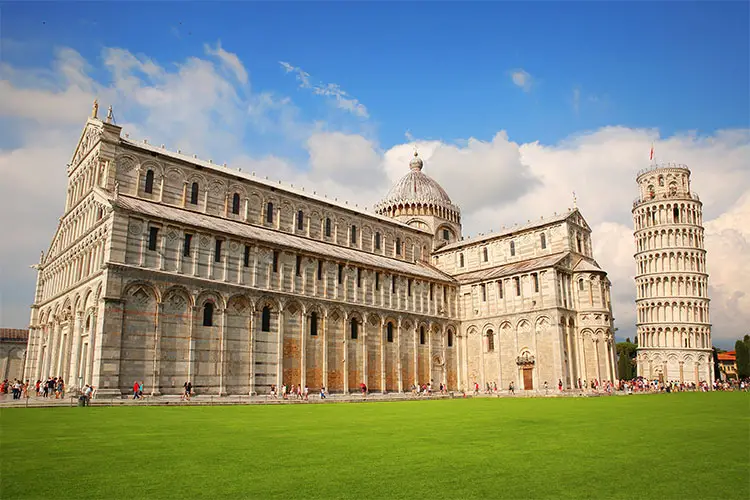
Like many traditions, the Grand Tour eventually developed a rigid structure. Tourists were expected to follow a set itinerary and travelled with a tutor. The Grand Tour typically began in England, moved south through France into Switzerland and Italy. After spending a few months in Italy, the traveller and his tutor moved upwards through Germany and into Holland before returning to England. These trips utilized the most advanced travel technology of the day, including ships and collapsable coaches, and it wasn’t entirely uncommon for the traveller and tutor to be waited on by a handful of servants.

Tourism For The Masses
The Grand Tour remained a popular cultural phenomenon amongst the rich until the 1840s, which saw the advent of the first widespread railway system across system Europe. Immediately, this innovation opened the possibility of embarking on a Grand Tour to the middle classes, and soon it became more popular for middle and even working-class citizens to travel for leisure.

More importantly, the implementation of railway systems across Europe and the United States positioned the world for the Industrial Revolution. The United Kingdom is often cited as the first country to actively promote leisure time to its industrial class, and as a result, the country had a strong impact on the early development of the tourism industry. One hugely influential player in the history of travel and tourism was Englishmen Thomas Cook, who established the first-ever travel agency to provide ‘inclusive individual travel’ in the 1840s.

This means that travellers move independently in their travels, but all the food, lodging, and travel expenses were set at a fixed price for a predetermined length of time. This allowed travellers to take any route they fancied throughout Europe without having to ascertain food or lodging ahead of time. This fact, coupled with the falling ticket prices of railways, meant that long-distance travel was dramatically cheaper and faster than ever before. This not only further lowered the barriers to leisure travel but also drastically increased the incidences of business-related travel. As one can imagine, Cook’s Tours became massively popular, and the company remains successful today as the Thomas Cook Group.
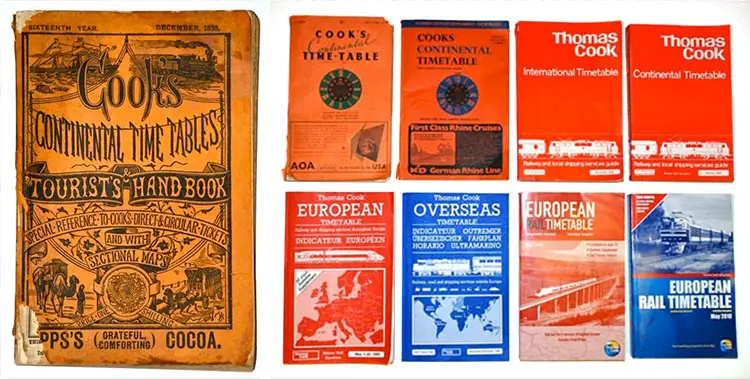
In short, the introduction of a widespread railway system gifted a massive boost to the tourism industry; this boon would largely reflect that the aeroplane would have in the early-20th century. More so than any other technological development, the aeroplane opened the floodgates of mass international tourism. Behemoth multinational airlines such as Pan Am, Delta, and American Airlines arose during the 1900s, and suddenly the physical boundaries between cities were rendered useless. It has become possible for a traveller to get nearly anywhere on the globe in less than 48 hours, for a price that most middle and working-class members can achieve.
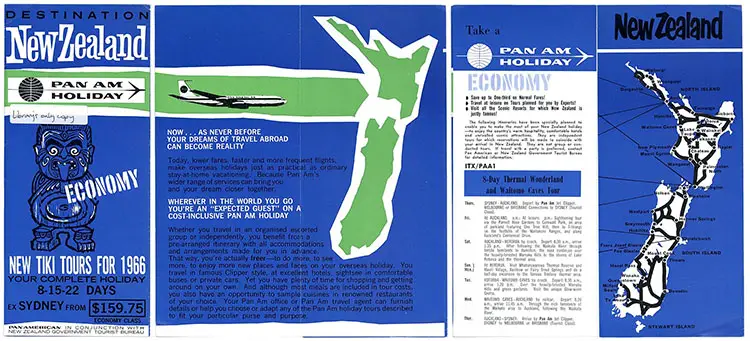
Today, travel stands as one of the most economically important leisure activities in the world. The tourism market is so large that it has split into an astounding number of niche markets, including ecotourism , backpacking, and historical tourism. As of the writing of this article, there have even been a handful of trips into orbit around Earth branded as “space tourism”, a new and exciting chapter in the history of travel and tourism. The story of tourism displays a remarkable connection to the technology that makes travel possible. Transportation innovations like the train and aeroplane have eliminated the difficulties and lowered the costs of long-distance travel, and planet Earth has truly become a smaller place because of it.

© Textbook Travel 2024 ⋅ View Privacy Policy
- International edition
- Australia edition
- Europe edition
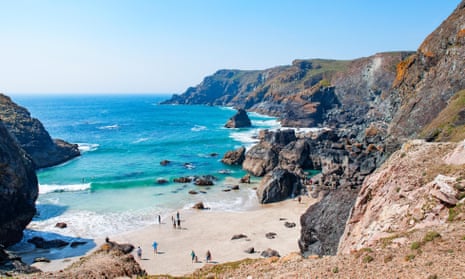
The classic travel guidebooks that inspire my trips
From the iconic Shell Guides to Wilkie Collins’s rambles, travel writers pick the vintage UK guides that keep them exploring
‘A rollicking account of a walking tour around Cornwall in 1850 … to “the savage regions beyond” Plymouth’
Rambles Beyond Railways by Wilkie Collins
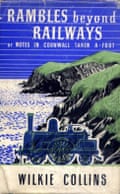
It was not only intended to be used as a guidebook, but Wilkie Collins’s Rambles Beyond Railways (1851) is written with the kind of precision you’ll find in any of the later Shell or Blue guides. It’s a rollicking account of a walking tour he took around Cornwall in August 1850, aged 26, when he travelled to ‘the savage regions beyond’ Plymouth, where the railways had not yet reached (although they were only just behind him).
He was rowed from Devonport to St Germans by an expansively inebriated shrimper, and he hiked from village to town, along the coast, strolling along the tops of the thick stone walls (as we still can), dining on pies, cream and lobsters, trying to find Cornish speakers, looking for ghosts, becoming almost indecently excited about the prospect of Land’s End (which he then couldn’t find without a guide). We don’t have that problem today, what with the car park and hyperactive gift shops, but much of the rest of Rambles is as fresh and informative as it ever was.
I have wriggled through the same caves at Kynance Cove, followed Wilkie to Tintagel and Helston (‘the dullest of towns’, he sniffed), stood on the Cheesewring (where the view, if you squint out the pylons, is just as he described) and caressed the same standing stones. He even sniggers at the “fly blown mock jewellery” and “dusty nuts” in a shopfront in Looe, launching 150 years of seaside innuendo. You can skip some of his waffle about Cornish theatre in the later stretches of the book; but his descriptions of his visit down a tin mine and especially the wild night-time haul of pilchards at St Ives, where the entire town turned out to bring in the fish, are exhilarating.
The people of Cornwall will always prosper, he wrote, thanks to the “inexhaustible mineral treasures in the earth, and the equally inexhaustible shoals of pilchards which annually visit the coast”.
He can be careless with his research (but who wouldn’t want to read what Wilkie Collins has to say about druids?), and he seems to have become bored with the book by the end, but Rambles still holds its own as a guide. It’s even topical. When Wilkie reached Lizard, he found a doctor down from London holding a smallpox party at the inn (now the Witchball), inoculating local babies with “a lot of fine fresh matter”. Wilkie scuttled out, and headed for the coast, where the air, he sighed, was “better than laudanum”. He ended his journey at Forrabury church with a ghost story, before heading back to London on the train, and so “our pleasant days of strolling travel are ended”. Peter Fiennes is the author of Footnotes: A Journey Round Britain in the Company of Great Writers
‘Hutton was gloriously opinionated. He thought Stonehenge “sterile” … entire valleys displeased him’
Highways and Byways in Wiltshire by Edward Hutton

Years ago I came across a faded little volume in a secondhand bookshop near Salisbury: Highways and Byways in Wiltshire by Edward Hutton, published during the first world war. Inside its pages a world opened before me: little lanes, silent villages, rivers that meandered through unspoilt landscapes of willow and elm.
Hutton was also gloriously opinionated. An upper middle-class Edwardian gentleman, his writing was often snobbish. He praised Salisbury fulsomely, but disliked its ruined predecessor, Old Sarum , dismissing it as “all these dead stones”. He thought Stonehenge “sterile” and called Wilton’s breathtaking Italianate church “a horrible building”. Entire valleys displeased him.
Nevertheless, he found much to marvel at. He could be elegiac or rhapsodic, and what he liked, he loved – the Wylye valley , Old Swindon Town, Lacock . He was fascinated by Avebury . Mostly, I didn’t believe this portrait of a bucolic English county, untouched by modernity. For all that, I loved the book, and Hutton’s trenchant opinions.
The Wiltshire volume introduced me to the Highways and Byways series, exploiting a new middle-class market, liberated by railways and bicycles. First appearing at the end of the 19th century, each book also had a map and sketches by well-known artists. The publishers, Macmillan, focused on holiday hotspots: Hardy’s Wessex, Shakespeare country and, exotically, Normandy.

That chance encounter was the start of an oddball literary journey; I snapped up each new volume I found. They weren’t guidebooks in the modern sense; subject to the authors’ whims, sometimes they omitted huge chunks of their counties – the author of the Hampshire book left out almost all the New Forest and the Isle of Wight “for reasons of space”, although the book is more than 400 pages long. Elsewhere, the authors allowed themselves flights of fancy. In the Dorset book, Sir Frederick Treves (surgeon to Edward VII and author of The Elephant Man) imagined an iron-age couple tramping over swampy land. The books weren’t practical, but their idiosyncrasies were liberating.
I took them on journeys, packed into bike panniers. I visited Weymouth (“incommoded by its exceptional popularity”); to what was once Heath Row, now buried beneath the airport (“The flat country hereabouts … is mainly stretches of market gardens and cornfields”) and Covent Garden (“Disappointed hopes, shattered ambitions, tragic suicides”). I explored the imported ruins of Leptis Magna at Virginia Water in Surrey (“northern rains and northern ivy have done their work”) and discovered a forlorn monument to the importance of Brentford in history, sited near the Thames when the Middlesex book was published, since transplanted to a busy roadside. Tales of smugglers from Devon and Cornwall enlivened a walk from Seaton to Beer. I’m grateful for my lucky find and the complicated vision of England as it would have appeared to a certain sort of traveller a century ago. Jon Woolcott works for Little Toller Books. He is writing a book about the southern counties of England
‘Pen-and-ink sketches make this little book a here-be-dragons treasure map’
The Harcamlow Way (1980) and other guides to Essex and Hertfordshire by Fred Matthews and Harry Bitten

It began with a line on a map. Ten years ago, I moved to the border between Hertfordshire and Essex and began to explore the local footpaths. One long-distance route, marked by green diamonds on the Ordnance Survey map, was labelled Harcamlow Way – a 140-mile walk, looping from Harlow to Cambridge and back in a huge figure of eight.
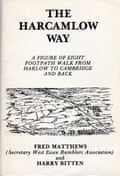
The Harcamlow was one of many inventive collaborations between Fred Matthews, secretary of the West Essex Ramblers group, and his fellow rambler Harry Bitten. They published a guidebook, The Harcamlow Way , in 1980, now long out of print. I bought the only copy I could find online for £23.90 – quite steep for a battered, 50-page booklet. But this first edition walking guide helped unlock local landscapes for me, with their ancient tracks and tumuli, bluebell woods and fields of poppies.
Bitten’s pen-and-ink sketches of a church spire or thatched cottage in the corner of his hand-drawn maps are part of what makes this little book a here-be-dragons treasure map. Warnings in capital letters suggest the hazards of research: “(BE VERY CAREFUL. THE RIVER STORT IS ON THE FAR SIDE OF THE BANK. DO NOT RUN!)”
Matthews died in 2009 and Bitten in 2017, but a legacy of green diamonds across several OS maps invites walkers to follow in their energetic footsteps. In the decade before the Harcamlow, they devised the Three Forests Way , a circular route that links Hatfield, Hainault and Epping Forests, and St Peter’s Way , from Chipping Ongar to the Essex coast. I followed both these walks, finding prehistoric earthworks under bronzed beech trees, or the seventh-century chapel of St Peter-on-the-Wall , overlooking marshes and wild shell beaches.
In 1984 they published a guide to the Essex Way , an 82-mile trek across the county from Epping to Harwich. I walked that too. The most memorable part was approaching the wide Stour estuary with the high tide and reeds glowing gold in the setting sun. The adventures these two fellow walkers inspired have brought me more than weekend fun. My own, slightly quixotic project to publish updated guides to the Harcamlow Way was an unexpected milestone in my career as a travel writer. It led to further guidebooks and regular work for magazines, driven by a Bagginsesque curiosity about what’s outside the door.
In their characteristically understated introduction to the original Harcamlow Way guide, Matthews and Bitten describe the route starting and finishing beside the River Stort, which is less than a mile from my house. The walk goes on, they write, “over a number of low hills and through wooded valleys” to discover “a land of views, flowers and birdsong”. They recommend taking the time to wander around villages along the way and mention several interesting relics for “railway enthusiasts”. Highlights for me include wall paintings in some of the old churches: a dancing devil in Kingston, near Cambridge, and fragments of St George in round-towered St Mary’s, Bartlow , where only the dragon remains. The gentle preface ends by wishing readers “happy walking and fine weather”. Phoebe Taplin, author of 11 guidebooks, including two on the Harcamlow Way
‘It has a determination to winkle out forgotten corners that I love’
Buildings of England: York and the East Riding by Nikolaus Pevsner

Scanning my shelves of travel books and guides, I notice the gaps: the books that went travelling with me, but never returned. Geoff Crowther’s Africa on a Shoestring, the first one I ever bought. Without that book, Sudan might never have happened for me, certainly not Darfur and Zaire. Sadly, Geoff died recently : I hope he knew how many vivid experiences he had enabled.
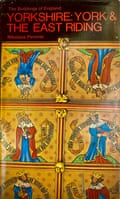
Other books barely survived their journeys, spines broken, pages missing and covers battered: the Moon Guide to Indonesia, for example, the classic product of a generation of hippy travel guide writers who knew how to weave magic with practicality. But for me it’s often the book that is not a direct travel guide that somehow inspires.
The Buildings of England series (part of the Pevsner Architectural Guides ) has an air of nostalgia for ancient traditions and a determination to winkle out forgotten corners that I love. Written by Nikolaus Pevsner, a wartime German refugee and anglophile, the first volume was published in 1951 (followed by 45 others, all still in print) and set the standard for architectural merit in heritage buildings.
I first came across the books when I was giving a talk on travel writing in a building just off Micklegate in York. I wanted some information on that street because I’d decided, during the interval, to suggest a walking rediscovery of what were familiar surroundings to everyone present. Pevsner came up trumps: Micklegate “is without any doubt the most rewarding street in York” it begins, going on to detail the historic architectural features and dates of every significant building.
The language is precise and unemotional, yet it succeeds. I walked York with new eyes, carrying it with me, finding gems like Lady Peckitt’s Yard behind the house of Sir Thomas Herbert in Pavement. Pevsner never digresses so does not mention that Herbert stood on the gallows with Charles I, but once I had the name I chased that up elsewhere.
Once I was into the book, other gems came up and prompted trips. I noticed a reference to the village of Rudston that I had driven through many times on my way to the Yorkshire coast. “In the churchyard,” I read, “the largest standing stone in Britain, 25 and a half feet high and 6 feet wide.” I have since sat under that stone many times, wondering how neolithic humans moved it. Sometimes the descriptions just demand a visit: the Jacobean house at Burton Agnes in East Yorkshire is described as possessing, “the most crazily overcrowded chimneypiece of all England”. I just had to go , discovering a treasure with wonderful interiors and gardens. It’s this enduring power of Pevsner to inspire trips, I believe, that has allowed it, somewhat improbably, to survive. Kevin Rushby
‘ It became the inspiration for cycle rides exploring the beautiful, almost secret Kent villages to the south of Canterbury’
The Shell Guide to Kent by Pennethorne Hughes
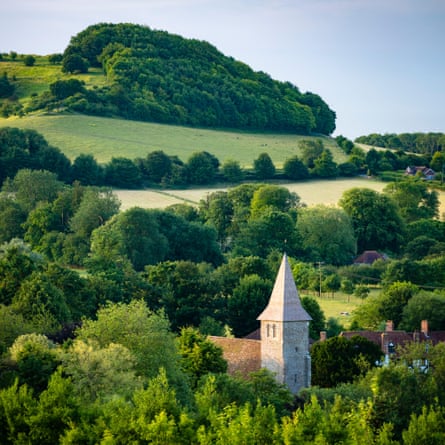
Opening a new London travel bookshop, Daunt Books, in Marylebone in 1990, a set of Shell County Guides were necessarily among the first books to be shelved. Originally conceived and edited by John Betjeman and a coterie of his writer and artist friends in the 1930s, these handsome glovebox guides would reveal a Britain beyond the castles and stately homes. Long out of print, they remain iconic, loved for their wonderful black-and-white photography and their often waspish humour, but most of all for opening up a lesser-known countryside of follies and quiet villages with forgotten histories.
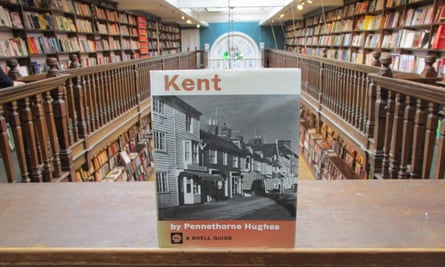
On quieter days I would browse the Kent Shell guide, by Pennethorne Hughes. It follows Betjeman’s format of introductory essay and accompanying gazetteer, and it quickly became the inspiration for weekend cycle rides exploring the beautiful, almost secret villages to the south of my then home in Canterbury, and especially the stunning Elham valley. I’ve never forgotten that first Shell-inspired trip made one clear summer day 20 years ago.
Riding south through busy Bridge, with its “cheerful dignity”, I followed the quiet lane that follows the Nailbourne stream, to Bishopsbourne. From the guide I learned that Joseph Conrad had lived in two villages in the area, and planned the route to take in both. Bishopsbourne – where Conrad died at his house, Oswalds – was still as Hughes described: “an enchanting place, green and peaceful” and blessed by a fine pub.
From here beautiful rolling hills led me on through pleasant Barham to the valley’s crowning glory – Elham. Hughes is a mite sniffy – “it remains an attractive village in spite of new buildings” – but that day Elham appeared the perfect Kentish village with its charming square and church tucked below the downland. If Hughes’ comment suggests snobbishness to a modern reader, it’s also true that the language of the guides is always deliberately plain and accessible – no architectural glossary required here.
A mile or so further on in Lyminge, Hughes diverted me to the pretty church on the site of a seventh-century abbey dedicated to St Ethelburga. I then headed south-east to Postling, a pretty hamlet where Conradlived in a gorgeous house by Pent Farm and was visited, Hughes tells us, by Shaw, Wells and Henry James. Then it was time to toil up and over the ridge of the downs with fine views of Romney Marsh and across to Dungenness.
Fine country roads through Hastingleigh and the charming villages of Petham and Waltham completed a memorable day that bore ample testament to Hughes’s words “To know one parish in detail is perhaps the work of a lifetime: to know a whole county is impossible. But in Kent it is fun to try.”
Twenty years on, and thanks to his excellent guide, I’m still having fun. Brett Wolstencroft, manager of Daunt Books , Marylebone, London
- Literary trips
- Walking holidays
- England holidays
- United Kingdom holidays
- Travel writing
Most viewed

Sign Up Today
Start your 14 day free trial today

The History Hit Miscellany of Facts, Figures and Fascinating Finds
Get inspired, see the world, discover history
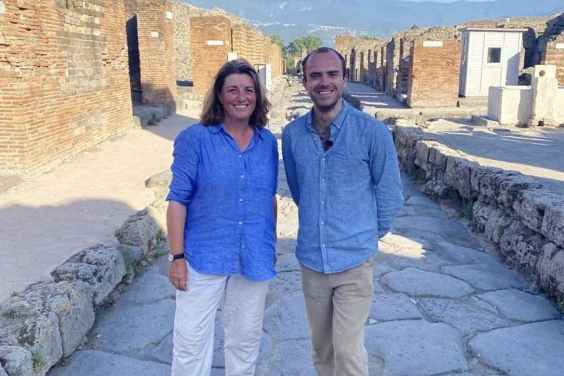
Uncover Pompeii and Herculaneum with Sophie Hay and Tristan Hughes

Rediscovering King Richard III with Matt Lewis
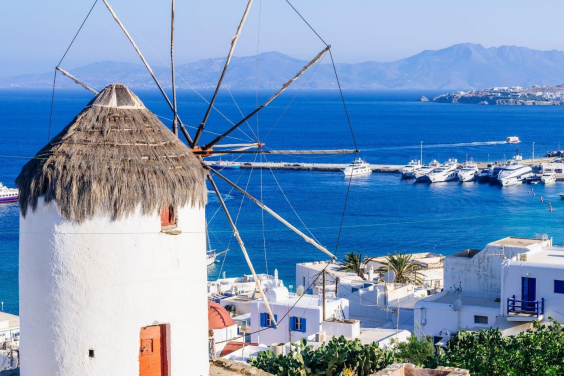
Discover the Magic and Mythology of the Cyclades with Victoria Hislop
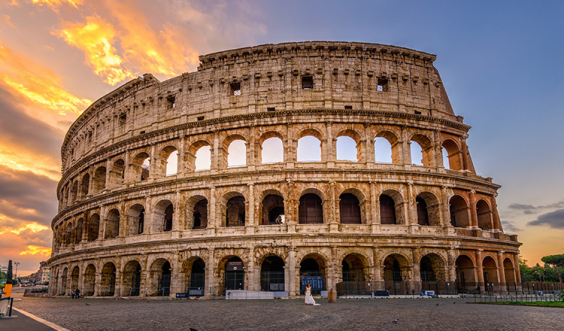
The Best Ancient Roman Sites in Italy
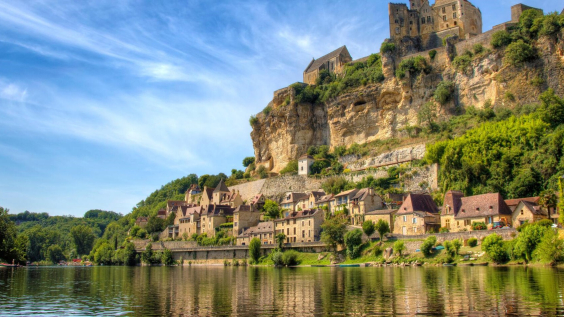
Experience the Art, History and Medieval Towns of the Dordogne
Historical experiences.
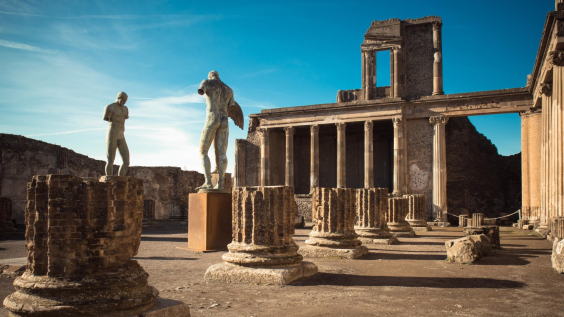
Uncover Pompeii with Sophie Hay and Tristan Hughes

Tour Colditz with Guy Walters

Travel Scotland’s Highlands & Islands
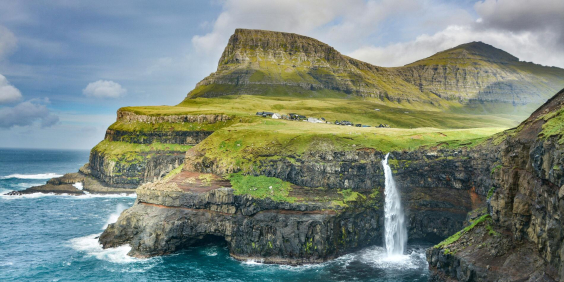
Discover the history, culture and dramatic landscapes of the Faroe Islands

Sail the Danube and see the Lipizzaners with Lucy Worsley
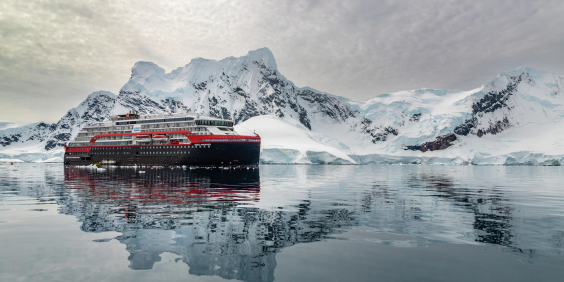
Antarctica Expedition Cruise
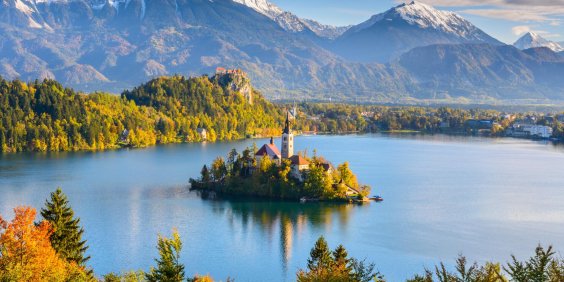
Taste the flavours of Slovenia and see its spectacular natural landscapes
Explore italy.

Unmissable Historic Sites in Italy

10 Best Roman Amphitheatres to Visit in the World

Roman Temples: The Ultimate Guide

10 Key Historic Sites to See in Rome
Travel around european history.
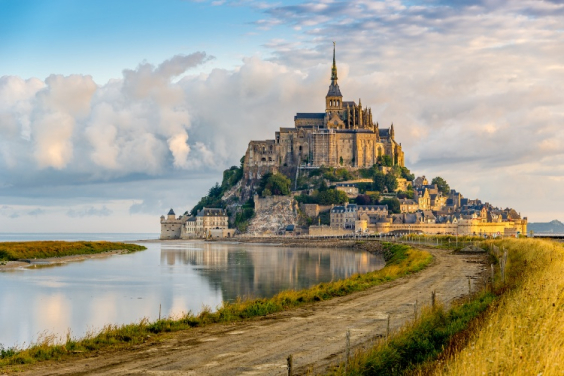
10 of the Most Striking Castles in Normandy
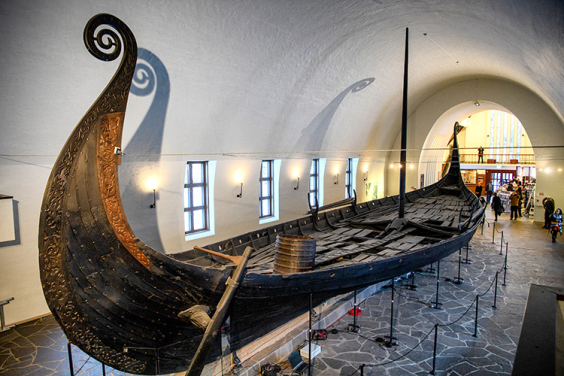
7 Important Viking Sites and Museums to Visit in Denmark
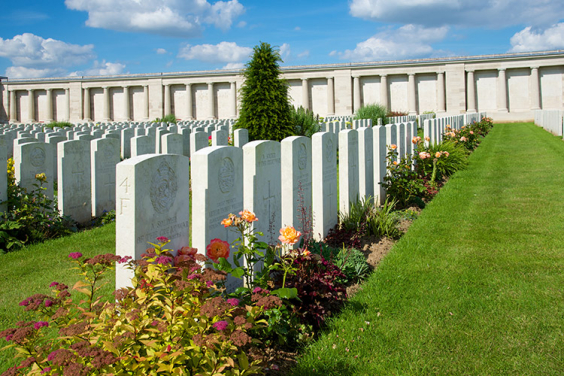
Explore the History of the Western Front: 10 World War One Battlefield Sites in Europe
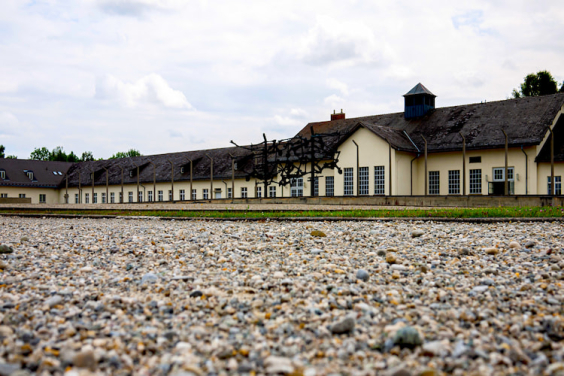
6 Important Holocaust Sites, Museums and Memorials in Germany
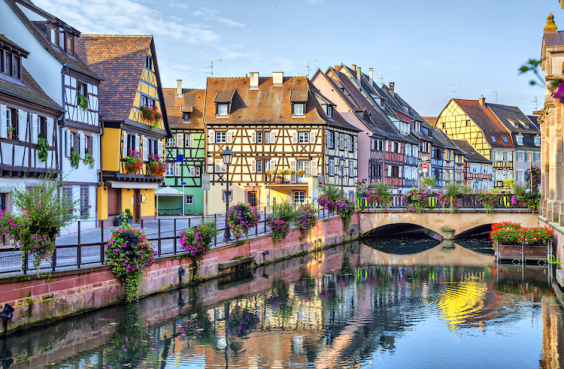
Charming Medieval Towns to Visit in Europe
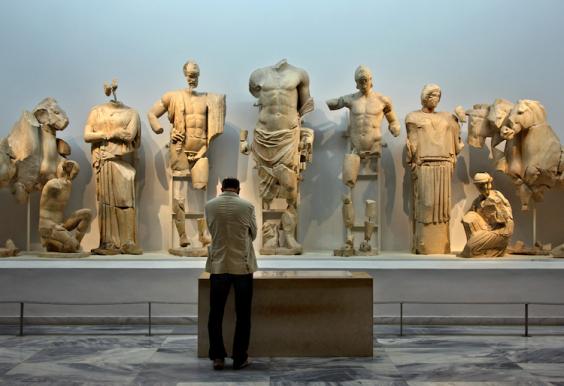
8 Unmissable Museums to Visit in Greece
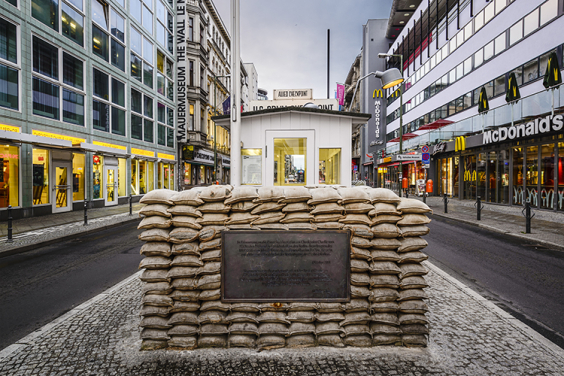
5 Key Cold War Sites and Monuments in Berlin
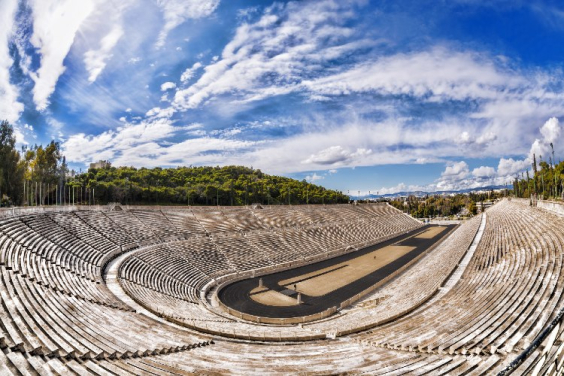
10 Must-See Historical Attractions in Athens
Historical experiences in the united kingdom.
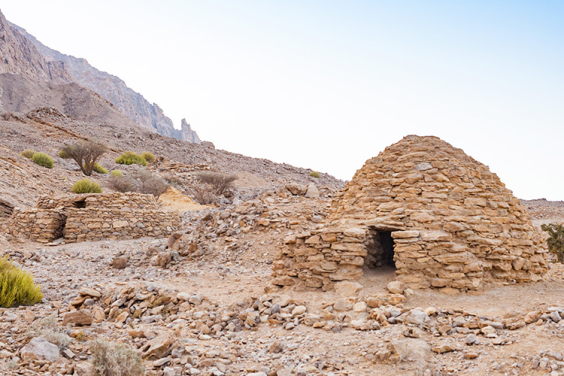
The 10 Best Bronze Age Sites to Visit in the World
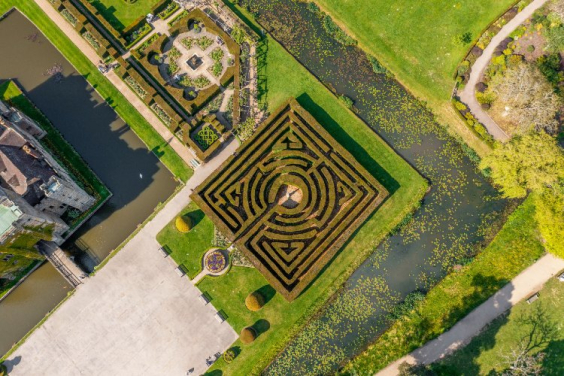
5 Historic Mazes to Explore in England
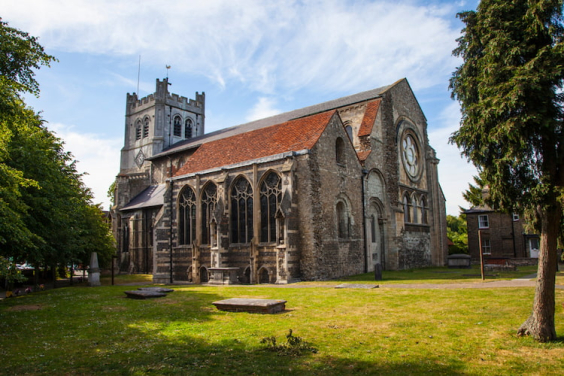
Explore the Key Sites of Henry VIII’s Life and Reign
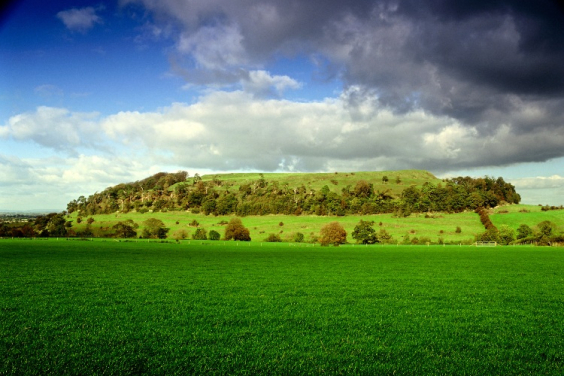
5 of the Best Hillforts in England

10 British Churches Ruined During the Dissolution of the Monasteries
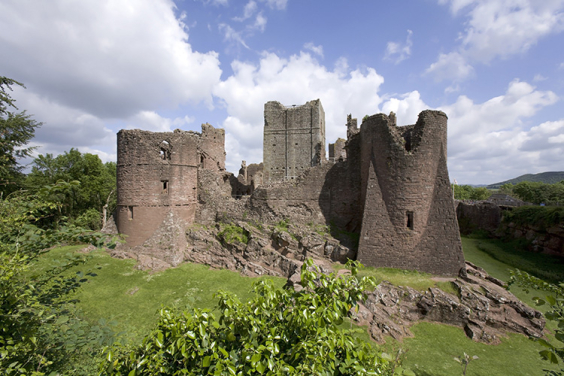
The Best English Civil War Sites and Battlefields

11 British Royal Residences
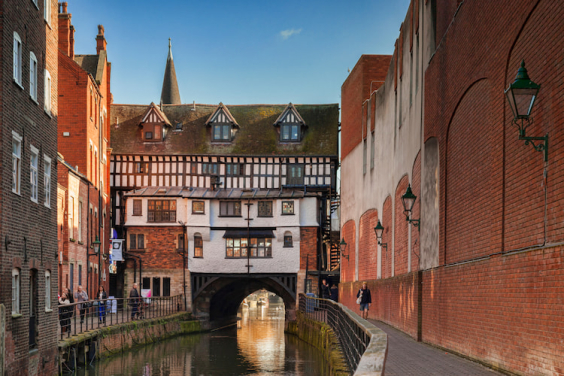
10 Must-See Medieval Landmarks in England
Historic places to stay.

10 of the Oldest Hotels in Scotland
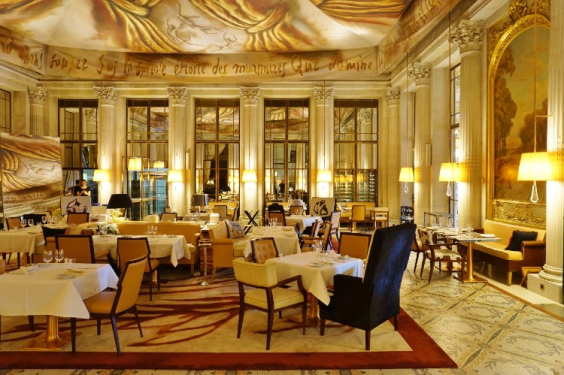
5 Historic Hotels in Paris

10 of the Oldest Hotels in the World

Amazing Castles You Can Sleep in Around the UK
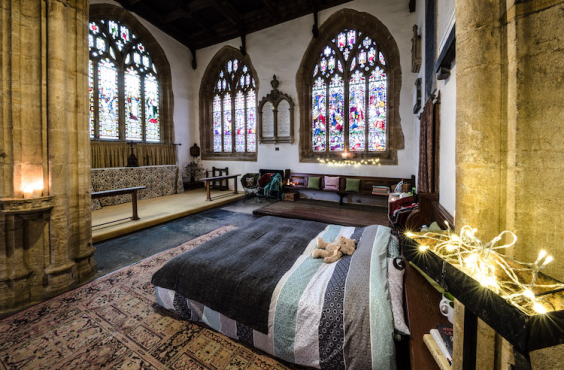
10 Historic British Churches You Can Spend the Night In

12 of the Most Haunted Hotels in the World

5 Fascinating Historic Hotels in Berlin
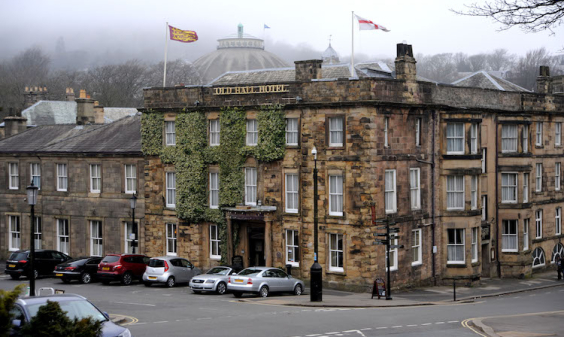
10 of the Oldest Hotels in England
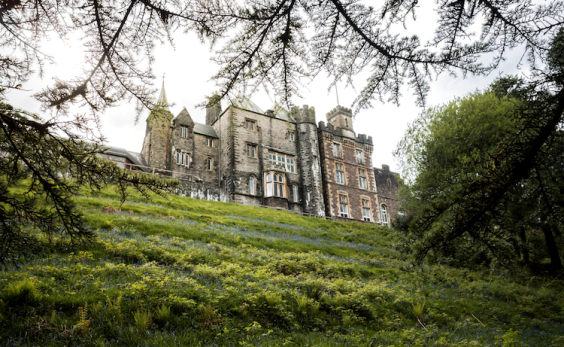
7 of the Most Haunted Hotels in the UK
Explore the ruins of the ancient world.
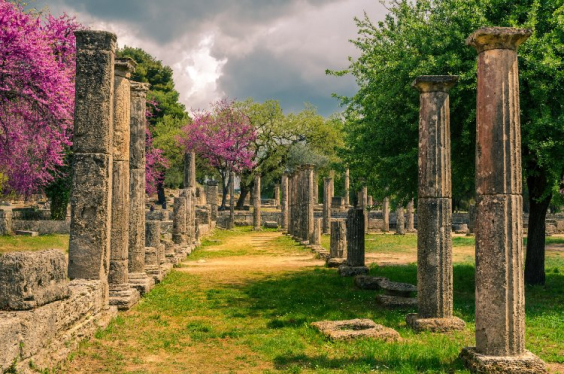
10 Dazzling Ancient Greek Ruins in Greece
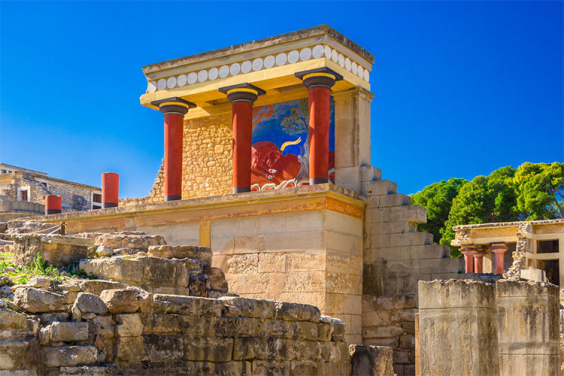
10 Best Ancient and Archaeological Sites in Crete

10 Historic Sites Associated with Constantine the Great
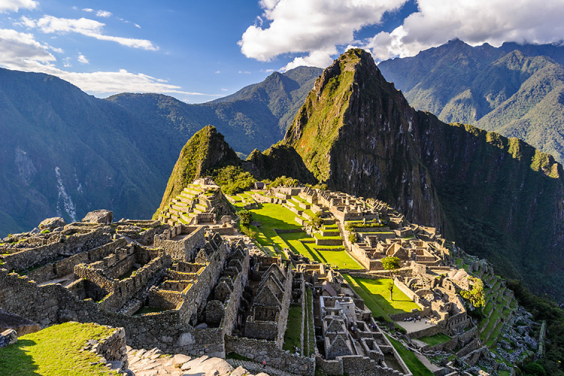
The 10 Best Historic Sites in Peru
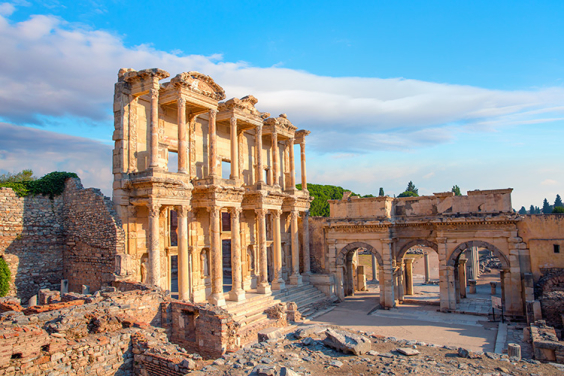
Discover the Ancient World of Alexander the Great
Travel through culinary history.
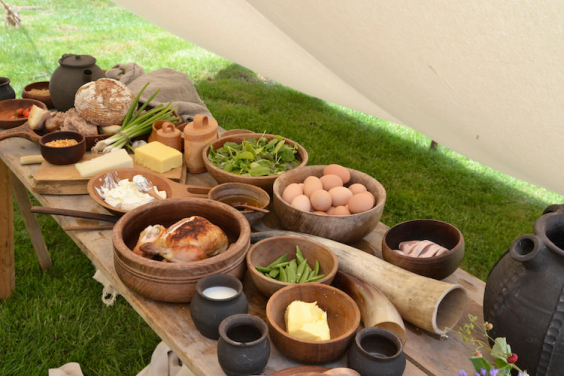
What Did the Anglo-Saxons Eat and Drink?

What Did the Tudors Eat and Drink? Food From the Renaissance Era

How Did Potatoes Become Political in Wartime?
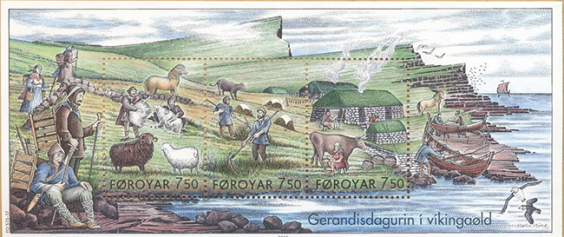
What Did the Vikings Eat?

What Did the Romans Eat? Cuisine of the Ancient Romans

French Baguette: How A Humble Stick of Bread Became a Cultural Icon

Etiquette and Empire: The Story of Tea

What Did the Aztecs Eat and Drink? Mexican Food of the Middle Ages
The evolution of travel and tourism.
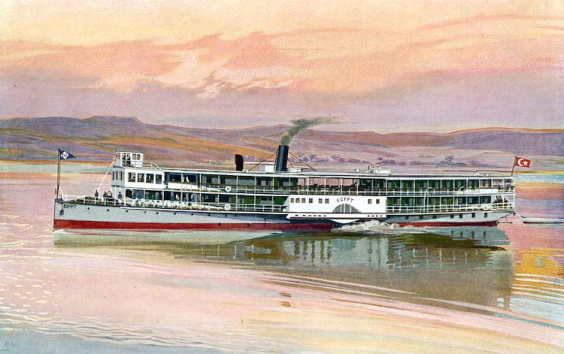
Thomas Cook and the Invention of Mass Tourism in Victorian Britain
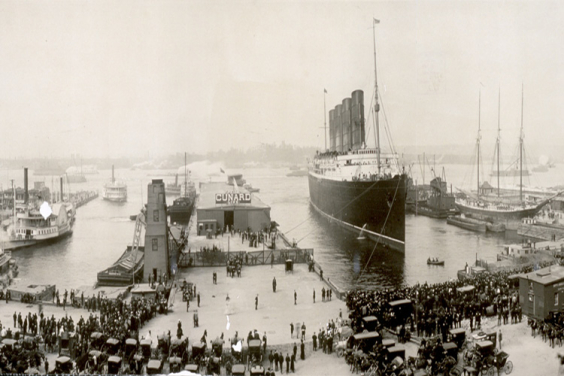
How Ocean Liners Transformed International Travel
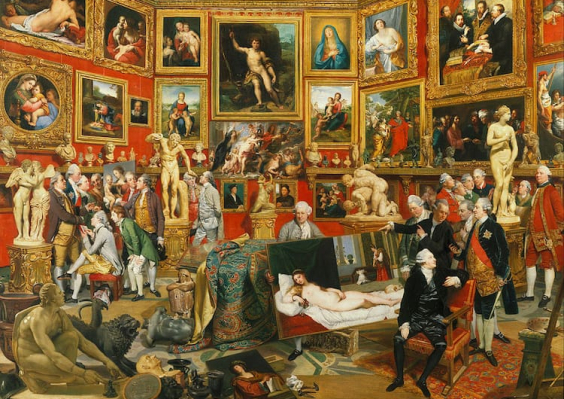
What Was the Grand Tour of Europe?
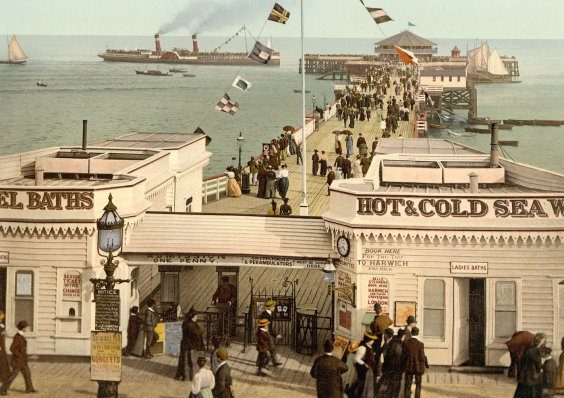
The Rise and Demise of Britain’s Victorian Pleasure Piers

The Orient Express: The Most Famous Train in the World
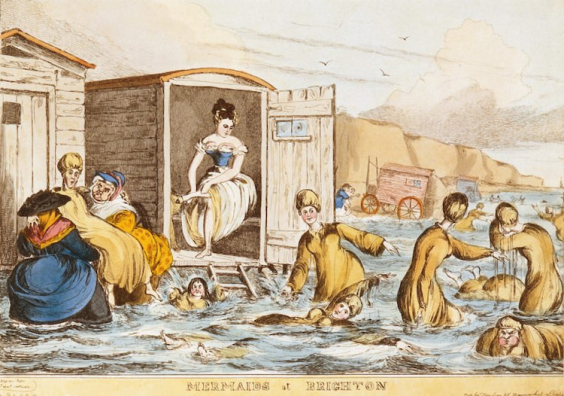
What Was a Victorian Bathing Machine?
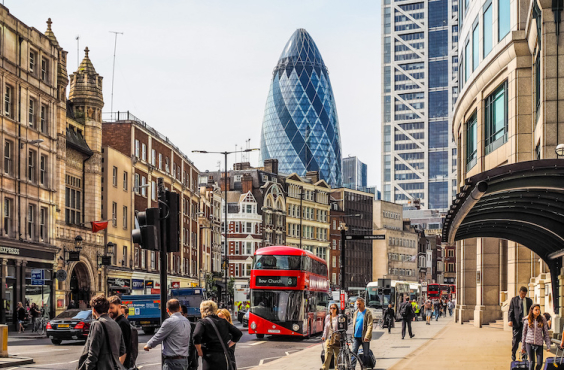
Ermine Street: Retracing the Roman Origins of the A10
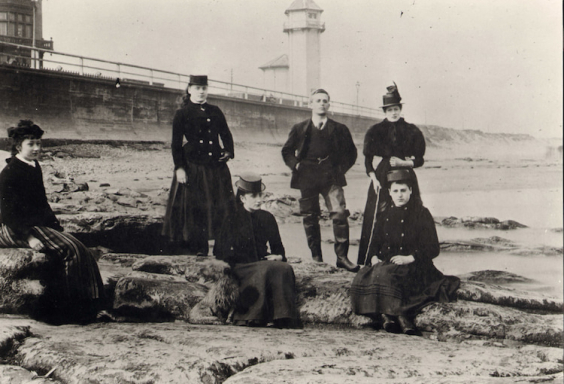
Deck Chairs and Donkey Rides: Visiting the Seaside in Victorian Britain
Historic places to eat and drink.
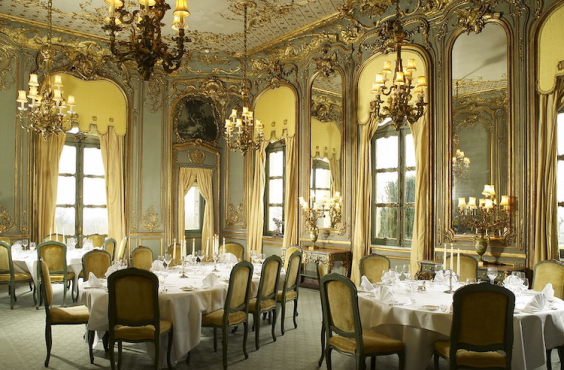
Where to Wine and Dine like Royalty in the UK
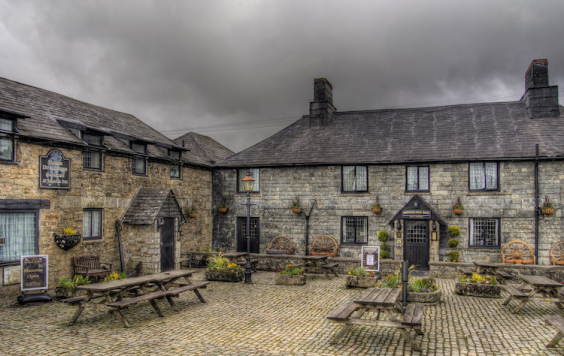
8 of the Most Haunted Pubs in Britain

The 5 Most Historic Cafés in Paris
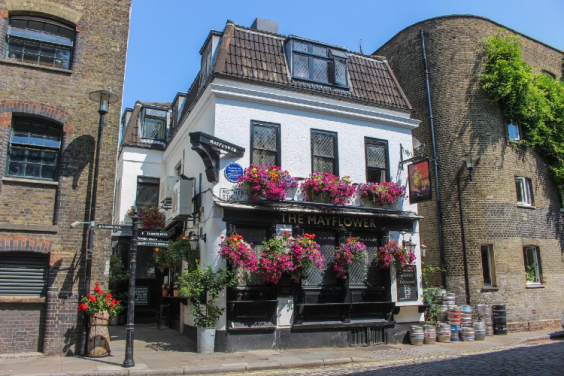
The Oldest Pubs in Britain
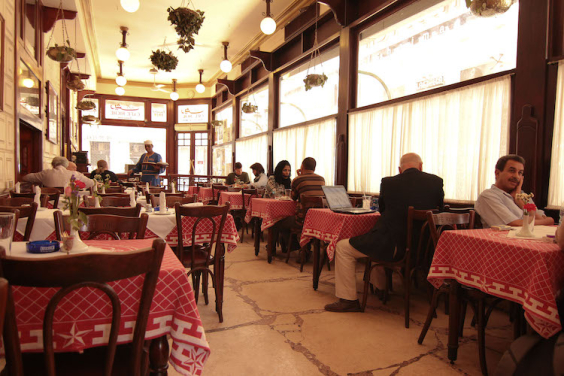
5 Historic Cafés to Visit in Cairo

5 of the Oldest Restaurants in London

Best London Pubs: 5 Historic Boozers
Historical experiences in the usa.

Unmissable Car Museums to Visit in the USA
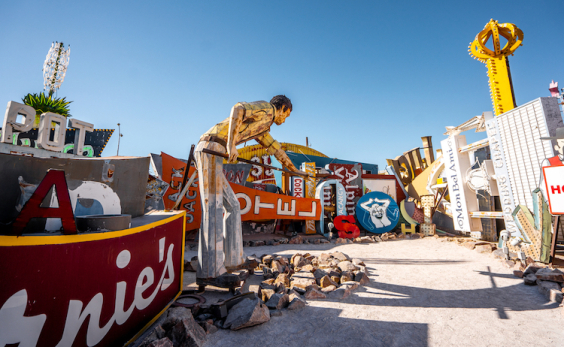
Weird and Wonderful Museums to Visit in the United States
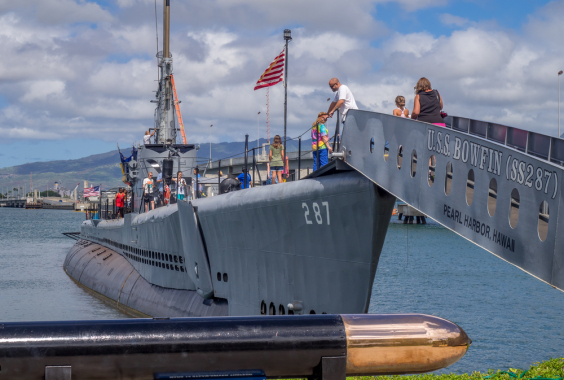
Important Pearl Harbor Sites to Visit in Hawaii
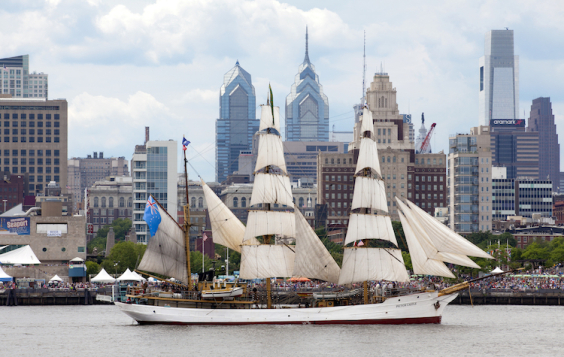
6 Blackbeard the Pirate Sites to Visit in the US
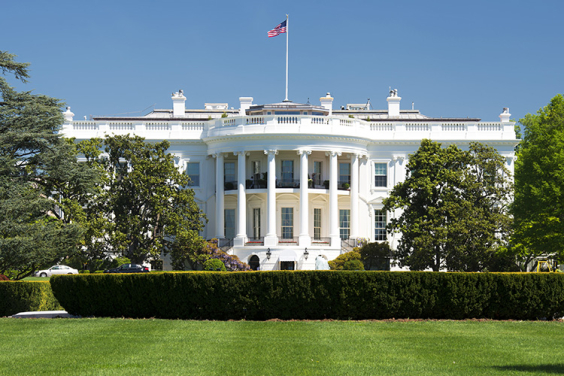
The White House: The History Behind the Presidential Home

5 Key Cold War Sites and Monuments in the United States
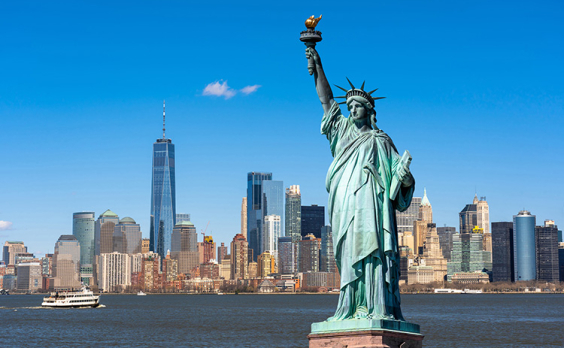
30 of the Best Historic Sites in the United States
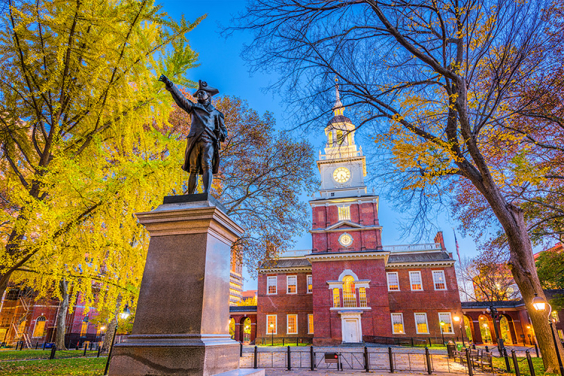
10 Revolutionary War Sites and Battlefields in the United States
Travel in photos.
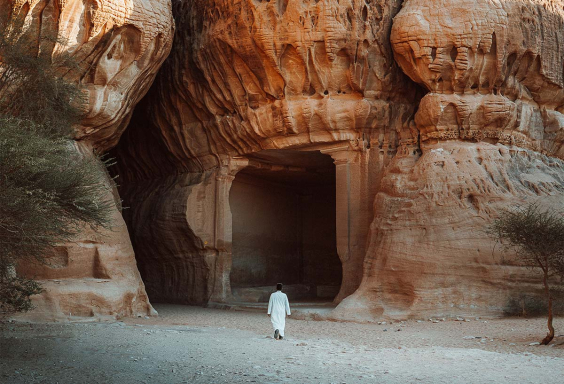
In Pictures: Historic Photographer of the Year 2022

10 Photos That Changed the World
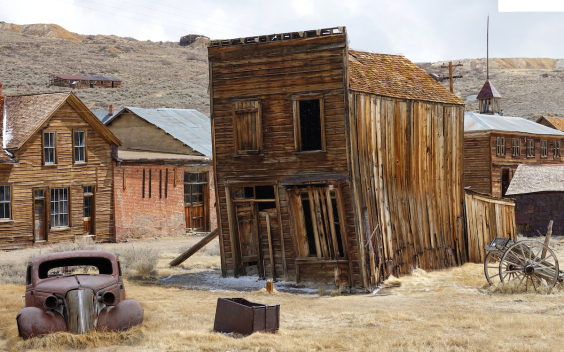
Eerie Photos of Bodie, California’s Wild West Ghost Town
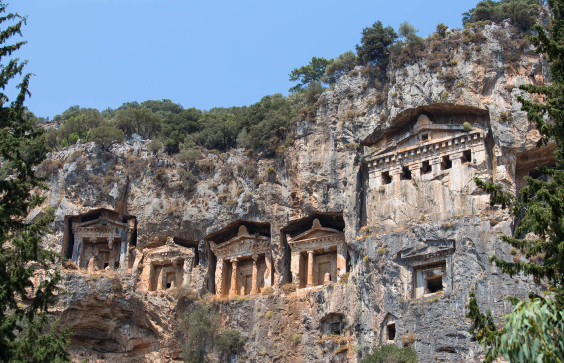
10 Majestic Ancient Structures Carved into Mountains
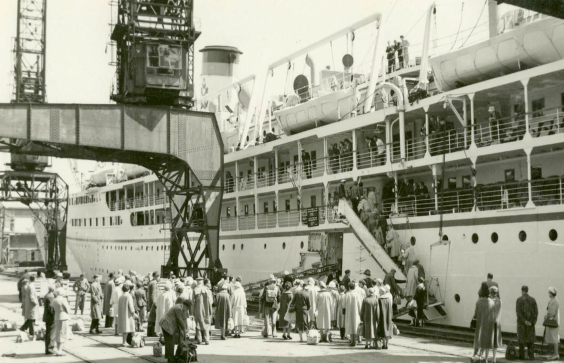
Photos of History’s Great Ocean Liners
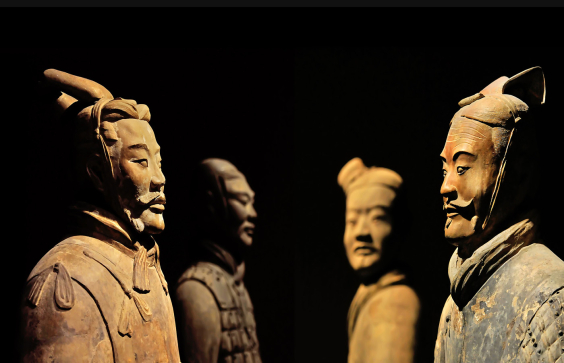
In Photos: The Remarkable Story of Qin Shi Huang’s Terracotta Army
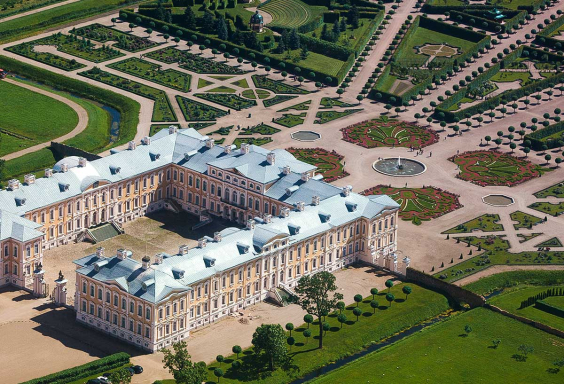
10 Magnificent Historic Gardens Around the World
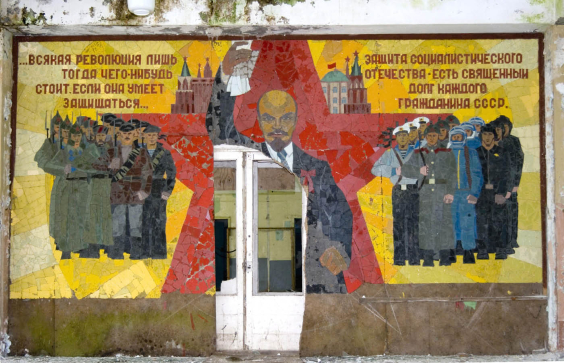
Stark Images of Abandoned Soviet Military Bases
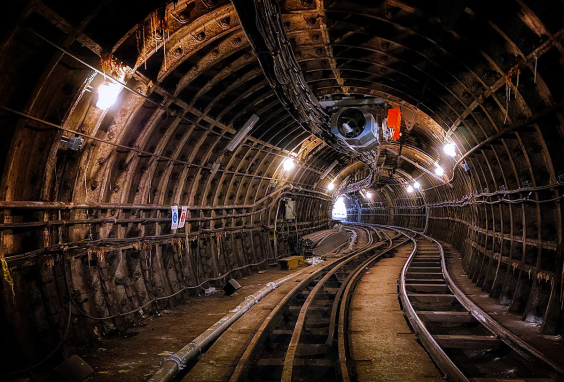
13 Haunting Photos From the Postal Museum’s Abandoned Mail Rail
Discover history around the world.
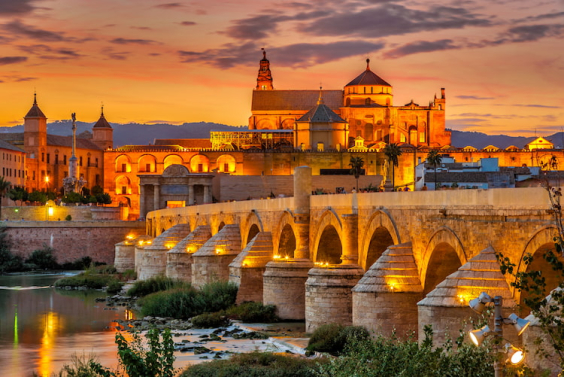
The 8 Best UNESCO World Heritage Cities
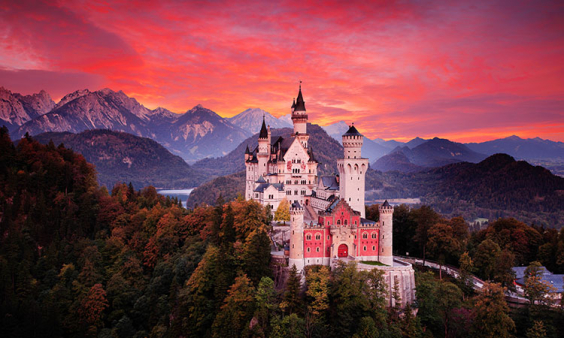
20 of the World’s Most Beautiful Castles

10 of the Most Famous Shipwrecks Around the World

10 of the World’s Most Beautiful Cemeteries to Visit

8 Fascinating Sex Museums to Visit Around the World
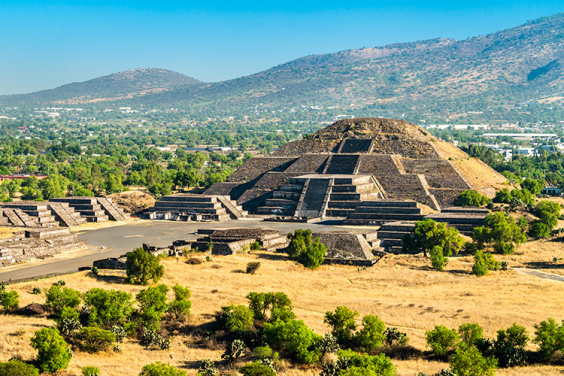
15 Must-Visit Pyramids Around the World
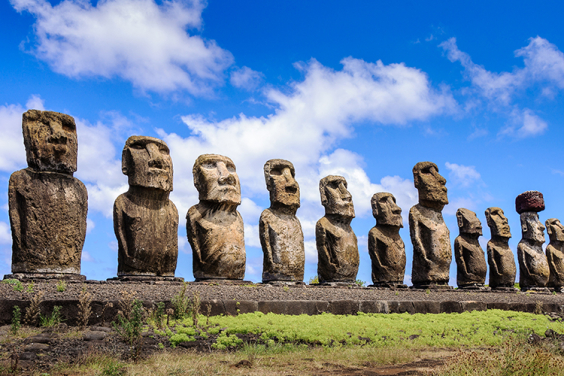
The Top 10 UNESCO World Heritage Sites
Popular sites and landmarks.
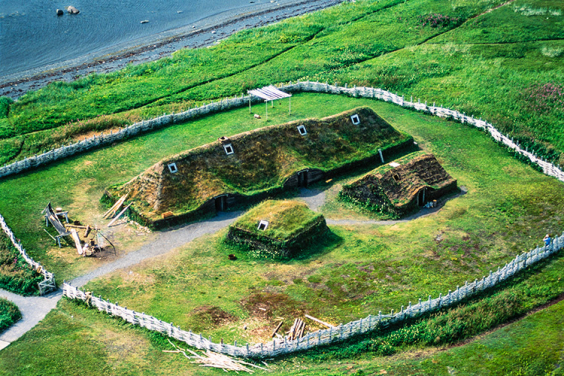
L’Anse aux Meadows
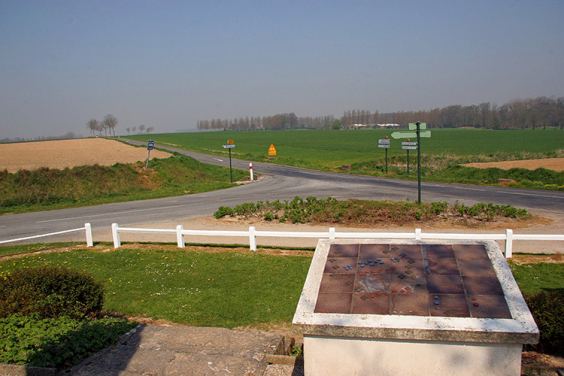
Agincourt Battlefield
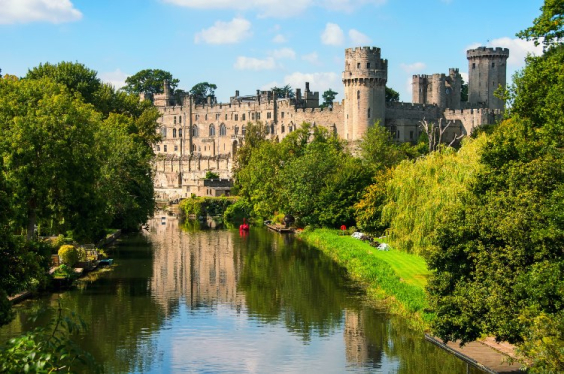
Warwick Castle
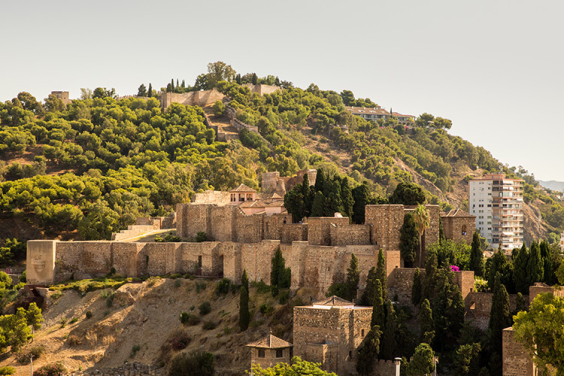
Alcazaba of Málaga

Cirencester
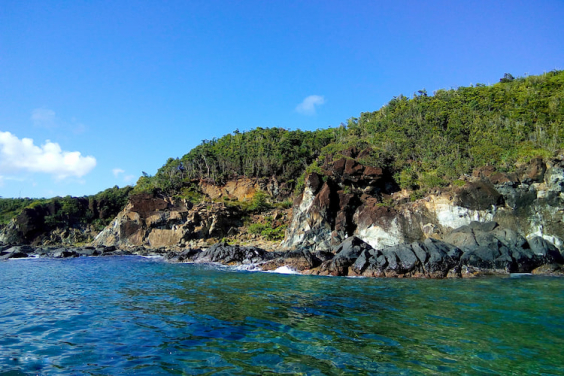
Homonhon Island

The Catacombs of Paris
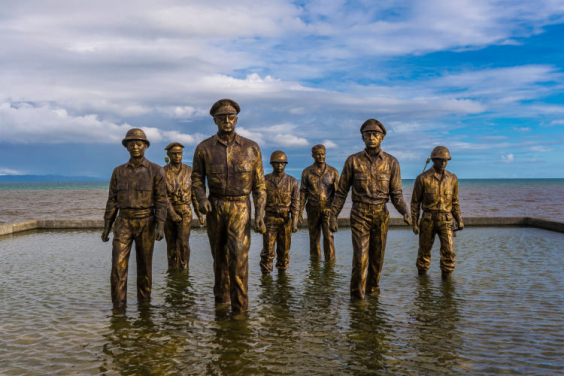
Leyte Landing Memorial
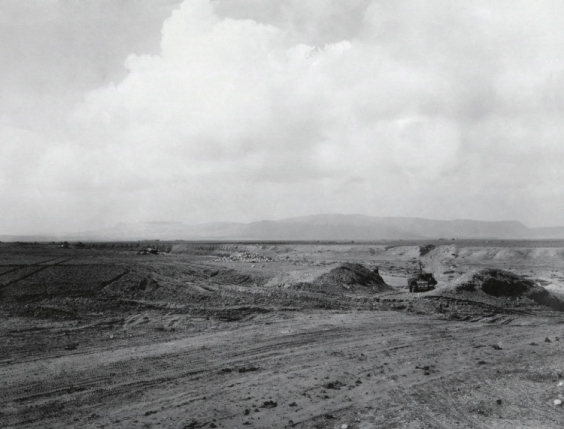
The Kasserine Pass
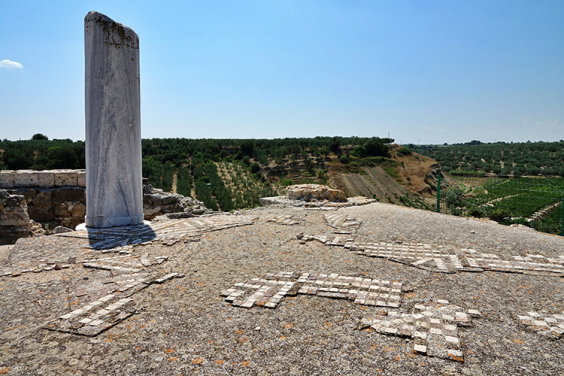
Cannae Battlefield
Visit locations linked to historical figures.

5 of the Best Christian IV Historical Sites in Scandinavia


10 Historic Sites Associated with Elizabeth I
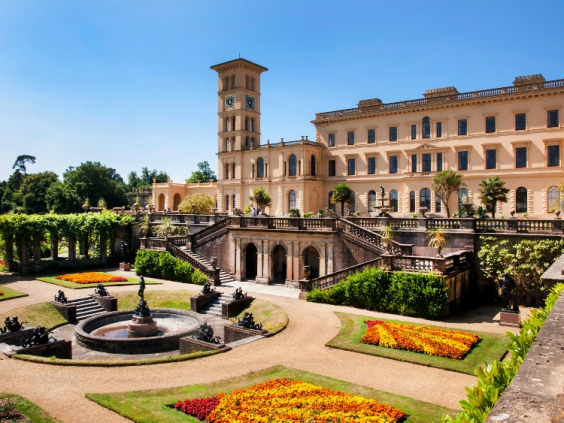
10 Historic British Sites Associated With Queen Victoria
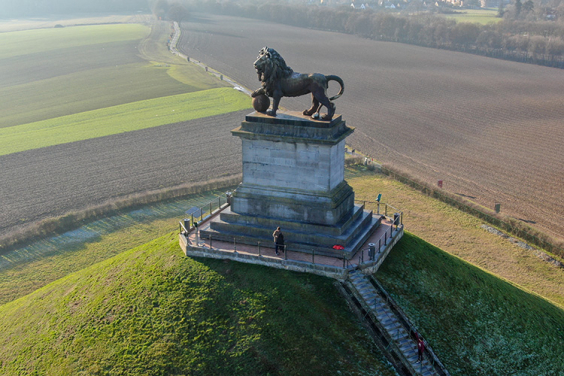
The Duke of Wellington: Where History Happened
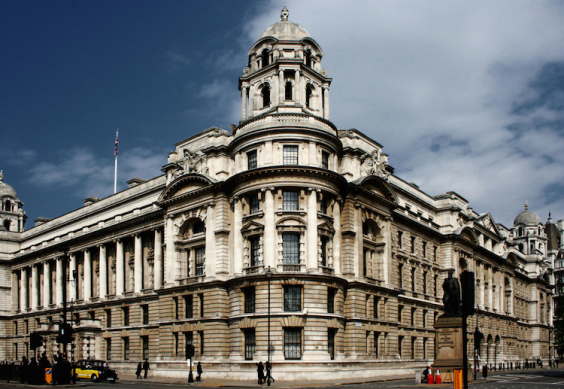
Ian Fleming’s London: 5 Key Historical Locations to Visit
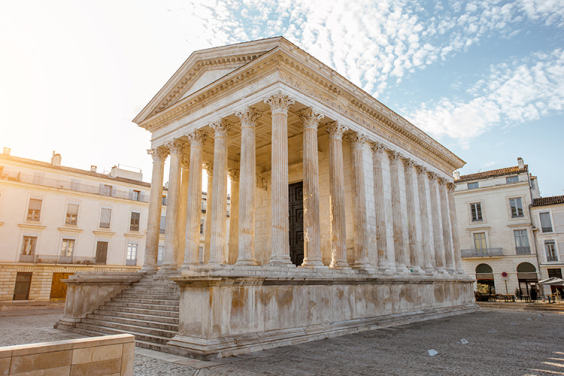
10 Historic Sites Associated with Emperor Augustus
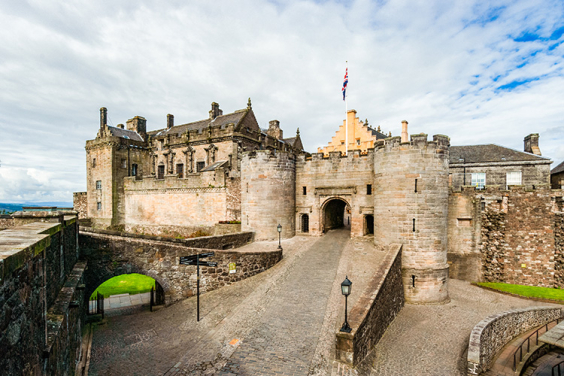
Historic Sites Associated with Mary Queen of Scots
Historical travel

- 1 Understand
- 2.2 Antarctica
- 2.3.1 Across Asia
- 2.3.2 Middle East
- 2.3.3 East and Central Asia
- 2.3.4 South and Southeast Asia
- 2.4.1 Pan-European
- 2.4.2 Central and Eastern Europe
- 2.4.3 Nordic countries
- 2.4.4 Northwestern Europe
- 2.4.5 Southern Europe
- 2.5 Oceania
- 2.6.1 Mexico history series
- 2.6.2 United States history series
- 2.7 South America
- 3.1 The great epics
- 3.2 Espionage history
- 3.3 Science and technology tourism
- 3.4 History of justice
- 3.5 Military tourism
- 3.6 Exploration
- 3.7 Philosophy tourism
- 3.8 Political history
Historical travel includes various kinds of destinations, from Stone Age cave paintings to Cold War installations of the late 20th century. History is a central focus for some travellers and some destinations, and almost every traveller in most places will at least have a look at some old buildings or the local museums .
Understand [ edit ]
The early history of life on Earth is studied in paleontology , mainly through fossils. The earliest known fossils of the genus Homo date back at least 4.4 million years. Our species, Homo sapiens , is thought to have evolved between one and two hundred thousand years ago. Some homo sapiens migrated from Africa to the Middle East about 100,000 years ago and to Europe about 60,000 years ago. For purposes of this article, anything after 50,000 BCE counts as history. Naturally this overlaps considerably with our archaeology article.
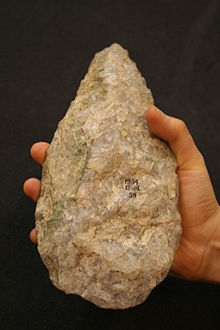
The boundary between paleontology and archaeology , which deals mainly with the study of ancient human artifacts, is not at all well-defined. The oldest known tools made by hominids — Oldowan stone tools excavated in the Olduvai Gorge of Tanzania — are about 2.6 million years old. Australopithecines, of the genus which included direct ancestors of Homo , had cruder stone tools starting at least 3.3 million years ago. Controlled use of fire is apparently at least a million years old.
The boundary between prehistory and history is commonly drawn at the first local written records, which date back to around 3,000 BCE in Ancient Egypt and Ancient Mesopotamia , but as recently as the 19th century in some other parts of the world. Widespread literacy was rare in most of history and even when commoners could read and write, they often had no or limited access to durable material on which to write. As such, the written record is often focused on what the ruling elites deemed noteworthy and what can be learned about the everyday lives of common people is often only revealed indirectly or through archeology. "Oral history" or what was transmitted from generation to generation through poems, songs, legends and other means of storytelling was often dismissed by "Western" historiography but is now seen as a vital source of historical information instead of or in addition to the written record.
The distinction of history and pre-history by the availability of writing alone is not unanimously accepted and other markers are used as well. Pottery, the wheel, the first domesticated animals (dogs), and the first evidence of crop cultivation all appeared between 30,000 and 20,000 BCE. A number of other important developments took place between about 12,000 BCE and 3,000 — the Neolithic revolution transformed some societies from purely hunting/gathering to being based on agriculture, irrigation, cities, metalworking, and domestication of many more animals. During the civilizations of Greece and Rome , historians demonstrated their interest in history with contributions such as the Seven Wonders of the Ancient World , a list of important works of art and architecture in the region.
The line between "historical" and "modern" is arbitrary; some draw it around the time of the European Renaissance or slightly later with the great voyages of discovery starting with Columbus and Vasco da Gama . For the purposes of a travel guide, it can be convenient to draw it at the Industrial Revolution in the 18th and 19th centuries, when cities, industries and railroads began to expand fast, displacing older structures and rural folk culture. Surviving settlements and city districts from before the mid-19th century which were designed before and survived the advent of cars and trains, referred to as old towns , are typically smaller and more compact (and thus walkable) than modern cities. However, during the 19th and 20th centuries, older styles of art , architecture and furnishing were revived and reproduced, so that many buildings that look ancient might be less than 100 years old. There might even be a neo- Gothic train station or an Ancient Greek-style building in the Americas.
Deserted settlements can be archaeological sites or ghost towns . Pioneer villages can be authentic or artificial. In some places you quite literally trip over historical remnants, whereas other historic sites have been painstakingly preserved and restored. While the latter is usually more interesting it may seem "fake", "sterile" or even "artificial" when done badly. Also — with few exceptions — there are fewer lines (if any) for historical places that people actually still live in (like old towns ) or use for their original purpose (like many churches, mosques, synagogues, and temples) than for museums or "theme parks".
Nostalgia tourism aims at recent history, remembered by people alive today (especially the middle-aged and elderly ). As of the 2020s, it includes World War II , as well as postwar United States , Cold War Europe and the Soviet Union .
Some historical sites are threatened, either for natural causes or human-influenced ones like war or neglect. As of the 2020s, coastal cities such as Venice and New Orleans are sinking into the sea, ancient ruins in Iraq and Syria were damaged by wars of the 21st century, and many indigenous cultures around the world have only a handful of survivors left. Future generations are very unlikely to experience these places as they are today, as they will change even if they survive. Responsible travel can provide incentives to save them, or at least their memory.
Continents and regions [ edit ]
Africa [ edit ].
Africa is the wellspring of the human race and therefore the site of the oldest finds of human remains, in locations ranging from South Africa to Ethiopia . See paleontology .
Africa was also home to some of the world's oldest civilizations, particularly Ancient Egypt but also Nubia and Ethiopia ; see Ancient African nations for an overview. A bit later in antiquity, Carthage dominated much of North Africa and was then conquered by the Romans , who did major construction projects in their African provinces as they did in all other parts of their empire, leaving behind substantial ruins. In addition, there were great empires in both the Sahel and Southern Africa in the centuries before European colonialism; some of these relics have been vandalized by Salafist extremists in the 21st century, such as those in northern Mali , but a lot is still standing. Perhaps the two most prominent pre-colonial sites in sub-Saharan Africa are Timbuktu in Mali and the Great Zimbabwe in Zimbabwe .
Arab and Berber/Moorish civilization also has left deep and lasting marks on North Africa, and the Arabs, especially the Sultanate of Oman , had far-flung tributary states down the East African coast, also known as the Swahili Coast , notably including Zanzibar , Kilwa Kisiwani and Mombasa . There are also many relics of European colonialism, including slave forts and other forts on the coasts. Locations associated with the trans-Atlantic slave trade , World War II battles , the fights for independence, and the fight against Apartheid in South Africa can also be visited; see 20th-century South Africa for the latter.

- Ancient African nations
- Ancient Egypt
- Churches in Ethiopia
- Great Zimbabwe
- Atlantic slave trade
- World War II in Africa
- 20th-century South Africa
- MV Liemba , built for the Imperial German Navy before World War I, and still in service as a ferry
- Workers’ Assembly Halls
Antarctica [ edit ]
The only unsettled continent has very few traces of human history. Some Antarctic islands, such as the South Georgia Island and South Shetland Islands , have remnants of the whaling industry. The remains of expeditions of the "heroic age" of Antarctic exploration can still be seen and some have been actively preserved or relocated to museums in Europe and elsewhere. Many former research stations have been abandoned to be "swallowed" by snow and ice, and there aren't always many traces visible.
Asia [ edit ]
Asia had some of the world's oldest civilizations, including those in Ancient Mesopotamia , the Indus Valley , Persia , Anatolia , Syria , Phoenicia , Israel , the Edomites and Moabites of Jordan , China , India and Java , to name a few. The Middle East contains the world's first cities; some old towns have been inhabited for three millennia or more. The Holy Land is sacred to Judaism , Christianity , Islam and the Baháʼí Faith .
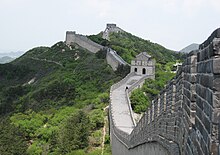
Iran has one of the oldest histories on earth. You may have heard names of emperors like Cyrus the Great or Ardashir I. The Achaemenid Empire was a really big empire which consisted of many states. The Silk Road played a very important role in supporting the economy of empire. The official language of the various Persian empires was usually Persian, but Aramaic and several other languages were also used.
The Asian nation that lacks archaeological relics is much more the exception than the rule. Much has been lost due to iconoclasm, such as in Malaysia several hundreds of years ago, when the relatively new Muslims destroyed Malay Hindu temples; in Saudi Arabia within the last few years, when numerous historical sites were razed in Mecca and other places; in Afghanistan , when statues of the Buddha that were thousands of years old were dynamited by the Taliban; and in Iraq and Syria in the first decade of the 21st century, when the Islamic State group destroyed many of the larger Babylonian and other historical relics they could get their hands on and spirited many of the smaller relics out of the country to sell on the black market.
Across Asia [ edit ]
- Silk Road , an ancient trading route that provided cultural and technology interchange between the East and West from the 2nd century BCE
- On the trail of Marco Polo , who traveled from Venice to China in the 13th century
- Voyages of Ibn Battuta , a 14th-century Muslim who travelled widely in Asia and Africa
- Istanbul to New Delhi overland , the "Hippie Trail" of the 1960s and 70s. Parts of what was the usual route back in the day have become too dangerous, but the journey is still possible using alternative routes.
Middle East [ edit ]
- Fertile Crescent
- Ancient Mesopotamia
- Persian Empire
- Troy , an ancient city famous for the legendary Trojan War recounted in Homer's Iliad
- Pre-Islamic Arabia
- Ancient Israel
- Islamic Golden Age
- Phoenecians
East and Central Asia [ edit ]
- Imperial China — the history of China prior to the establishment of the Republic of China in 1911
- Three Kingdoms — the period that China was tripartite divided into three dynastic states
- Western Xia — a lost ancient Chinese civilization (11th–13th century)
- Mongol Empire (13th–14th century)
- Pre-modern Japan — the history of the Japanese people prior to the Meiji Restoration in 1868
- Pre-modern Korea — the history of the Korean people prior to the Japanese occupation in 1910
- Japanese colonial empire
- Long March — a significant military event during the Chinese civil war in the 1930s that forged the Communist party
- World War II in China — the longest lasting and deadliest front of World War II
- Pacific War — the Second World War in the Asia-Pacific region
- Korean War — the 20th-century conflict at the beginning of the Cold War
- Tibetan Empire — history of the Tibetan people prior to the Qing conquest in the 18th century
- Jomon Prehistoric Sites in Northern Japan
- Minority cultures of China
- Indigenous Taiwanese culture
- Minority cultures of Japan
South and Southeast Asia [ edit ]
- Indus Valley Civilisation
- Maurya Empire
- Ahom Kingdom
- Mughal Empire (16th–early 19th century)
- British Raj (1858–1947)
- Khmer Empire
- Philippine Revolution (1896–1898)
- Indochina Wars
Europe [ edit ]

Europe has been more thoroughly excavated by archaeologists than any other continent. Southern Europe has archaeological sites from Ancient Greece , the Roman Empire and other ancient civilizations. Central Europe in particular is filled with medieval castles and early-modern palaces, with Old towns across the whole continent. Historical tourism itself has a long history in Europe; educational journeys such as the Grand Tour have been customary since the 17th century.
Europe's heritage has been scarred by war, especially World War II . The Holocaust was not just a genocidal campaign against the Jews; the Nazis also set out to methodically destroy Jewish heritage. Many beautiful synagogues were destroyed and never rebuilt due to — among other things — lack of a Jewish congregation, lack of funds or personal and institutional continuities. Jewish cemeteries, too, were vandalized. As the Second World War left many cities bombed beyond recognition, many city planners saw their opportunity to replace the "old fashioned" old towns with (in today's eyes) bland 1950s architecture and big streets and overpasses to make these places "ready for the automobile". Although the worst excesses have been turned back, many historical buildings that survived the wars were torn down in this somewhat iconoclastic frenzy.
Pan-European [ edit ]
- Prehistoric Europe
- Medieval Europe
- Protestant Reformation
- Napoleonic Wars
- World War I
- D-Day beaches
- Holocaust remembrance
- Cold War Europe
Central and Eastern Europe [ edit ]
- Austro-Hungarian Empire
- German Empire
- Hanseatic League
- Polish–Lithuanian Commonwealth
- Russian Empire
- Soviet Union
- Thirty Years' War
- Minority cultures of Russia
Nordic countries [ edit ]
- Danish Empire
- Nobel tourism ; life and works of Alfred Nobel, and the Nobel Prize
- Nordic history (since 1000 CE)
- Stockholm history tour
- Swedish Empire (strictly 1611–1721, the article covers a longer period)
- Vikings and the Old Norse (until 1000 CE)
Northwestern Europe [ edit ]
- Medieval Britain and Ireland
- Early modern Britain and Ireland
- Dutch Empire
- Kingdom of France
- French Colonial Empire
- Industrial Britain
- British Empire
Southern Europe [ edit ]
- Ancient Greece
- Roman Empire
- Byzantine Empire
- Italian Empire
- Medieval and Renaissance Italy
- Al-Andalus , began as an extension of the Islamic Umayyad Caliphate in Iberia
- Armenian Genocide remembrance
- Portuguese Empire
- Spanish Empire
Oceania [ edit ]
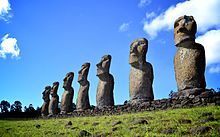
The first humans arrived at New Guinea and Australia 65,000 years ago; this places their indigenous cultures among the oldest known on Earth. Without writing or metalworking, their heritage is sourced from their artwork and oral tradition. See Indigenous Australian culture . The first settlers of the Solomon Islands arrived more than 30,000 years ago. The general term for these ethnic groups is Melanesians .
The rest of Oceania has a relatively short human history, though. The Austronesians began migrating into the Pacific around 3,000 BCE and were the first people to arrive in Polynesia , from 1,000 BCE onwards. They reached Hawaii in the 4th century CE, and New Zealand in the 13th century (see Maori culture ), making the North and South Islands the last major landmasses on Earth to be settled (other than Antarctica). Oceania was also among the last regions to be charted and colonised by Europeans.
- Indigenous Australian culture
- Australian Convict Sites
- Military museums and sites in Australia
- Ned Kelly tourism
- Pacific War
North America [ edit ]

North American prehistory has left behind sites such as the New Mexico Pueblos and Ohio prehistoric sites . In addition, in Mexico and Central America , especially Guatemala , there are very impressive remains of the Mayan civilization , particularly quite a number of pyramids. Civilizations even older than the Maya are studied throughout Mexico, with cave drawing sites and places where civilization advancements such as the development of agriculture or writing systems happened independent of similar advancements in other parts of the world.
Sites associated with written history for the most part begin with early contact between the indigenous peoples of North America and European colonists. Often the indigenous were displaced by European settlers and sometimes killed (for example, the infamous Trail of Tears ). Even when they were not deliberately killed, the settlers frequently decimated indigenous populations by introducing European diseases.
Early colonial sites are often preserved as " old towns " in Atlantic coastal cities such as Quebec City , Havana , San Juan , or St. Augustine . But there are also old cities inland, such as Santa Fe, New Mexico , Guanajuato and Granada (Nicaragua) .
Early settlements that did not develop into major cities are often preserved (or reconstructed) as outdoor museums or " pioneer villages" , like Louisbourg , Plymouth (Massachusetts) , and Williamsburg .
The economic development of the American continent can be experienced by visiting historic plantations in the southern United States, haciendas in Mexico , and historic railroads.
Military tourism on this continent includes the American Revolution , War of 1812 , the Mexican War of Independence , the American Civil War , the Mexican Revolution and the various "Indian Wars" between the colonists and the indigenous peoples.
African-American history includes sites related to the Atlantic slave trade as well as the Underground Railroad : multiple routes for smuggling slaves who had escaped the southern US across the northern states into what later became Canada (at the time British North America) or other non-US territory. Active primarily in the 1850s, when US federal law left slaves who had escaped to free states in immediate danger of recapture by slave catchers unless they left the US entirely.
History-focused itineraries include the Camino Real , the Royal Road linking the 21 Spanish missions of California and the Camino Real de Tierra Adentro , the Royal Road that enabled economic development of New Spain in northwestern Mexico and the southwestern United States; the Lewis and Clark Trail leading across the Western United States, following the route of explorers Lewis and Clark; the Oregon Trail which took settlers to the Pacific coast; the Ruta del Tránsito , the historic route from east to west across North America that passed through Nicaragua ; Route 66 , which existed from 1926-1985 but continues to be marketed for nostalgia tourism; and the American Industry Tour from 17th-century Massachusetts to 20th-century Chicago.
For the politically-inclined there is also the chance to see sites related to the Presidents of the United States .
Mexico history series [ edit ]
Some of these topics overlap a bit with articles in other countries, especially those related to indigenous cultures, which share some stories with Canada , the United States , and Central America (especially Guatemala ). Events during Mexico's Colonial era and the War of Independence often hinge on events in Spain and its empire .
- Indigenous cultures of North America
- Indigenous cultures of Mesoamerica
- Maya civilization
- Colonial Mexico (1492 to 1810)
- Mexican War of Independence (1810-1821)
- Post-Independence Mexico (1821-1910)
- Mexican Revolution (1910-1920)
- Modern Mexico (1920 to today)
United States history series [ edit ]
Note that most of these topics are not exclusive to the United States. Indigenous cultures did not conform to modern boundaries and thus many were equally present in Canada and Mexico. Colonial boundaries were also different to modern ones: British colonial history includes Bermuda and Nova Scotia as much as the "13 colonies" of U.S. school textbooks while the Spanish Empire included all of the southwestern United States. The American War of Independence was partially fought in present-day Canada. Even after the establishment of the modern boundaries, trends and events touched multiple countries; those interested in the Old West will also find cowboy culture in Northern Mexico and the Canadian Prairies .
- New France (1608 to 1763)
- Early United States history (1492 to 1861)
- American Civil War (1861 to 1865)
- Old West (mainly 1865 to 1900)
- Industrialization of the United States (1865 to 1945)
- Postwar United States (1945 to present day)
South America [ edit ]

Many people travel to Peru every year to see the Inca Trail and other historical sites from the Inca Empire. Other historical sites include the remnants of the Falklands War and the history of the Jesuit missions in Paraguay . Beautiful colonial old towns can be found all over the continent, especially in Argentina and Chile , whose mineral wealth made them some of the richest countries in the world during the early 20th century.
- Indigenous cultures of South America
Themes [ edit ]
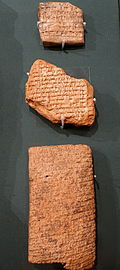
The great epics [ edit ]
Some of the oldest and most famous works of literature are epic poems about great heroes. In all cases there is some dispute among scholars about the historical authenticity of these stories, and about the dates of both the events described and the composition of the text.
The Epic of Gilgamesh is the oldest known piece of literature. It tells tales of a Sumerian king who probably ruled in the first half of the 3rd millennium BCE and of a great flood. The best-known version was likely written around 1200 BCE. While a surprising number of copies survive for a text of that age, they are not all written in the same language and sometimes disagree significantly on details.
Other great epics were written a few hundred years BCE and describe events around 1000 BCE:
- Homer recounts the story of the Trojan War in two epics, the Iliad and the Odyssey . In Roman times Virgil's Aeneid continues the story, following a warrior from Troy to Italy. Today Troy is an archaeological site which attracts tourists.
- The Mahabarata is a great Indian epic. Perhaps the most famous passage in India literature is the Baghavad Gita , a dialog between the warrior Arjuna and the God Krishna which takes place just before the climactic battle. That battle was fought at Kurukshetra , which now attracts both pilgrims and tourists.
- The Ramayana is another great Indian epic. An epic battle was fought between the forces of the hero, Rama, and the villain, Ravana, on the island of Lanka, which is widely believed to be modern-day Sri Lanka . There is a chain of islands stretching from modern-day India to Sri Lanka, which is believed by Hindus to be the remains of the land bridge to Lanka that Rama and his army built.
- The Shahnameh is Iran 's national epic, written in the late 10th and early 11th centuries by the poet Ferdowsi. It recounts the mythical origins and history of the Persian Empire up until the Muslim conquest in the 7th century. Besides Iran, it is also highly revered in the neighboring countries that were historically influenced by Persia, such as Afghanistan , Tajikistan , and Azerbaijan .
- The Crusades have inspired much epic poetry in medieval Europe . Perhaps the most famous among them is the French poem La Chanson de Roland (The Song of Roland), composed in the 11th century, possibly by a Norman poet called Turold. Other notable ones include the 16th century Italian poems La Gerusalemme Liberata by Torquato Tasso and Orlando Furioso by Ludovico Ariosto, the latter of which inspired numerous operas over the years.
- The Bible is a more complex set of books than can be encompassed by the term "epic", but parts of it are basically Hebrew epics. The Torah (Pentateuch or Five Books of Moses) was first written down in full in the 6th century BCE, with fragments having been found that date to the 7th century BCE. The Exodus of Moses is one of the most famous stories of the Old Testament. See Holy Land , Judaism and Christianity for Biblical destinations.
Various Norse Sagas and Eddas probably originated as oral tradition around 1000 CE and were written down a few centuries later. Other Europeans also had epics, such as the Old English Beowulf or the Middle High German Nibelungenlied . The Crusades also inspired some of the greatest Italian epic poetry, including La Gerusalemme liberata by Torquato Tasso, and Orlando Furioso by Ludovico Ariosto, the latter of which is studied in school by all Italians today.
When reading any epic, keep in mind that most were passed down orally for centuries before being written down. Also, many tended to exaggerate numbers, either just to make a better story or to make rulers look impressive with great army sizes, harem sizes and feats of city building, so the "real deal" when finally verified by archeologists can fall short of the epic scales of the tales.
The equivalent in Chinese historiography is known as the Twenty-Four Histories (二十四史), starting with the compilation of the Records of the Grand Historian (史記/史记) by the Han Dynasty historian Sima Qian in the 1st century BCE. Subsequent official histories were typically compiled by the succeeding dynasty about the dynasty that preceded them. The official history of the Qing Dynasty has yet to be compiled; the Chinese government is attempting to compile it, but progress has been slow.
Espionage history [ edit ]
Espionage has existed since ancient times, and sometimes made or broken the fate of nations.
Science and technology tourism [ edit ]
Science tourism is for those with an interest in science, including science museums as well as live science research centers and exploratory missions. Closely related is industrial tourism , factory tours and museums describing manufacturing in various time periods from the start of the Industrial Revolution to the modern era.
Industrial tourism includes visits to historical or present-day industrial sites and museums. Mining tourism and certain underground works are a subset of industrial tourism. It is often related to the history of transportation, with maritime history , steam power , heritage railways , automotive history , aviation history and space flight sites .
History of organized labor describes the first trade unions and their struggle to improve working conditions.
Nuclear tourism is for those with an interest in the nuclear industry from either a science or military perspective. The locations can either contain live reactors or be otherwise of interest from a historical point of view; see Golden Age of Modern Physics for the preceding research in the first half of the 20th century.
Mathematics tourism includes places which inspired the understanding of numbers, geometry, and mathematical structure.
History of justice [ edit ]
Judicial tourism includes visits to courthouses, police buildings, prisons, crime scenes, and other places related to the legal system.
Military tourism [ edit ]
Military tourism is for those with an interest in current or historical military sites and facilities, including museums, battlefields, cemeteries and technology.
Exploration [ edit ]
Retracing the voyages of the great explorers of old:
- On the trail of Marco Polo
- Voyages of Zheng He
- Voyages of Ibn Battuta
Many famous journeys are from Europe's Age of Discovery :
- Magellan-Elcano circumnavigation
- Voyages of Columbus
- Voyages of James Cook
- Voyages of George Vancouver
- Voyages of Matthew Flinders
Later European explorers:
- Voyages of John Franklin
- Voyages of Roald Amundsen
Philosophy tourism [ edit ]
Philosophy tourism is for those with an interest in the history of philosophy, including historical residences of philosophers, museums, statues and places of burial.
Political history [ edit ]
Monarchies , grand houses , legislative buildings , local governments , history of organized labour and United Nations are some themes for the history of government and politics.
See also [ edit ]
- Archaeological sites
- Grand houses
- Grand old hotels
- Fiction tourism and Literary travel
- Heritage railways
- Legacy food markets and Legacy retailers
- Mining tourism
- National parks
- Official residences
- Old towns and Ghost towns
- Some Tourist trains also focus on a supposed or actual historical connection
- Reenactment and LARP
- Seven Wonders of the Ancient World
- UNESCO Creative Cities
- UNESCO Intangible Cultural Heritage
- UNESCO World Heritage List
- Articles without Wikipedia links (via Wikidata)
- Has custom banner
- Cultural attractions
- Topic articles
- Usable topics
- Usable articles
Navigation menu
Old World Voyages
A travel blog for history lovers
A Travel Blog for History Lovers
“The world is a book, and those who do not travel read only a page.” St. Augustine

Travel is one of the best ways to understand and connect with the past. From exploring a medieval castle to standing on a World War II battlefield to walking through ancient ruins that date back centuries, experiencing these places first hand brings history to life in a way that just reading about it never could. These places tell the stories of our shared past and stand as a reminder of the people who came before us and the events that transpired which have had a hand in shaping the world as we know it today.
This site is dedicated to exploring the past through travel. Whether you’re a history buff, a traveller, or just someone who is curious about the world, you’re in the right place. Here you’ll find travel tips, stories, insights and photos to ignite your wanderlust and transport you back in time.
“History is not a burden on the memory but an illumination of the soul.” Lord Acton

I’m Jennifer, the writer and photographer behind Old World Voyages. I love to travel and I’m passionate about history. Throughout all my travel planning over the years, I’ve noticed a curious lack of history focused travel resources so I started this blog partly to help fill that void and also, as a way to share my passions for history and travel. I hope it inspires you to embark on your own voyages to the old world.

A (Short) History Of Travel Writing
Posted on Last updated: February 5, 2023
In this short history of travel writing, we will look at the different types of reporting about travel throughout the ages.
If you’re looking for a book about travel in a bookshop or library, you better take the rest of the day, well perhaps even better the week… month, or even rest of the year off! There are just so many!
The amount of writers reporting about the different landscapes and food they tasted in foreign destinations, books with history lessons about certain places and personal narratives about a person’s excitement and struggles of navigating through unknown territories and meeting foreign people are endless.
TYPES OF TRAVEL WRITING
Early travel literature in asia, travel writing during classic and medieval times, who was the first travel writer, discovering new worlds, why we like to write and read about travelling, famous travel writing, studying travel literature, modern day travel writing, add to your vision board, travel without leaving home, which book to read, want to be a travel blogger, our favourite travel journals, our favourite travel notebook covers, travel journals for kids, discover unique travel gear & gifts, travel writing history.

When we’re talking about travel writing, there are a couple of distinctions to be made. There are:
- travelogues (journal/itinerary style, actual reports about someone’s trip)
- travel stories (a realistic narration about a journey, meant for a wider audience and usually with a certain literary value to it)
- and travel guides (publication with practical information and tips/advice about a certain destination, meant for people that want to visit that place).
With old stories, it’s hard to distinguish between a travel story or a travelogue. This is because we don’t know the accuracy of the information and motif of the story. Most of the time, it is also not known who commissioned the story in the first place.
That said, in all travel writing, the focus lies on accounts of real or imaginary places. It may range from documentary to the evocative, from literary to journalistic and from humorous to serious.
You can find travel writing in books, magazines and of nowadays also online. What different types of travel writing are your favourite to read?

You don’t always need to be physically on the road to enjoy the beauty of destinations from all around the world!
From vintage travel posters to beautifully displayed souvenirs and home decor items inspired by your favourite places and from travel journals and crafts to exploring world recipes, music and dance.
With our creative articles you’ll get some fresh ideas on how to bring the world closer to the comforts of your own home.
In China , travel literature became popular during the Song Dynasty (960-1279). Under the name of ‘ Youji Wenxue ‘ (‘ Travel Record Literature ‘), authors such as Fan Chengda and Xu Xiake incorporated geographical and topographical information into their writing.
Poet and statesman Su Shi wrote ‘ Record Of Stone Bell Mountain ‘ and made a philosophical and moral argument as its central purpose.
In Japan , there are also many personal reports from travellers sharing their experiences and interesting encounters.
Examples include the ‘ Sjōrai Moluroku ‘ (804) by author Kūkai and the ‘ Tosa Nikki ‘ (‘ Tosa Diary’ ) by Ki no Tsurayuki (early 10th century), which was found revolutionary because it featured a female narrator.
Haiku poet Matsuo Bashō wrote the story ‘ Oku no Hosomitsji ‘ (‘ The narrow road to the Deep North’ ) in the second half of the 17th century. The work included the journey, places visited and the author’s personal experience.

Throughout the history of travel writing, you might not categorize some of the historical tales as travel stories. But how about the famous travelogue ‘ Odysseia ‘ (‘ Odysey ‘) from 8B.C. by Homer? This poem recounted Greek hero Odysseus’ long journey home after the fall of Troy.
The Latin work ‘ Commentarii dé bello Gallico ‘ by Julius Caesar reported his journey during the Gallic War.
Greek writer Xenophone wrote ‘Anabasis’ around 431-355 BC. It was about the expedition of a Persian prince against his brother, King Artaxerxes II and the Greek troops travels through Asia back home to Greece. In Medieval works, it showed that people had very little knowledge about the world around them.
Stories were usually a colourful mix of facts and impossible events. They were mostly quests (for the Holy Grail or for personal development) or texts with a mainly Christian/spiritual focus. You can’t really call them travel stories, as they didn’t tell much about the actual environment.

It’s hard to say with 100% accuracy, but often the Greek author Herodotus is consider the first real ‘travel writer’. He travelled all over the eastern Mediterranean to research his monumental Histories , written between 450 and 420 BC.
The Histories serves as a record of the ancient traditions, politics, geography, and clashes of various cultures that were known in Greece, Western Asia and Northern Africa at that time.

After the crusades, new stories and information reached the people. They started to realize that there was a whole other world outside their own. The history of travel literature evolved even more at this point.
There came a shift in stories type, as there was much curiosity about explorations and voyages to unknown destinations.
Travel was a necessity at those times. That is why most travel stories were purely intended to inform about the different nature and culture of inhabitants they met. And the best ways in which to approach them. There were also a lot of military explorations that informed more about strategic issues.
A well-known travel writer in those times was Marco Polo from Italy , who wrote (or let someone else write) about a Venetian traveller on his way to China and the Mongol Empire in the work ‘ Il milione ‘ (‘ The million ‘, 1298). This work is seen as a truthful report of things, complemented with (not always correct) information he collected through hearsay.

In 1336, someone did a bit more than just jotting down facts about his destination. Italian poet and humanist Petrarch described his experiences about climbing mount Ventoux and –more importantly- his satisfaction about reaching the top. He also wrote about his travel companions and even related his experience to his own moral development in life, as were it a pilgrimage.
More and more people after Petrarch found a new interest in writing about their travels in a more personal way.
World traveller Ibn Battuta from Morocco wrote in 1355 the work ‘ Rihla ‘ (‘ The Journey ‘), with an original title that translates as: ‘ A Gift to Those Who Contemplate the Wonders of Cities and the Marvels of Travelling ‘.
Halfway through the 15 th century, Historicus Gilles le Bouvier from France wrote in a book his opinion about why people should travel and write about it: ‘ Because many people of diverse nations and countries delight and take please, as I have done in times past, in seeing the world and things therein, and also because many wish to know without going there, and others wish to see, go and travel, I have begun this little book .’

The Travel Tester loves to review books that teach you something about yourself or the world around us.
From travel guides and stories to books about business and self-development and from cultural stories to cook books from kitchens around the world… if it looks interesting to us, we’ll test it!
No matter where you’re going, with our reviews you’ll know exactly what to read next!
Continuing this history of travel writing through ages, in the 18 th century travel writing was known under the name ‘ Book of Travels ‘. Usually these were maritime journals – and the people devoured them. British James Cook’s diaries (1784) reached the status of a modern day international best-seller. Along with true stories, imaginary travel stories started to appear.
Many of them were actually based on factual journeys. You might have heard of Joseph Conrad’s ‘ Heart of Darkeness ‘, Daniel Defoe’s ‘ Robins on Crusoe’ , Jonathan Swift’s ‘Gulliver’s Travels’ or Jules Vernes, ‘The journey around the world in 80 days’ .
Charles Darwin wrote his famous account of the journey of the HMS Beagle in the 19 th century. It was a work at the intersection of science, natural history and travel. Other famous authors from his time, that also wrote travel stories where: Hans Christian Andersen, Charles Dickens and Mark Twain.

There have been many studies about travel writing and travel literature.
They include themes such as: interwar travel writing as escapism, the primitivist presentation of foreign cultures, the psychological correlatives of travel, the role of gender in travel and travel writing, explorations of the political functions of travel, studies about the function of language in travel and travel writing, cultural diversity, globalization and migration.
The first international travel writing conference was titled ‘ Snapshots from Abroad ‘ and was organized by Donald Ross at the University of Minnesota in the USA 1997. It attracted many scholars and led to the foundation of the ‘ International Society for Travel Writing ‘.

Travel writing in current times is quite a broad theme. From journal-type stories to literary works in which style and structure are more important.
Some of the most popular travel writers from the 20 th and 21 st century are (amongst others): Bill Bryson , Paul Theroux, Pico Iyer, Tim Cahill, Stanley Stewart, Kira Salak, Douglas Adams, Anthony Sattin, Ryszard Kapuscinski, Bruce Chatwin and Rory MacLean.
These days, we all know the travel blog as another form of travel writing.
The first online travel blog was posted by Jeff Greenwald on the ‘ Global Network Navigator ‘ in 1993. He described his journey around the world and later turned the pieces into a book.
TIP! Read this funny travel blog of how things went south for me once at Schiphol Airport (but all was ok in the end)…

There is a lot that goes into running a profitable blog and there’s so much that goes on behind the scenes than you might not realize at first.
I’ve been blogging since 2006 and have a ton of tips to share! From brainstorming ideas to creating content all year round and from posting on social media to maintaining your website, tracking what’s working, networking at events and eventually working with brands…
As you can see, travel and reporting about our travels has been a source of inspiration for a long time now. Whether it was military officers, missionaries, the early explorers, scientists, pilgrims, migrants or people simply going on a holiday, we love telling others about our adventures!
I hope you enjoyed this short history of travel writing. Do you have an (online) travel journal? Feel free to share it in the comment section. And don’t forget to share this article if you liked it!
PRACTICAL INFO
- The Adventure Book – Original Edition (prompts + scrapbook per country)
- The Adventure Book – Europe Edition (prompts + scrapbook per country)
- The Adventure Book – Ultimate Traveler’s Edition (prompts + scrapbook per country)
- Moleskine Passion Journal Travel (blank paper)
- Moleskine National Geographic Traveller’s Journal (tabbed sections + prompts)
- Moleskine Journey City Notebook – London (pocket)
- Moleskine Journey City Notebook – Paris (pocket)
- Moleskine Journey City Notebook – New York (pocket)
- Moleskine Journey City Notebook – Hong Kong (pocket)
- Duncan & Stone Travel Journal (prompts + scrapbook)
- Everywhere You Go: Guided Travel Journal (prompts)
- Promptly Journals X Kelli Murray (prompts + scrapbook)
- Robrasim Refillable Leather Travelers Notebook (mixed papers + pockets)
- Clever Fox Bucket List Journal (prompts + stickers)
- Clever Fox Camping Journal (prompts + stickers)
- Clever Fox Travel Journal (prompts + stickers)
- Axel & Ash Life’s a Road Trip Journal (prompts)
- Axel & Ash Swept Away by Wanderlust (prompts)
- Field Notes: National Parks Series (pocket, graph paper)
- Bookishly Travel Journals (blank pages)
- Wayfaren Travel Journal (lined paper)
- Oakdene Designs Personalised Motorhome Travel Journal (prompts + scrapbook)
- Oakdene Designs Personalised Travel Journal (prompts + scrapbook)
- Oakdene Designs Personalised Caravan Travel Journal (prompts + scrapbook)
- Oakdene Designs Personalised Wooden Journal (lined pages)
- Oakdene Designs Personalised Hiking Journal (prompts + scrapbook)
- Oakdene Designs Personalised Road Bike Journal (prompts)
- Oakdene Designs Personalised Wooden Adventure Journal (prompts + scrapbook)
- Oakdene Designs Personalised Camping Journal (prompts + scrapbook)
- CamperVanStore Bamboo Travel Journal (lined paper + pen)
- Personalized Monogrammed Leather Travel Journal (blank pages)
- OneLineVoyage Faux Leather Travel Journal (prompts)
- Luckies Scratch Off Travelogue (prompts + scratch maps)
- Letterfolk Trip Passport (pocket + prompts)
- Galen Leather – Leuchtturm1917 Notebook Covers
- Galen Leather – Moleskine Covers
- Galen Leather – Field Notes Covers
- Galen Leather – Traveler’s Notebook Covers
- I Was Here: A Travel Journal for the Curious Minded
- Go!: A Kids’ Interactive Travel Diary and Journal – RED
- Go!: A Kids’ Interactive Travel Diary and Journal – BLUE
- Go!: A Kids’ Interactive Travel Diary and Journal – YELLOW
- Kids’ Travel Specialty Journal
- Lonely Planet Kids My Travel Journal
- Lonely Planet Kids The Travel Activity Book
- The Ultimate Travel Journal For Kids
- Road Trip Activities and Travel Journal for Kids
- Travel Journal for Kids
- Here I Go!: A Kid’s Travel Journal
MORE ABOUT TRAVEL JOURNALLING
- How to Make a Travel Journal ? Tips and Supplies
- How to Write a Travel Journal ? Best Writing Tips
- 65+ Travel Journal Prompts to inspire you
- 10+ Travel Bullet Journal Ideas you’ll love
- Best Bullet Journal Tips
- These Travel Journal Covers will amaze you
- Explorers’ Sketchbooks Review
- A Short History of Travel Writing
- 15 Signs you are born for Travel Writing
- Our Okinawa (Japan) Project Life Album
- Must-Have Travel Scrapbooking Supplies

In The Travel Tester shop, you will find our favourite travel products and original gift ideas.
Whether you’re looking for the best travel gear, gadgets, electronics, packing solutions, clothing, shoes, travel books, health- or beauty products… we’ve made a personal selection for you!
We’ve also included our favourite tech items used to create this blog, as well as material that can help you in your self-development, such as interesting books and courses.

Monday 5th of March 2018
A great synopsis of the fundamentals of travel writing. From the very start one can easily discover a cultural binding through the need of storytelling and sharing. Thank you guys!
Nienke Krook
Friday 6th of April 2018
Glad you liked it Antonios!
HISTORY CHALLENGE: HISTORIC TRAVELLERS | Time Travelling With Kids
Monday 28th of November 2016
[…] For an overview of the history of travel writing, visit: https://thetraveltester.com/a-short-history-of-travel-writing/ […]
Friday 20th of February 2015
Your article is absolutely fascinating Nineke. I came across it whilst researchign a talk I'm giving on the 'Pleasure of Travel Writing' and will certainly recommend it to the audience :-)
Wednesday 25th of February 2015
Thanks so much Zoë! Would have loved to see your talk, will it be online somewhere? Thanks for mentioning me!
LifeInCamelot
Wednesday 6th of February 2013
I enjoyed reading this and am glad I have found you. Welcome to Australia and I look forward to reading more of your stories. I have started my own travel blog - it includes some travelogues (from the past) and some travel stories. I enjoy using humour so love reading other people's sites that are humourous. I also love the feeling of nostalgia your blog has, along with the history of your grandfather.
My blog address is - www.lifeincamelot.wordpress.com
thetraveltester
Hi (sorry couldn't find your name anywhere?), Thanks for your nice comment. I've just left Australia after 2 years and loved living there. Now it's adjusting to (coldcold) Europe :) I am looking forward to reading your blog, thanks for the tip!
University Library, University of Illinois at Urbana-Champaign

History and Sources of Travel
Encyclopedias, bibliographies, catalogs, and guides, biographies, atlases and chronologies.
- Source Collections
- Return to HPNL Website
Ask a Librarian
- Trade, Travel, and Exploration in the Middle Ages: An Encyclopedia by John Block Friedman (Editor); Kristen Mossler Figg (Editor); Gregory G. Guzman (Editor) Call Number: Q. 909.0703 T675 ISBN: 0815320035 Publication Date: 2000
- Literature of Travel and Exploration: An Encyclopedia by Jennifer Speake (Editor) Call Number: Q. 910.403 L712 ISBN: 1579582478 Publication Date: 2003
- Encyclopedia of Travel Literature by Christopher K. Brown Call Number: I-Share ISBN: 0874369401 Publication Date: 2000
- Historical Dictionary of the Discovery and Exploration of Australia by Alan Day Call Number: 994.003 D33h ISBN: 0810845881 Publication Date: 2003
- Encyclopedia of Western Colonialism since 1450 by Thomas Benjamin Call Number: 325.3 ONLINE ISBN: 0028658434 Publication Date: 2006 Online version of the 3 volume original. Signed entries with bibliographies. Bibliographies not annotated. Includes thematic outline of contents, glossary, selection of primary sources, and a detailed index.
- Historical Dictionary of the Discovery and Exploration of the Northwest Coast of America by Robin Inglis Call Number: 979.5003 In45h ISBN: 0810855518 Publication Date: 2008
- Encyclopedia of the Literature of Empire by Mary Ellen Snodgrass Call Number: I-Share ISBN: 0816075247 Publication Date: 2009
- Historical Dictionary of the Discovery and Exploration of the Northwest Passage by Alan Day Call Number: 910.916327 D33h ISBN: 0810854864 Publication Date: 2006
- Historical Dictionary of the Discovery and Exploration of the Pacific islands by Max Quanchi, John Robson Call Number: 995.003 Q257h ISBN: 0810853957 Publication Date: 2005
- Encyclopedia of Exploration to 1800: A Comprehensive Reference Guide to the History and Literature of Exploration, Travel and Colonization from the Earliest Times to the Year 1800 by Raymond John Howgego Call Number: Q. 910.9203 H839e ISBN: 1875567364 Publication Date: 2003 Continued by: Encyclopedia of Exploration, 1800 to 1850 : a Comprehensive Reference Guide to the History and Literature of Exploration, Travel and Colonization Between the Years 1800 and 1850 .
- Encyclopedia of Exploration, 1800 to 1850: A Comprehensive Reference Guide to the History and Literature of Exploration, Travel and Colonization between the Years 1800 and 1850 by Raymond John Howgego Call Number: 910.922 H839e ISBN: 1875567445 Publication Date: 2004 Continues: Encyclopedia of Exploration to 1800: A Comprehensive Reference Guide to the History and Literature of Exploration, Travel and Colonization from the Earliest Times to the Year 1800 . Continued by: Encyclopedia of Exploration, 1850 to 1940: The Oceans, Islands and Polar Regions: A Comprehensive Reference Guide to the History and Literature of Exploration, Travel and Colonization in the Oceans, the Islands, New Zealand and the Polar Regions , and: Encyclopedia of Exploration, 1850 to 1940: Continental Exploration .
- Encyclopedia of Exploration, 1850 to 1940: The Oceans, Islands and Polar Regions: A Comprehensive Reference Guide to the History and Literature of Exploration, Travel and Colonization in the Oceans, the Islands, New Zealand and the Polar Regions by Raymond John Howgego Call Number: Q. G80 .H679 2006 ISBN: 1875567445 Publication Date: 2006 Continues in part: Continues in part Encyclopedia of Exploration, 1800 to 1850: A Comprehensive Reference Guide to the History and Literature of Exploration, Travel and Colonization between the Years 1800 and 1850 .
- Encyclopedia of Exploration, 1850 to 1940: Continental Exploration by Raymond John Howgego Call Number: G200 .H694 2008 ISBN: 9781875567423 Publication Date: 2008 Continues in part: Encyclopedia of Exploration, 1800 to 1850: A Comprehensive Reference Guide to the History and Literature of Exploration, Travel and Colonization between the Years 1800 and 1850 .
- Encyclopedia of Exploration by Carl Waldman and Alan Wexler Call Number: Q. 910.3 W146e ISBN: 0816046786 Publication Date: 2004 2 vols. See also: Oxford Companion to World Exploration by David Buisseret, and: Encyclopedia of Women's Travel and Exploration by Patricia D. Netzley.
- Encyclopedia of Women’s Travel and Exploration by Patricia D. Netzley Call Number: 910.82 N389 ISBN: 1573562386 Publication Date: 2001
- Colonialism: An International, Social, Cultural, and Political Encyclopedia by Melvin E. Page (Editor); James D. Ciment (Editor); Penny Sonnenberg Call Number: 325.303 C718 ISBN: 1576073351 Publication Date: 2003 3 vols. Extensive chronologies of various imperial empires (Austro-Hungarian, Belgian, British, Danish, Dutch, French, German, Italian, Japanese, Ottoman, Portuguese, Spanish, Swedish, Russian, and United States) provide context for the diverse entries
- Historical Dictionary of the British Empire by James S. Olson and Robert Shadle Call Number: 909.0971241 H627 ISBN: 0313279179 Publication Date: 1996
- Encyclopedia of Mission and Missionaries by Jonathan J. Bonk Call Number: Q. 266.003 En196 ISBN: 0415969484 Publication Date: 2007
- The Encyclopedia of Missions: Descriptive, Historical, Biographical, Statistical by Henry Otis Dwight (Editor); H. Allen Tupper (Editor); Edwin Munsell Bliss (Editor) Call Number: 266 ONLINE Publication Date: 1904 2nd ed.
What are Bibliographies?
A bibliography is a list of documents, usually published documents like books and articles. This type of bibliography is more accurately called "enumerative bibliography". An enumerative bibliography will attempt to be as comprehensive as possible, within whatever parameters established by the bibliographer.
Bibliographies will list both secondary and primary sources. They are perhaps most valuable to historians for identifying primary sources. (They are still useful for finding secondary sources, but increasingly historians rely on electronic resources, like article databases, to locate secondary sources.)
Think of a bibliography as a guide to the source base for a specific field of inquiry. A high quality bibliography will help you understand what kinds of sources are available, but also what kinds of sources are not available (either because they were never preserved, or because they were never created in the first place).
Bibliographies for Researching the History of Travel
- The Oxford Companion to World Exploration by David Buisseret (Editor) Call Number: 910.922 ONLINE ISBN: 019514922X Publication Date: 2007 Online version of the 2 volume original.
- A Reference Guide to the Literature of Travel: Including Voyages, Geographical Descriptions, Adventures, Shipwrecks and Expeditions by Edward Godfrey Cox Call Number: 016.91 ONLINE ISBN: 0837121612 Publication Date: 1935-1949 3 vols.: v. 1. The old world.--v. 2. The new world. --v. 3. Great Britain
- Bibliotheca Cisorientalia: An Annotated Checklist of Early English Travel Books on the Near and Middle East by Richard Bevis Call Number: 016.9156 B46B ISBN: 0816109699 Publication Date: 1973
- Bibliography of British and American Travel in Italy to 1860 by R. S. Pine-Coffin Call Number: 015.45 B4713 no.76-77 Publication Date: 1974
- Bio-bibliografía de viajeros por España y Portugal. Siglos XV-XVI-XVII by Carlos García-Romeral Pérez Call Number: ILL ISBN: 8478951660 Publication Date: 2001
- Bio-bibliografía de viajeros por España y Portugal. Siglo XVIII by Carlos García-Romeral Pérez Call Number: ILL ISBN: 8478951393 Publication Date: 2000
- Diccionario de viajeros españoles: desde la Edad Media a 1970 by Carlos García-Romera Call Number: Q. 910.946 G165d ISBN: 8478951946 Publication Date: 2004
- Bio-bibliografía de viajeros españoles (siglo XVI-XVII) by Carlos García-Romeral Pérez Call Number: I-Share ISBN: 8478950826 Publication Date: 1998
- A Catalogue of Books Relating to the Discovery and Early History of North and South America: Forming a Part of the Library of E.D. Church by George Watson Cole Call Number: 016.9731 ONLINE Publication Date: 1907 5 vols.: v. 1. 1482-1590.--v. 2. 1590-1625.--v. 3. 1626-1676.--v. 4. 1677-1752.--v. 5. 1753-1884. Index.
- Viaggiatori italiani in Italia, 1700-1998 : per una bibliografia by Luca Clerici Call Number: ILL ISBN: 8886842058 Publication Date: 1999
- Baedeker’s Handbook(s) for Travellers: A Bibliography of English Editions Published prior to World War II by Greenwood Press Call Number: 016.9102 G85B ISBN: 0837182093 Publication Date: 1975 Actual editions of the travel guides can be found in the Online Catalog and in the HathiTrust. This bibliography is actually the guide to a microfiche set, but works as a bibliography as well.
- Wayward Women: A Guide to Women Travellers by Jane Robinson Call Number: 016.9104082 R563w 2001 ISBN: 019280233X Publication Date: 2001 Includes a geographical index.
- American Travellers Abroad: A Bibliography of Accounts Published before 1900 by Harold F. Smith Call Number: 016.9104 Sm58a 1999 ISBN: 0810835541 Publication Date: 1999 Organized alphabetically by author, with indexes to place, and occupation of writer.
- An Annotated Catalog of Original Source Materials Relating to the History of European Expansion, 1400-1800 by James Ford Bell Library Call Number: Q. 016.382094 J232A ISBN: 0960179844 Publication Date: 1994 Continued by the journal Merchant Explorer . Catalog of the James Ford Bell Library .
- The Exploration of South America: An Annotated Bibliography by Edward J. Goodman Call Number: 016.98001 G621E ISBN: 0824091809 Publication Date: 1983 Includes both primary and secondary sources.
- Bio-bibliografía de viajeros españoles (siglo XVIII) by Carlos García-Romeral Pérez Call Number: I-Share ISBN: 847895063X Publication Date: 1997
- Subject Catalogue of the Library of the Royal Empire Society (Formerly Royal Colonial Institute) by Evans Lewin Call Number: Q.017.142 R81s Publication Date: 1930-1937 Organized by broad region and then by subject. Includes author index and geographic index. Vol. 1. The British Empire generally, and Africa.- v. 2. The Commonwealth of Australia, the Dominion of New Zealand, the South Pacific, general voyages and travels, and Arctic and Antarctic regions.- v. 3. The Dominion of Canada and its provinces, the Dominion of Newfoundland, the West Indies and Colonial America- v. 4. The Mediterranean colonies, the Middle East, Indian Empire, Burma, Ceylon, British Malaya, East Indian Islands, and the Far East.
- Subject Catalogue of the Royal Commonwealth Society, London Call Number: Q. 017.142 R811S Publication Date: 1971 Supplements the Subject catalogue of the Library of the Royal Empire Society (see above) and the Biography Catalogue of the Library of the Royal Commonwealth Society . With supplements. 7 vols.: v. 1. British Commonwealth and Europe. Asia: in general, Mideast, India.--v. 2. Asia: other Asian areas. Africa: Africa in general, North Africa.--v. 3. Africa: West Africa, East Africa.--v. 4. Africa: noncommonwealth Africa, including former foreign colonies, Republic of South Africa, other southern African countries.--v. 5. The Americas.--v. 6. Australia, New Zealand, Pacific.--v. 7. Biography. Voyages and travels. World War I. World War II.
- Catalogue of the Colonial Office Library, London by Great Britain. Colonial Office. Library Call Number: Q. 016.325342 G798C Publication Date: 1964 15 vols. Vols. 1 and 2 cover library accessions prior to 1950.
- Catalogue of the Library of the Royal Geographical Society Call Number: 016.91 R81C Publication Date: 1865 See especially Appendix I, Collections of Voyages and Travels, with contents listings for each collection, and Appendix II, Government, Anonymous, and Miscellaneous Publications organized by geographic subject. Also available online for keyword searching.
- Gypsies and Travelers in North America: An Annotated Bibliography by William G. Lockwood; Sheila Salo Call Number: 016.97000491 L814g ISBN: 0961710756 Publication Date: 1994
- Glimpses of India : an Annotated Bibliography of Published Personal Writings by Englishmen, 1583-1947 by John F. Riddick Call Number: 016.954 R431g ISBN: 0313256616 Publication Date: 1989
- Library Catalogue of the School of Oriental and African Studies, University of London Call Number: 016.915 L84l Publication Date: 1963 28 vols. and supplements.
- The Cambridge Companion to Travel Writing by Peter Hulme (Editor); Tim Youngs (Editor) Call Number: 820.9 C14422 ISBN: 0521786525 Publication Date: 2002
- A Bibliography of East European Travel Writing in Europe by Wendy Bracewell (Editor); Drace-Francis Alex (Editor); Alex Drace-Francis (Editor) Call Number: 016.914 ONLINE ISBN: 9789639776128 Publication Date: 2008
- American Travelers and Observers in the British Isles, 1875-1900: A Bibliography by David Sanders Clark Call Number: ILL Publication Date: 1940
- American Travelers to Mexico, 1821-1972: A Descriptive Bibliography by Garold Cole Call Number: 917.2 C674A ISBN: 087875136X Publication Date: 1978
- Travel Literature of Colonists in America, 1754-1783: An Annotated Bibliography with an Introduction and an Author Index by Ruth Henline Call Number: Online Publication Date: 1947 Unpublished dissertation available online.
- Early Midwestern Travel Narratives: An Annotated Bibliography, 1634-1850 by Robert Hubach Call Number: 016.9177 H86E Publication Date: 1961
- Russian Travelers to the Christian East from the Twelfth to the Twentieth Century by Theofanis G. Stavrou; Peter R. Weisensel Call Number: 016.910947 ST29R ISBN: 0893571571 Publication Date: 1986
- Voyages and Travels in Greece, the Near East, and Adjacent Regions, Made Previous to the Year 1801: Being a Part of a Larger Catalogue of Works on Geography, Cartography, Voyages and Travels, in the Gennadius Library in Athens by Shirley Howard Weber Call Number: 016.91496 AM3VO Publication Date: 1953
- Voyages and Travels in the Near East Made during the XIX Century: Being a Part of a Larger Catalogue of Works on Geography, Cartography, Voyages and Travels, in the Genadius Library in Athens by Shirley Howard Weber Call Number: 016.91496 AM3V Publication Date: 1952
- Reports of Explorations Printed in the Documents of the United States Government: A Contribution toward a Bibliography by Adelaide R. Hasse Call Number: 016.91 UN32R1969 Publication Date: 1899 Organized by place of exploration, with separate entries by author interfiled.
- Alaska: A Bibliography, 1570-1970, with Subject Index by Elsie A. Tourville (Compiled by) Call Number: 016.9798 T64A ISBN: 0816110638 Publication Date: 1974
- American National Biography Standard reference work for American biography. This is the online version of the 24 volume original plus updates. Biographies of men and women, deceased at least five years, who made especially important contributions to American history and culture. Only includes deceased Americans deemed historically significant by editorial board.
- Oxford Dictionary of National Biography Biographies of men and women, deceased at least five years, who, in the judgment of the editorial board, made important contributions to British history and culture. Includes access to articles from the original, Victorian classic, The Dictionary of National Biography .
- A Dictionary of British and Irish Travellers in Italy, 1701-1800 by John Ingamells Call Number: 914.5047 ONLINE ISBN: 0300071655 Publication Date: 1997
- Deutsche männer in Afrika: Lexicon der hervorragensten deutschen Afrika-forscher, missionare, etc. by Conrad Weidmann Call Number: Online Publication Date: 1894
- American Travel Writers, 1776-1864 by James Schramer and Donald Ross Call Number: 928.1 ONLINE ISBN: 0787610720 Publication Date: 1997 Vols. 183 of the Dictionary of Literary Biography .
- American Travel Writers, 1850-1915 by Donald Ross and James J. Schramer Call Number: 928.1 ONLINE ISBN: 9780787618445 Publication Date: 1998 Vol. 189 of the Dictionary of Literary Biography .
- Explorers Call Number: I-Share ISBN: 0893569704 Publication Date: 1998 2 vols.
- Geography and Exploration: Biographical Portraits by Barry M. Gough Call Number: I-Share ISBN: 0684806622 Publication Date: 2002
- Women Adventurers,1750-1900: A Biographical Dictionary, with Excerpts from Selected Travel Writings by Mary F. McVicker Call Number: I-Share ISBN: 0786432055 Publication Date: 2008
- A List of Spanish Residencias in the Archives of the Indies, 1516-1775; Administrative Judicial Reviews of Colonial Officials in the American Indies, Philippine and Canary Islands by José Maria de la Peña Cámara Call Number: 016.98 P37L Publication Date: 1955 A guide to unpublished archival material, but useful also for identifying names of residencias, as a starting point for biographical research.
- Explorers and Discoverers of the World by Daniel Baker Call Number: 910.922 ONLINE ISBN: 0810354217 Publication Date: 1993 Short biographies of about 320 world explorers.
- Hommes et destins: dictionnaire biographique d’outre-mer by Académie des sciences d’outre-mer Call Number: 920.044 H753 Publication Date: 1975- 10 vols. Coverage is mostly twentieth century. Biographical dictionary of French colonials (e.g. administrators, explorers, missionaries, anthropologists. . .).
- The Devil May Care: Fifty Intrepid Americans and Their Quest for the Unknown by Tony Horwitz (Editor) Call Number: 917.304 H789d ISBN: 0195169220 Publication Date: 2003
- Biographical Dictionary of Christian Missions by Gerald H. Anderson Call Number: Q. 266.00922 An23b ISBN: 0028646045 Publication Date: 1998 Includes an index with place names.
- Biographical Dictionary of the Franciscans in Spanish Florida and Cuba, 1528-1841 by Maynard Geiger Call Number: 271 ONLINE Publication Date: 1940
- Historical Atlas of Exploration: 1492-1600 by Angus Konstam Call Number: Q. 910.9 K837h ISBN: 0816042489 Publication Date: 2000
- The Atlas of British Overseas Expansion by A. N. Porter Call Number: 911.41 AT65 ISBN: 013051988X Publication Date: 1991
- An Historical Atlas of Islam = Atlas historique de l’Islam by Hugh Kennedy Call Number: Q. 911.17671 H6292002 ISBN: 9004122354 Publication Date: 2002 2nd ed. "This second revised edition, by Hugh Kennedy, of William Brice's original builds upon the rather significant accomplishments of the first, and improves greatly upon them. The new preface and bibliographical preambles by Kennedy explain what specific maps have been added and what has been dropped since the first edition [...] The new edition offers a much more logical organization of its maps, one less likely to induce motion-sickness than its predecessor, with general maps followed by specific regional maps grouped according to the area being described" (from The Journal of the American Oriental Society review)
- Atlas of Exploration (Oxford University Press) by John Hemming Call Number: Q. 911 R812a 2008 ISBN: 0195343182 Publication Date: 2008 2nd ed. See also: Historical Atlas of Exploration, 1492-1600 by Angus Konstam (Call No. Q. 910.9 K837h), and: Atlas of Exploration by Shona Grimbly.
- Atlas of Exploration (Fitzroy Dearborn) by David Redwood; Shona Grimbly (Editor) Call Number: Q. 910.9 At655 ISBN: 1579583113 Publication Date: 2001
- Historical Atlas of Expeditions by Karen Farrington Call Number: Q. 911 F249h ISBN: 0816044325 Publication Date: 2000
- The Times Atlas of World Exploration: 3,000 Years of Exploring, Explorers, and Mapmaking by Felipe Fernández-Armesto Call Number: Q. 912 T482 ISBN: 0062700324 Publication Date: 1991
- Exploration and Science: Social Impact and Interaction by Michael S. Reidy, Gary Kroll, Erik M. Conway Call Number: 303.483 R272e ISBN: 1576079856 Publication Date: 2007
- Historical atlas of the Middle East by G.S.P. Freeman-Grenville Call Number: Q. 911.58 F877H ISBN: 0133909158 Publication Date: 1993
- The New Atlas of African History by G.S.P. Freeman-Grenville Call Number: Q. 911.6 F877N ISBN: 0136121519 Publication Date: 1991
- The Penguin Historical Atlas of the British Empire by Nigel Dalziel Call Number: 911.171241 D179p ISBN: 0141018445 Publication Date: 2006
- America Discovered: A Historical Atlas of North American Exploration by Derek Hayes Call Number: Q. 911.7 H326a ISBN: 9781553650492 Publication Date: 2004
- Historical Atlas of the Pacific Northwest: Maps of Exploration and Discovery: British Columbia, Washington, Oregon, Alaska, Yukon by Derek Hayes Call Number: Q. 979.501 H326h ISBN: 9781570612152 Publication Date: 1999
- Historical Atlas of the North Pacific Ocean: Maps of Discovery and Scientific Exploration, 1500-2000 by Derek Hayes Call Number: Q. 911.1644 H326h ISBN: 1570613117 Publication Date: 2002
- Next: Source Collections >>
- Last Updated: Mar 29, 2024 10:42 AM
- URL: https://guides.library.illinois.edu/travel-exploration
- History Classics
- Your Profile
- Find History on Facebook (Opens in a new window)
- Find History on Twitter (Opens in a new window)
- Find History on YouTube (Opens in a new window)
- Find History on Instagram (Opens in a new window)
- Find History on TikTok (Opens in a new window)
- This Day In History
- History Podcasts
- History Vault
The Green Book: The Black Travelers’ Guide to Jim Crow America
By: Evan Andrews
Updated: March 13, 2019 | Original: February 6, 2017

“There will be a day sometime in the near future when this guide will not have to be published. That is when we as a race will have equal opportunities and privileges in the United States. It will be a great day for us to suspend this publication for then we can go wherever we please, and without embarrassment.”
That was how the authors of the “Negro Motorist Green Book” ended the introduction to their 1948 edition . In the pages that followed, they provided a rundown of hotels, guest houses, service stations, drug stores, taverns, barber shops and restaurants that were known to be safe ports of call for African American travelers. The “Green Book” listed establishments in segregationist strongholds such as Alabama and Mississippi, but its reach also extended from Connecticut to California—any place where its readers might face prejudice or danger because of their skin color. With Jim Crow still looming over much of the country, a motto on the guide’s cover also doubled as a warning: “Carry your Green Book with you—You may need it.”

First published in 1936, the Green Book was the brainchild of a Harlem-based postal carrier named Victor Hugo Green. Like most Africans Americans in the mid-20th century, Green had grown weary of the discrimination blacks faced whenever they ventured outside their neighborhoods. Rates of car ownership had exploded in the years before and after World War II , but the lure of the interstate was also fraught with risk for African Americans. “Whites Only” policies meant that black travelers often couldn’t find safe places to eat and sleep, and so-called “ Sundown Towns ”—municipalities that banned blacks after dark—were scattered across the country. As the foreword of the 1956 edition of the Green Book noted, “the White traveler has had no difficulty in getting accommodations, but with the Negro it has been different.”
READ MORE: Was Jim Crow A Real Person?
Inspired by earlier books published for Jewish audiences, Green developed a guide to help black Americans indulge in travel without fear. The first edition of his Green Book only covered hotels and restaurants in the New York area, but he soon expanded its scope by gathering field reports from fellow postal carriers and offering cash payments to readers who sent in useful information. By the early 1940s, the Green Book boasted thousands of establishments from across the country, all of them either black-owned or verified to be non-discriminatory. The 1949 guide encouraged hungry motorists passing through Denver to stop for a bite at the Dew Drop Inn. Those looking for a bar in the Atlanta area were told to try the Yeah Man, Sportsman’s Smoke Shop or Butler’s. In Richmond, Virginia, Rest-a-Bit was the go-to spot for a ladies’ beauty parlor.

The Green Book’s listings were organized by state and city, with the vast majority located in major metropolises such as Chicago and Detroit. More remote places had fewer options—Alaska only had a lone entry in the 1960 guide —but even in cities with no black-friendly hotels, the book often listed the addresses of home owners who were willing to rent rooms. In 1954, it suggested that visitors to tiny Roswell, New Mexico, should stay at the home of a Mrs. Mary Collins.
READ MORE: How Freedom Rider Diane Nash Risked Her Life to Desegregate the South
The Green Book wasn’t the only handbook for black travelers—another publication called “Travelguide” was marketed with tagline “Vacation and Recreation Without Humiliation”—but it was by far the most popular. Thanks to a sponsorship deal with Standard Oil, the Green Book was available for purchase at Esso gas stations across the country. Though largely unknown to whites, it eventually sold upwards of 15,000 copies per year and was widely used by black business travelers and vacationers alike. In his memoir “ A Colored Man’s Journey Through 20th Century Segregated America ,” Earl Hutchinson Sr. described purchasing a copy in preparation for a road trip he and his wife took from Chicago to California. “The ‘Green Book’ was the bible of every Negro highway traveler in the 1950s and early 1960s,” he wrote. “You literally didn’t dare leave home without it.”
As its popularity grew, the Green Book expanded from a motorists’ companion to an international travel guide. Along with suggestions for the United States, later editions included information on airline and cruise ship journeys to places like Canada, Mexico, the Caribbean, Africa and Europe. “We know a number of our race who have a long standing love affair with the tempestuous city of Paris,” the 1962 Green Book noted. The guide also offered travel tips and feature articles on certain cities. The 1949 edition shined the spotlight on Robbins, Illinois, a town “owned and operated by Negroes.” In 1954, readers were encouraged to visit San Francisco, which was described as “fast becoming the focal point of the Negroes’ future.”
In offering advice to its readers, the Green Book adopted a pleasant and encouraging tone. It usually avoided discussing racism in explicit terms—one article simply noted that “the Negro travelers’ inconveniences are many”—but as the years passed it began to champion the achievements of the civil rights movement . In one of its last editions in 1963-64, it included a special “Your Rights, Briefly Speaking” feature that listed state statutes related to discrimination in travel accommodations. “The Negro is only demanding what everyone else wants,” the article stressed, “what is guaranteed all citizens by the Constitution of the United States.”
READ MORE: The Silent Protest That Kick-Started the Civil Rights Movement
Victor Hugo Green died in 1960 after more than two decades of publishing his travel guide. His wife Alma took over as editor and continued to release the Green Book in updated editions for a few more years, but just as Green had once hoped, the march of progress eventually helped push it toward obsolescence. In 1964, the Civil Rights Act finally banned racial segregation in restaurants, theaters, hotels, parks and other public places. Just two years later, the Green Book quietly ceased publication after nearly 30 years in print.

Sign up for Inside History
Get HISTORY’s most fascinating stories delivered to your inbox three times a week.
By submitting your information, you agree to receive emails from HISTORY and A+E Networks. You can opt out at any time. You must be 16 years or older and a resident of the United States.
More details : Privacy Notice | Terms of Use | Contact Us
Key travel tips you need to know — whether you’re a first-time or frequent traveler

The holiday travel season is fully upon us. The Transportation Security Administration expects to screen a record number of passengers this Christmas, and the TSA already broke a daily record. They screened a whopping 2.9 million travelers on Nov. 26, 2023, alone ... the most passengers ever screened in a single day.
As millions of travelers take trips by plane , cruise ship or road , we've gathered some essential travel tips on how best to book and enjoy your journeys.
Whether you're an occasional road-tripper or a frequent globe-trotter, these TPG-backed top travel tips can help you avoid unnecessary headaches when you spend time away from home.
How to find travel deals
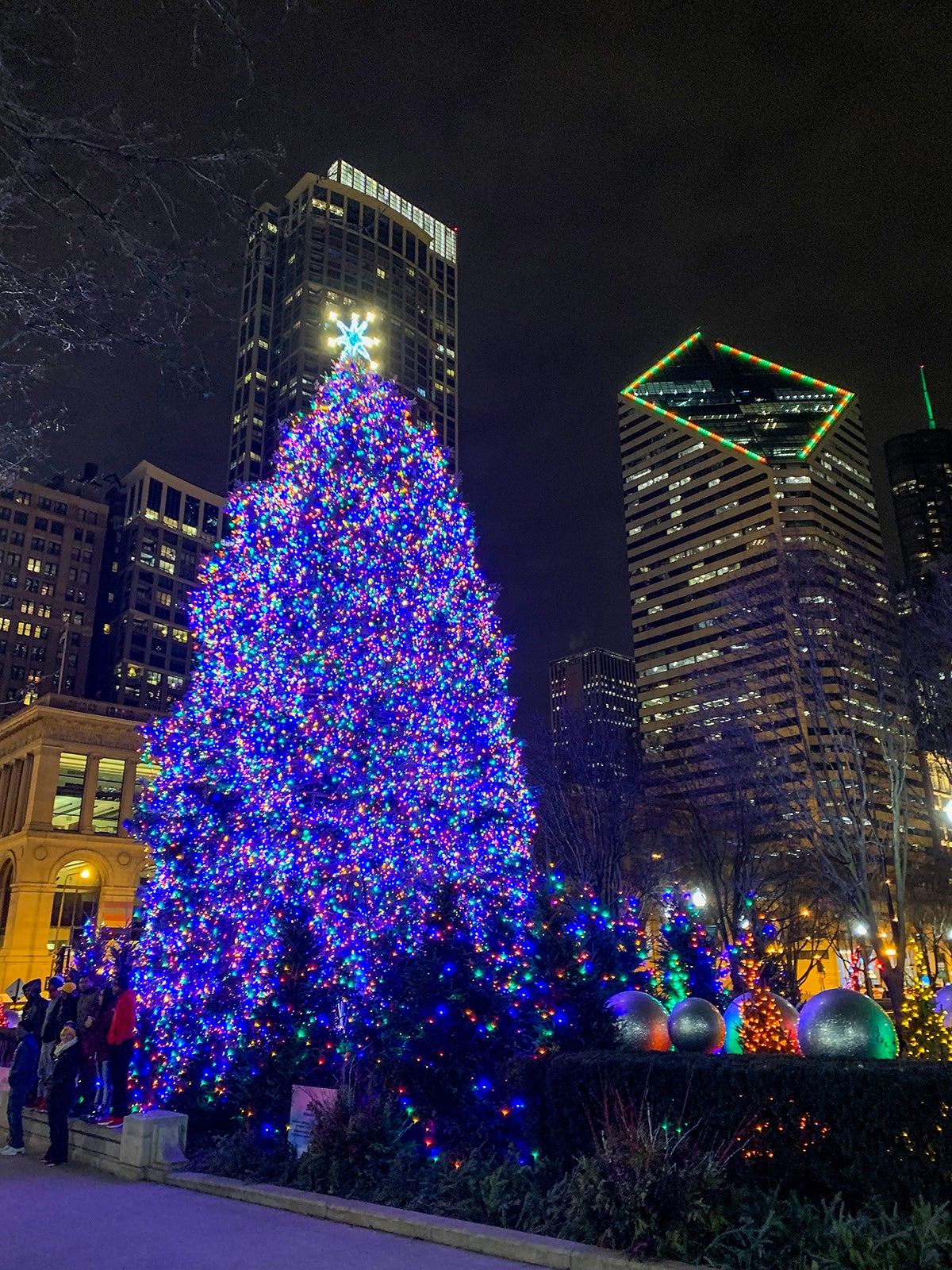
Flexibility is key when it comes to finding cheap airfare any time of year.
Changing your arrival or departure date by a single day can save you hundreds of dollars on airfare. If you don't mind altering your family's plans slightly, consider booking travel directly on major holidays like the Fourth of July, Thanksgiving and Christmas for cheaper prices and thinner airport crowds.
One of our favorite tools at TPG for finding deals is Google Flights . You can use the search field to find the cheapest (or best) flights. Google will also give you a historical view of how prices have ranged and will even send you email alerts if fares jump or drop on specific routes you've selected.
It also has some fun tools you can use to find a cheap destination. By clicking the "Explore" button on the sidebar and putting your departure airport, Google will give you a map or list view of the most wallet-friendly destinations.
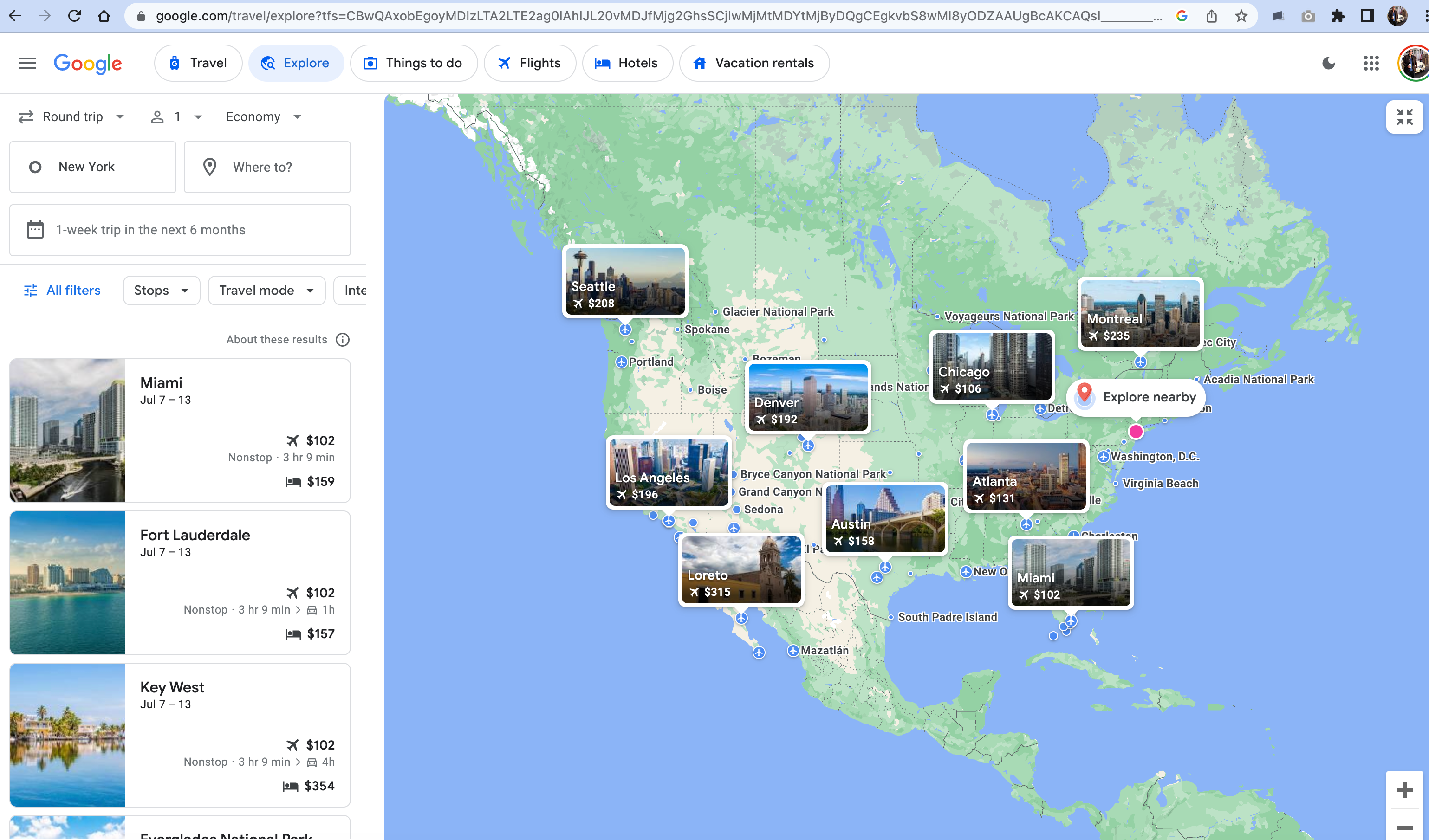
However, Google isn't the only place to find deals: TPG publishes regular deal alerts. You can sign up for Twitter alerts and subscribe to our daily newsletter for the latest deals news.
Don't sleep on mileage awards, either. If you've been hoarding miles during the pandemic, it's time to spend them. Cash prices are high, so it can be a good time to burn those miles.
No matter how much you think you know about redeeming miles for flights , there are always new tips and tricks for turning those earnings into dream trips. Turn to TPG for guidance on sweet spots for redemptions. Sites like ExpertFlyer (part of Red Ventures, like TPG) supply additional redemption ideas or even business class upgrade inventory.
You may even want to consult a travel agent to get access to special deals that aren't available anywhere else. Travel agents can sometimes get you extra perks at hotels or even cheaper business-class airfare to your dream destination.
Be your own best advocate
Since there are still air traffic controller shortages and little room for error in the system these days, travelers have to be their own best advocates.
There are ways to get ahead of any possible travel nightmares.
First, be smart when booking. Try to find a nonstop flight rather than one with connections, even if it costs a little more. You'll eliminate the risk of missing connections and lessen the chance of having your luggage go in a different direction than you during a transfer.
You could also take one of the first flights of the day, as those are least likely to face afternoon thunderstorms and most likely to depart on time. Read our article 5 reasons to book the first flight of the day for all the data.
Related: Your flight is canceled or delayed – here's what you should do next
Download your airline's mobile app to keep track of potential flight delays in real time. The airline app is a secret weapon in case things go wrong. Not only will you know when boarding starts, but you'll also learn of any delays first. Some airlines allow you to even rebook yourself in the app.
If your flight is canceled, you'll want to beat everyone else on your flight who is also looking to get rebooked.
We recommend heading for the customer service desk (or lounge desk if you have access). You could also get on the phone with the airline or contact them via social media if there's a delay . Sometimes, an airline's Twitter representative will help you faster than a phone or in-person agent can. You have to use every tool at your disposal when things go south.
Many airlines also now have live chat capabilities to help navigate delays and cancellations.
I always have an alternate plan (or two) in the back of my mind in case a flight gets canceled or delayed. I also look to see what other airlines are flying the route I'm booked in case something goes awry. This way, I'll know what to ask for if I need to be rebooked.
Also, save all the receipts for the expenses you incur during delays or cancellations. You'll want excellent documentation in the case of meltdowns like the one Southwest passengers experienced during the holidays .
If you're stuck at an airport for an extended period, seek out your airport's secret quiet spaces for a brief escape from the travel chaos.
Get Global Entry and/or TSA PreCheck

One of our favorite ways to speed through the airport and avoid those summertime mega lines is via Trusted Traveler programs like TSA PreCheck and Global Entry .
Essentially, the government pre-screens you for security and thus you save a bit of time during your travels. You'll need to apply ahead of time and pay a fee. The great news, however, is that many credit cards will give you a statement credit for these fees. TSA PreCheck is a $78 application fee for five years, and Global Entry is $100.
Related: 7 ways to get Global Entry, TSA PreCheck and/or Clear for free
TSA PreCheck allows you to speed through airport security without removing your shoes, laptops or liquids. With Global Entry , you can breeze through customs when you return from an international trip.
If you have the time, going for Global Entry rather than simply TSA PreCheck makes sense. Global Entry requires an interview with Customs and Border Patrol ahead of time, but once you're approved, TSA PreCheck will be included.
Get Clear for the ultimate security trifecta

The other security tool we recommend you have in your travel toolbelt is Clear .
Related: Why you should get TSA PreCheck and Clear
The expedited security program allows you to bypass long security lines by using a separate lane at many airports. You'll approach a kiosk where your identity is confirmed via an iris scan or fingerprint. A Clear employee will then escort you to the front of the security screening line.
A Clear membership combined with TSA PreCheck will enable you to go to even shorter lines at some airports with designated Clear/PreCheck lines. Clear isn't perfect at all airports where it's so popular, and there are now long lines (cough, Atlanta). However, it will still generally lead to shorter lines overall.
Related: Guide to using the Amex Platinum Clear benefit
Make copies of your important documents
Make digital and hard copies of all your important travel-related documents. Start by photographing your driver's license, your state ID and/or your passport.
You should have copies of your IDs in your phone's library in case you get separated from the actual document. Sometimes, it also helps in a pinch if you are asked for ID, and you didn't bring the hard copy. For example, I was recently asked for my ID to enter One Vanderbilt to have dinner at the new American Express Centurion Lounge in New York. The receptionist would have accepted a photograph of the ID if I didn't have the physical document.
TPG also recommends having an actual photocopy in a separate place. Editor Kristy Tolley says she stores a hard copy in a separate place from where she keeps her passport in case she loses a bag. "I also leave a copy of it at home if I'm traveling alone," she said.
Check expiration dates
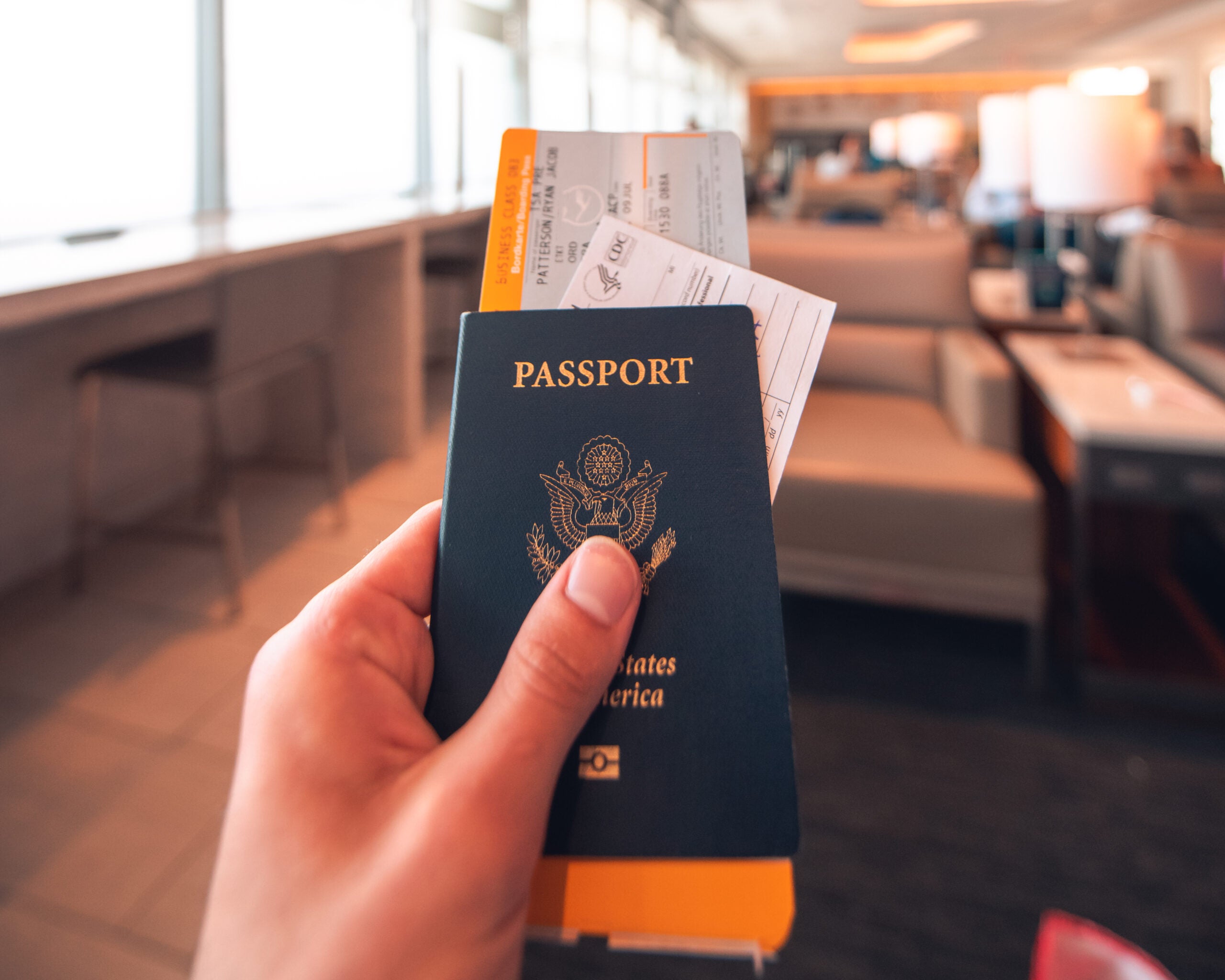
If you aren't 100% certain of the expiration date of your passport and other travel documents, go check them now. Renewing passports takes time, and some countries require six months of future passport validity to allow entry. Remember that child passports expire every five years, which can sneak up on you.
Related: How and when to renew your passport
Double-checking the expiration dates for your driver's licenses and state IDs is also a good idea. Remember that TSA checks the expiration dates on your documents when they screen you for security. Don't forget to check the expiration dates for your Trusted Traveler programs like Global Entry, Clear and TSA PreCheck, too. It can take a while to get a Global Entry interview appointment if you need one to renew.
Few things are worse than getting to the front of the security line and realizing the PreCheck mark is gone from your boarding pass.
Finally, check the entry requirements if you are traveling internationally. Some countries require visas that you must acquire before arrival.
Consider travel protection
When booking your travel, try to use a credit card that offers some built-in travel protection . Many credit cards, including TPG favorites like the Chase Sapphire Reserve or The Platinum Card® from American Express , offer this when you use those cards to purchase your airfare and similar.
Related: Best credit cards for trip delays and cancellations
If the coverage offered by your credit card isn't enough, you might also want to purchase travel insurance . These policies can sometimes go beyond trip cancellations to cover things like medical evacuations. Warning: Read the fine print on any extra policies very carefully to ensure it covers the situations that matter the most to you.
Those who frequently travel abroad may want to consider purchasing an annual travel insurance policy instead of buying one on a trip-by-trip basis. Some TPG staffers purchase annual policies because of the cost savings for multiple trips. Some will find having an annual policy is easier than juggling separate policies or various credit card coverage terms and conditions.
Tips for your luggage

TPG has a ton of tips when it comes to luggage.
First and foremost, try to be on "team carry-on" whenever possible. If you don't check baggage, you are much less likely to become separated from it. Many of us at TPG refuse to check luggage except under extreme circumstances.
Of course, other folks with families or those embarking on long journeys may still want to check bags. If that's the case for you, you can still do many things to lessen the chance you get separated from your stuff. For example, make sure your luggage is in good working order, your contact info is attached, the bag is within the weight limits, you get to the airport early (but not too early) to check it and confirm your luggage is tagged to the right destination or connection.
Related: 7 tips to keep the airline from losing your luggage
After last year's baggage delays and luggage disasters , we strongly suggest you put Apple AirTags (or the Android equivalent ) into your luggage so you can track your items if they go missing .
If you check a bag, keep extra medicine or medical supplies in your carry-on bag in case your luggage goes missing or gets delayed. "As a diabetic, I keep a tiny emergency kit in my backpack with enough supplies to keep me going in an emergency," TPG writer Tanner Saunders said.
Former TPG credit card writer Ryan Smith also offered words of advice regarding luggage. "The last items you pack in your carry-on will be most accessible, so use this for your passport, ID, ticket, headphones or whatever else you need during the trip," he said. By making sure those items you'll use most are easiest to reach, you'll save yourself the hassle of having to dig around (or partially unpack) your bag to grab what you need.
Finally, be sure and get compensated if your bags are late or lost. Many airlines will give you points or even cash for delayed bags, and the government has rules on compensation if your bags are lost.
Staying safe on your journeys

From potentially getting robbed while on the road to experiencing bad weather or natural disasters while traveling, there are many scenarios that could arise when you're away from home.
To mitigate those risks, pay attention to U.S. Department of State warnings about a destination you plan to visit and check local sources for the latest news from that country or region for additional context. Although the State Department tends to err on the side of caution with its warnings, it's still best to be aware of what you may face during your trip.
Also, know the local number in case of emergencies. In many places, including Mexico and much of Europe, if you dial 9-1-1 on your cellphone, you will be connected to emergency services just like in the U.S. However, you should know the local emergency numbers of whichever country you visit.
Let people at home know your itinerary and stay in touch with them throughout your trip. If something goes amiss, at least someone will know where you're supposed to be or the last place you visited.
If you're arriving at night, contact your hotel or home-share host to ask about the best way to get there at the time you're arriving and the safest ways to travel at night in that area.
Also, be strategic about how you check into a hotel. Some solo travelers request two keycards to imply someone else is on the trip. Giving thought to the hotel room's security swing bar can also make sense, with some taking steps like placing a hand towel over it to make it harder to dislodge from the outside.
Some final tips
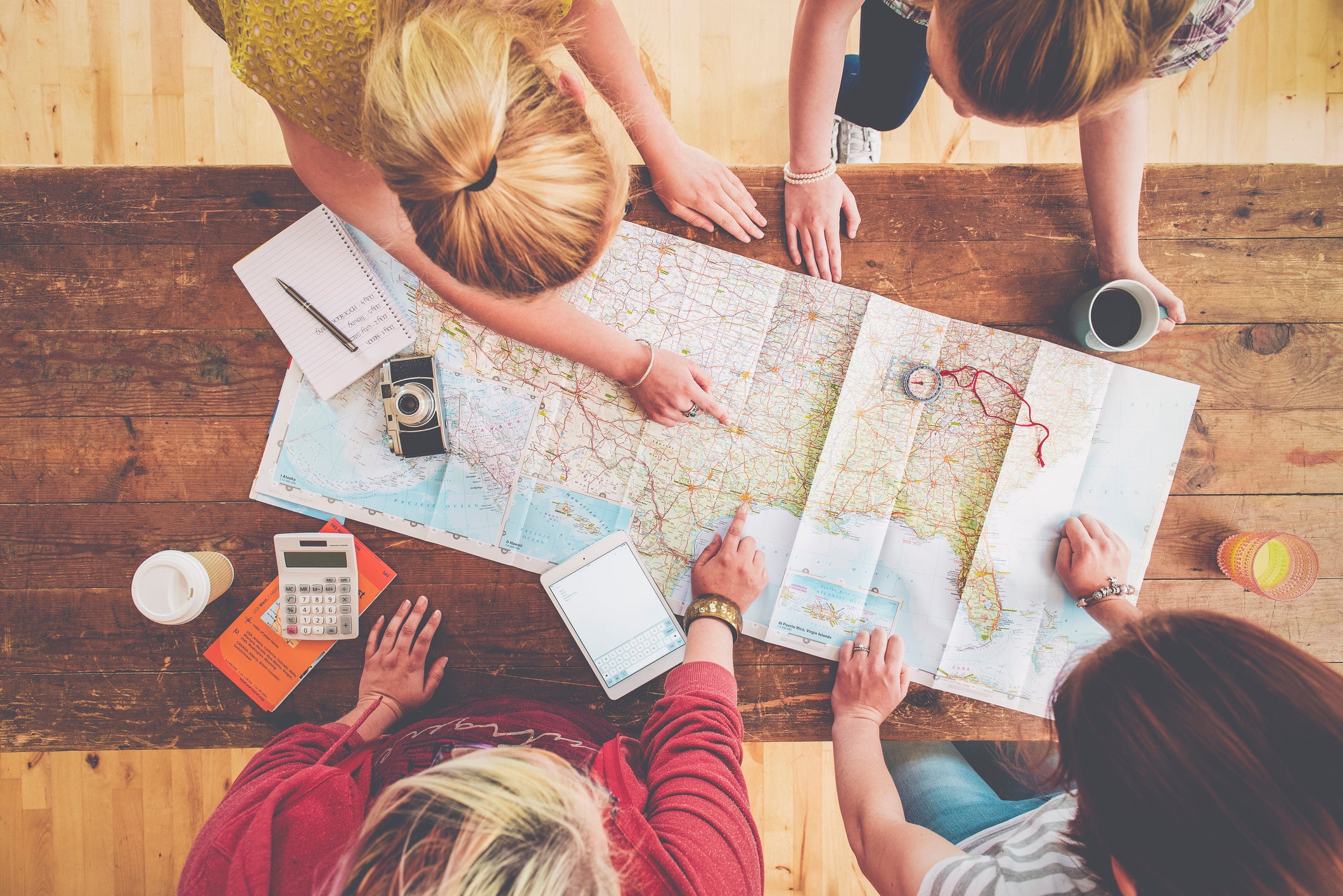
- For cruisers, TPG principal cruise writer Gene Sloan suggests arriving in port at least a day in advance (if not several days ahead of time). This will eliminate the risk of missing your ship's departure time and help you get acclimated to the local time zone.
- When taking road trips to out-of-the-way destinations, go old school and bring paper maps with you or download offline maps from Google. Using a paper map or an offline version means you always have a way to navigate around your chosen destination, even if you lose cellular service.
- One other note, you should reserve airport parking ahead of time during peak travel times. Some airport parking areas fill up fast around holidays, so reserving your spot ahead of time will save you from wasting time looking for a space when you need to catch a flight. You can also sometimes save by booking online in advance, too.
Bottom line
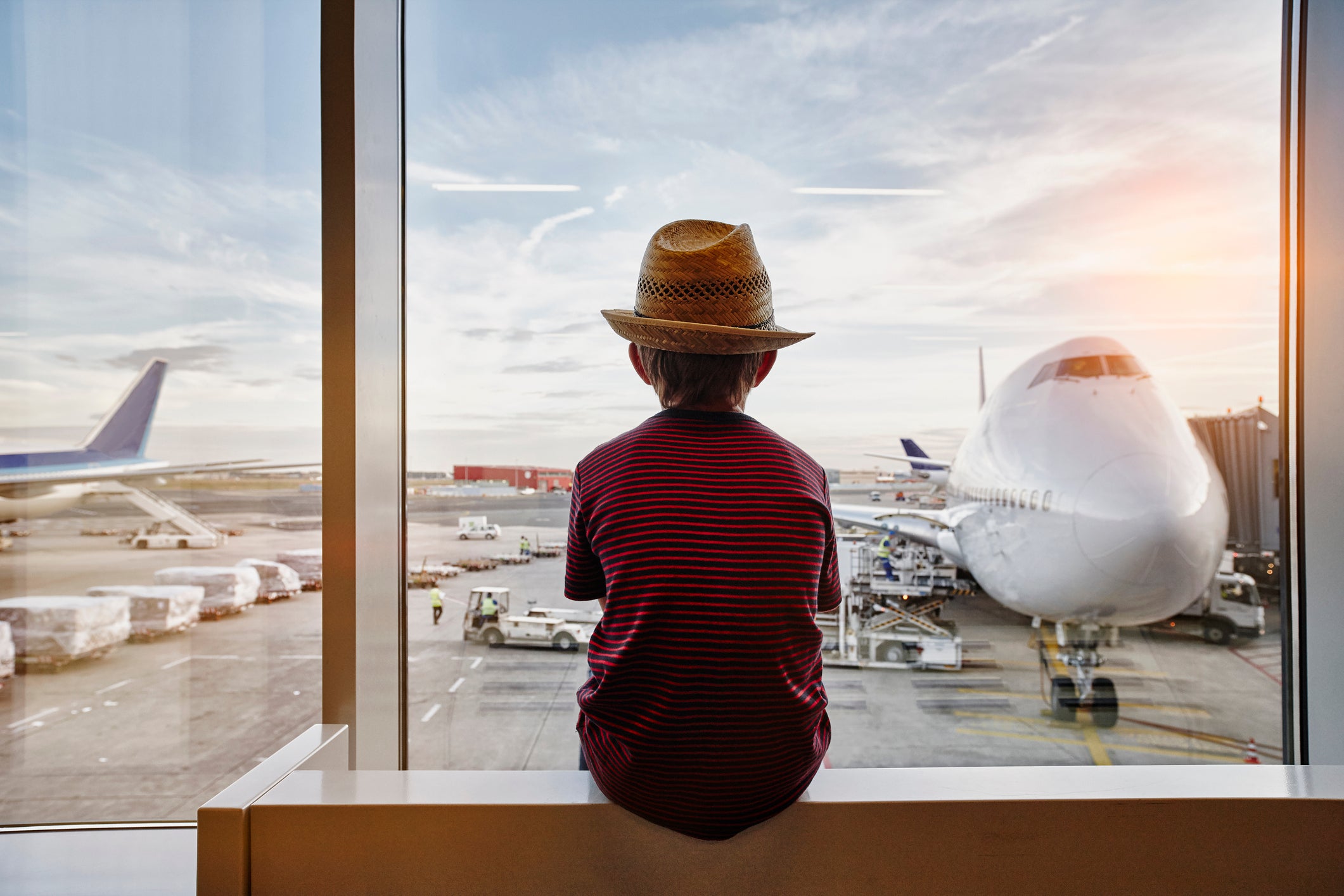
Whether you're fresh to the world of traveling or a seasoned expert, you can always learn new tips to maximize your time away from home. The more research and preparation you do before your trip, the better your experience will be — especially if things go wrong, as they sometimes do.
Some of our favorite tools are deal alerts, Google Flights , sign-up bonuses and credit card rewards . Learn those tools and use them for better travel every time.
Remember that these days when things go wrong, you have to be your own best advocate. For more travel tips and tricks, read the stories below.
Related reading:
- Your flight is delayed or canceled: Here's what to do next
- The best travel credit cards
- The 18 best places to travel in 2023
- 6 real-life strategies you can use when your flight is canceled or delayed
- 8 of the best credit cards for general travel purchases
- Here's how to get through airport security faster
History Fangirl
The Ultimate History Travel Blog Since 2015
101 Epic History Travel Ideas to Help Plan Your Next Adventure

Last Updated on: 26th September 2021, 11:33 pm
It’s super common for travelers to have a list of places they want to see or a bucket list for a specific continent or country.
If you’re like me, you want to see as many historic places as you can squeeze in! Looking for ideas for an epic history travel inspired adventure?
Wondering what kinds of historical sites people are visiting after hitting the famous spots like the Roman Forum and the Acropolis ?
Whether you want an around-the-world adventure or are looking for something in your own backyard, here’s a giant list of 101 ideas for your next history-inspired trip.
(Looking for more history travel inspiration? Check out the episodes of The History Fangirl Podcast for in-depth overviews of the history of some of the world’s most amazing and interesting places).
My Favorite Travel Booking Sites for 2023
These are my favorite companies that I use on my own travels.
Protect Your Trip via Safety Wing
Find the best city tours, day tours, bus tours, & skip-the-line tickets on GetYourGuide and Viato r .
Find the best deals on hotels & vacation rentals on Booking.com .
For English-speaking private airport transfers, book through Welcome Pickups.
For road trips and independent travel, rent a car through Discover Cars .
Find information and cruise reviews on Cruise Critic.
For packing and travel essentials order via Amazon .
Book an affordable family or romantic photography session on your trip through Flytographer (Use the code HISTORYFANGIRL for 10% off your first photoshoot).
For travel guidebooks to have with you during your trip, I always pick one or two from Rick Steves and Lonely Planet.
North America
- Tour the White House.
- Host historians John Meecham and Doris Kearns Goodwin for afternoon tea.
- Take a driving tour of Gettysburg.
- Walk across the Selma Bridge to commemorate the fight for Voting Rights, then pop over to Birmingham to learn about its role in the Civil Rights Movement in Alabama.
- Go on a volunteer archeological dig at Cahokia.
- Take a bike tour of Mexican haciendas.
- Cruise the Northwest Passage in Canada.
- Visit the monuments to freedom erected by former slaves in Haiti after the revolution.
- Take a sunset walk around La Fortaleza and Old San Juan in Puerto Rico.
- Tour the earliest settlements by Europeans in the New World at St. George in Bermuda.
- Play old-school Oregon Trail while driving the Oregon Trail.
- Recover the lost history of America’s Black Pioneers and learn about the early stages of the Underground Railroad in Ohio and Indiana.
- Drink coffee at the first coffee plantations in southeastern Cuba.
- Visit the Mayan Ruins of Tikal in Guatemala at sunrise.
- Sail to Tayasal, the last Mayan city which wasn’t conquered until 1967 in Guatemala.
- Take in the Templo Mayor, the Aztec site dedicated to the God of Rain, mid rainstorm, in Mexico City.
- Hike San Antonio’s Mission Trail, seeing all five of the UNESCO-protected San Antonio Missions , including the famed Alamo.

South America
- Trek one of these six alternative routes at Machu Pichu in Peru.
- See the tug of war between the Spanish and the Portuguese Colonial styles in Colonia del Sacramento in Uruguay.
- Have a low-key evening with Evita on Netflix and a bottle of Malbec in Buenos Aires, Argentina.
- Ride the century-old cable cars up to the top of the Sugar Loaf as part of the UNESCO World Heritage Site in Rio de Janeiro , Brazil. (Don’t worry, the actual machinery was updated in the 1970’s).
- Sail (or fly) to Ecuador’s Galapagos Islands and see the lands and animals that inspired Darwin to pen his theory of evolution.
- Taste history at the Mercado del Puerto , where parrillas have been serving Uruguayan barbeque cooked on open wood stoves for over a hundred and thirty years in Montevideo, Uruguay.
- Fly to Chile’s Easter Island to explore Orongo, the UNESCO World Heritage Site, to see the ruins of the Birdman cult.
- Visit the politely named Court of the Holy Office, the torture house with a dark past that served as the Palace of the Inquisition in Cartagena, Colombia.
- See the shipwrecked Lady Elizabeth which left Vancouver for Mozambique in 1912 but became stranded en route near the Falkland Islands and has been stuck in Whalebone Cove since 1936.
- Visit Ile du Diable , also called Devil’s Island, the French penal colony famed for abhorrent conditions, located on a jungle island circled by sharks, off the coast of French Guiana.
- See the Dutch influences on the continent with a visit the to seventeenth-century Dutch historic district in Paramaribo, Suriname.
- Envision life during the age of the dinosaurs with a visit to Dinosaur Dance Floor, which boasts six different kinds of dinosaur footprints including a section made by a baby Tyrannosaurus Rex nicknamed “Johnny Walker” near Sucre, Bolivia.
- Explore the central historic district in Quito, Ecuador , which is a UNESCO World Heritage Site and the best-preserved Spanish colonial neighborhood in Latin America.
- Visit Coro, the early sixteenth-century colonial city that is the only remaining example of the fusion of Carribean, Spanish, and Dutch colonial architectural in Falcon, Venezuela.
- See over ten thousand years of human history at Quebrada de Humahuaca, which was a site for some of the earliest human settlements in South America. The site also served as an important caravan route for the Inca Empire, a communication link between the Viceroyalties of Peru and the Rio de la Plata, and was the site for important battles in the Spanish War of Independence in northern Argentina.
- See the monuments and pyramids of the Norte Chico culture at Caral-Supe, one of the earliest settlements in the Americas, near Lima, Peru.
- See the stunning fusion of European and Indigenous architecture in the sixteen wooden Churches of Chiloe on the Chiloe Archipelago in Chile.

- Hike the length of Hadrian’s Wall in northern England.
- See a Shakespearean play at the Globe Theater in London, England.
- Sift through the Archives of the Crown of Aragon, one of the oldest in Europe, in Barcelona, Spain.
- Tour the beaches of Normandy and see where the Allies started the Liberation of Europe in northern France .
- Find the lock of Lucrezia Borgia’s hair preserved at the Biblioteca Ambrosiana in Milan, Italy.
- Sail a fjord in a replica Viking Ship in at the Viking Museum in Roskilde, Denmark .
- Tour the secret Soviet bunker hidden beneath a spa in Ligatne, Latvia.
- Make a special appointment to see the skull of Kara Mustafa Pasha, the grand vizier of the Ottoman Empire who lost the Siege of Vienna. On display for centuries, it has since been pulled from the exhibitions and sits in storage in Vienna, Austria.
- Eat a delicious lunch in the restaurant where Julius Caesar was assassinated (although it wasn’t a restaurant 2,000 years ago…) in Rome, Italy.
- Track every point on the Struve Geodetic Arc that Friedrich Georg Wilhelm von Struve used to calculate the exact size and shape of the earth in Eastern Europe.
- Walk the Comino de Santiago to the grave of Saint James in Santiago de Compostela, Spain.
- See one of the only monuments to Trans history in Barcelona’s Parc de la Ciutadella in Barcelona , Spain.
- Explore the history and art of Orthodox Monasteries in Rila, Bulgaria , Meteora, Greece , and Bucovina, Romania .
- Learn about Soviet life and photograph Chernobyl disaster with a day trip from historic Kiev to tour the Chernobyl Exclusion Zone and the Atomic Town of Pripyat in Ukraine .
- Go for a swim at Petrou tou Romiou, one of Cyprus’s prettiest beaches and the spot where Cypriots believe that Aphrodite emerged from the sea.
- Go on a pub crawl through the literary pubs of Dublin in Ireland.
- Climb to the top of the Acropolis to appreciate the achievements of the Golden Age of Athens , and then head to the Acropolis Museum to learn about millennia worth of destruction at the hands of Greece’s invaders in Athens , Greece.
- Explore the historic center of Istanbul, including the Hagia Sofia, the Blue Mosque , the Grand Bazaar , and the Theodosian Walls , to appreciate how the city has been at the center of history and politics for over seventeen hundred years. In Istanbul, Turkey.

- See the ruins of Carthage outside of Tunis, Tunisia.
- Take a Tunisian Louage south to the Great Mosque in Kairouan , the fourth holiest city in Islam, in Kairouan, Tunisia.
- Tour the Egyptian Pyramids and take a cruise on the Nile while pretending you’re Egyptian royalty.
- Think about the enormous span of human history in Olduvai Gorge in Tanzania, which covers human evolution all the way back to 2.1 million years ago.
- Visit one of the most interesting and unique mosques in the world at the Larabanga Mosque in Ghana.
- Visit Robben Island, where Nelson Mandela and other South African anti-apartheid protestors were imprisoned in South Africa.
- See the remains of Arab and Portuguese influence on the UNESCO World Heritage protected Island of Mozambique.
- Visit Mali’s famed Timbuktu and then challenge your friends to name the country you’re in. Count how many think the place isn’t real.
- Pick out which palace you prefer at the Royal Palaces of Abomey in Benin, where each of the twelve reigning kings built their own.
- Peer outside the Door of No Return on Goree Island in Senegal. Contemplate the horrors faced by millions of Africans being forced into generations of slavery and the lingering effects of slavery today.
- Explore Great Zimbabwe, the capital of the Queen of Sheba and important medieval ruins, near Masvingo, Zimbabwe.
- See the political and spiritual capital of the Kingdom of Kongo and see how African kingdoms had to change and adapt after incursions by European explorers began in the fifteenth century, in Mbanza-Kongo, Angola.
- See the Tin Mal Mosque , now abandoned, along one of the most spectacular drives in northern Africa, the Tizi n’Test, near Tinmel, Morocco.
- Visit the virgins who guard the Ark of the Covenant at the Chapel of the Tablet in Askum, Ethiopia.
- Head out to Man and Woman Lakes, two crater lakes on Mount Manengouba, believed to contain the spirits who control the weather and create local storms. Bathing in Man Lake is reserved for local Bakossi ceremonies, but foreigners are permitted to swim in Woman Lake. Near Bangem, Cameroon.
- Visit the shrines and sanctuaries dedicated to the Yoruba fertility goddess Osun at the Osun-Osogbo Sacred Grove in Osogbo, Nigeria.
- Scuba dive the Pharos Lighthouse in Alexandria, one of the seven wonders of the ancient world, in Alexandria, Egypt.

- Enjoy sunrise at Angkor Wat in Cambodia before heading off to explore the rest of Angkor’s historic temples.
- Take a floating tour of Trang An, called the Halong Bay on Land, to see the gorgeous Confucian temples in Vietnam.
- Visit the eleventh century Temple of Literature, the oldest university in Vietnam located in Hanoi.
- Spend a day checking out the famous Buddhist temples in Bangkok , Thailand including the Temple of the Emerald Buddha and the Temple of Dawn.
- Take a walking pilgrimage on the Kumano Kodo Trail in Japan .
- Climb the 1200 steps to the top of Sigiriya to see the ancient palace ruins in Dambulla, Sri Lanka.
- Explore the city-state of Singapore to learn about its unique history after independence from Malaysia.
- Hike the Baekdu Daegan Trail, the spiritual center of Korean mountain spirit worship and an important area for all local prominent religions. The trail runs the length of the Korean peninsula, but one of the highlights, the temples on Mount Jirisan, is located on the South Korean portion and is reachable to outsiders.
- Visit all four pilgrimage sites of the Char Dham, a pilgrimage route that all Hindus are required to undertake, located in the far north, south, east, and west of India.
- Explore the history of the Silk Road by traveling through Azerbaijan and seeing fire temples, crude oil spas, and Shia pilgrimage sites, all of which had elevated prominence due to the numerous travelers spreading the word after traversing the ancient route.
- Take a trek through the steppe, staying in yurts and riding horseback, to see what life was like as a nomad in rural Mongolia.
- Attend the biennial World Nomad Games , to see how modern nomads carry on the sporting traditions of their Central Asian ancestors, including horseback riding, falconry, and Kok-Boru, a sport where riders battle for a goat carcass. Held in various locations, the games in 2018 were held in Kyrgyzstan . They are expected to move to Turkey in 2020.
- Visit the secret underground printing press that Joseph Stalin used to create his propaganda in Tbilisi, Georgia.
- Explore the Russian Far East by train via the Trans-Siberian and Trans-Mongolian railway systems in Siberia, Russia.
- Tour the Forbidden City, where the Chinese emperors lived for over 500 years, in Beijing, China.

The Middle East
- Celebrate Christmas at the Church of the Nativity , where Christians believe Jesus was born. Pick between the three different Christmas celebrations held there annually due to the different calendars used by different Christan sects. In Bethlehem, West Bank , Palestine.
- See the ruins of the lost city of Petra in southern Jordan and see its sister site Mada’in Saleh in Saudi Arabia.
- See how Judaism, Christianity, and Islam are literally layered on top of each other while exploring the Old Town in Jerusalem.
- Visit the architecturally unique ninth-century Great Mosque of Samarra in Iraq.
- Remember the victims of the Ottoman Turks by visiting Martyr’s Square, named for the Lebanese nationalists executed in 1916. The square also served as the dividing line for the two sides during the Lebanese Civil War. In Beirut, Lebanon.
- Feel like you are in a life-sized sand castle with a trip to the sixth-century historic city of Arg-e Bam in Kerman Province, Iran.

- Visit the eleven penal colony sites spread across Australia which collectively comprise the UNESCO World Heritage site Austrailian Convict Sites.
- Take the long drive from Alice Springs to Uluru, the famous rock site which is sacred to the local Aboriginal Pitjantjatjara Anangu. The site includes important rock art and ancient paintings. In the Northern Territory, Australia.
- Visit Tamaki Maori, a village where Polynesians have lived since the thirteenth century, in Rotorua, New Zealand.
- Visit the three sites associated with Chief Roi Mata’s Domain, one of the most remote UNESCO World Heritage Sites in the world, in Shefa, Vanuatu.
- See the civilization that was created by the surviving mutineers of the HMS Bounty on Pitcairn Island.

- Visit the South Pole Flag Mast like the true badass you are, remembering all the people who fought to see the South Pole and the team that planted it in 1965.
- Find the bust of Vladimir Lenin, placed by a team from the USSR, in 1958.
- Journey to the Inexpressable Island Ice Cave to see the seal bones and other remains from the 1912 team that was forced to erect the ice cave and winter on the island.
- See where Shackleton’s crew waited four brutal months to be rescued at Point Wild on Elephant Island.
- Observe for signs of paranormal activity at Whalers Bay on Deception Island, where abandoned buildings and a buried cemetery give the uninhabited island an extra spooky flair.
- Sail from South America to Antarctica by passing through Drake’s Passage, named after English explorer Sir Francis Drake.

You Might Also Enjoy:
- The 50 Most Beautiful Castles in the World
- 9 Gorgeous Orthodox Monasteries You Need to See to Believe
Have You Undertaken any Epic History Travel or History-Inspired Trips? Leave the Destination and a bit about it in the Comments so other History Travelers can get inspired!
Pin this article for your next history travel adventure.

In this Article:
1 thought on “101 Epic History Travel Ideas to Help Plan Your Next Adventure”
Waouh !!! All many interesting informations ! First of all, I want to thank you for your experiences told to everybody in all your articles ! I am a french woman and actually, as I start a travel blog focused on France, I’m trying to get into the world of blogging. But it’s not easy… Your blog is wonderfull and I am not sure mine will be as beautifull as yours !
Leave a Comment Cancel reply
Your Online Travel Guide & Magazine
Find your destination below and Explore the History of it
Citytrip to Trier?
Explore the history of Germany's oldest city in this Ultimate Travel Guide.
Have you ever been to this Penis Park?
It all started with a tragic Legend. Read here more about it...
How to arrange a Tour to Auschwitz-Birkenau?
Read everything about the history of this concentration camp and all the information for a visit...
Would you like to visit Hobbiton Movie Set?
Here you can read all about The Lord of the Rings and how to book a tour to this special park
An Ultimate Travel Guide to Jaffna
Jaffna was the setting of the civil war for more than 20 years. Now it is a fascinating city with a lot of history
Take this walk through the monastery village of Steyl
Discover this religious village in the province of Limburg
The world is a book, and those who do not travel read only a page.
- st. augustine (354-430), palace of justice – discover the site of the nuremberg trials, trier | 11 sights of history in the oldest city of germany, amsterdam travel guide | history, sightseeing & tips, auschwitz, poland | visit the hell on earth, the white city discover beautiful thorn in limburg, veere | 5 x things to do in the most charming fortified town of zeeland, trincomalee, sri lanka – the ultimate travel guide to history, miyajima, japan – the ultimate travel guide to history, ho chi minh city travel guide – discover history & 10x to..., khao sok national park – the ultimate travel guide of history, galle, sri lanka – the ultimate travel guide to history, dmz tour | discover the disputed border of north and south korea, hobbiton, matamata | visit the shire from the lord of the rings, waitangi treaty grounds | where new zealand became a state …, paihia, bay of islands | meet the dolphins of new zealand | travel guide, about travel4history.
Travel4history discovers the best and most special places on earth and unravels the special history that lies behind these places.
This website uses cookies to improve your experience. We'll assume you're ok with this, but you can opt-out if you wish. Accept Read More
Nomadic Matt's Travel Site
Travel Better, Cheaper, Longer
My Best 61 Travel Tips to Make You the World’s Savviest Traveler

Most people aren’t born savvy travelers. It’s something that only comes with on-the-road experience. Travel savviness is a process born of missed buses, foolish behavior, cultural unawareness, and countless tiny errors. Then, one day, you begin to seamlessly move through airports and integrate yourself into new cultures like a fish to water.
In the beginning, you just make a lot of travel mistakes.
But I want to help speed up the process and help you avoid my mistakes ( and I often make a lot of them ), so I put together this giant list of my best travel tips that cover everything under the sun to help you reach your full travel ninja potential.
I’ve learned these tips over the last sixteen years being a nomad.
These tips for traveling will have you saving money, sleeping better, getting off the beaten path more, meeting locals, and just being a better traveler.
So, without further ado, here are the best 61 travel tips in the world:
1. Always pack a towel. It’s the key to successful galactic hitchhiking – and plain common sense. You never know when you will need it, whether it’s at the beach, on a picnic, or just to dry off after a shower. While many hostels offer towels, you never know if they will or not, and carrying a small towel won’t add that much weight to your bag.
Make sure it’s a lightweight, quick-drying towel since regular towels are too bulky and heavy (and they take a long time to dry). Dry Fox travel towels are my favorite (use the code “nomadicmatt” for 15% off your purchase)!
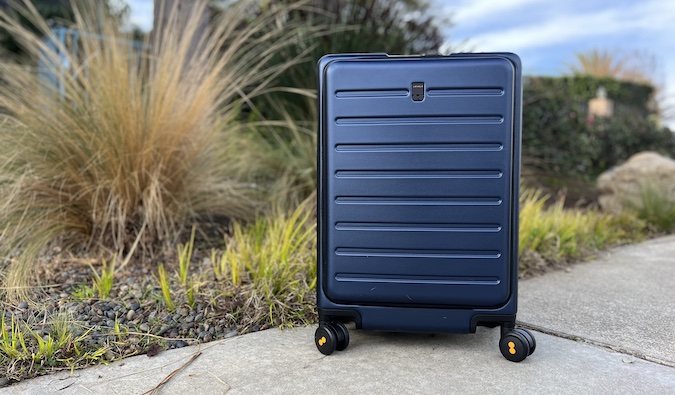
My favorite bag is the Flash Pack from REI . Other companies offering high-quality bags are Osprey, Nomatic, and MEC (for Canadians).
This article has more tips on finding the best travel backpack for your needs.
The same rule applies to suitcases. Don’t take a huge suitcase because they are a pain in the butt to lug around, especially if you’re traveling long term (short term, not so much). I like Level 8 suitcases. They are durable, quite spacious, nicely designed, and well-priced (luggage can be pretty damn expensive). Plus, they have a TSA lock built into the zipper. You can click here to learn more and buy one .
I also recommend packing cubes , which are essential if you’re going to be living out of a backpack for a few weeks (or months), or you just want to keep your suitcase better organized. They come in a variety of sizes, allowing you to store items big and small. They’re great for making it easy to find everything in your backpack or suitcase.
3. Pack light. Write down a list of essentials, cut it in half, and then only pack that! Plus, since you bought a small backpack like I said above, you won’t have much room for extra stuff anyways! Take half the clothes you think you will need…you won’t need as much as you think. It’s OK to wear the same t-shirt a few days in a row.
I love Unbound Merino , as their travel clothing can be worn daily for weeks without getting smelly. They are super light and they look sylish too. I really love the material, they’re comfortable, they hardly ever need a wash, and they last forever!
Click here for more packing tips .
4. But take extra socks. You’ll lose a bunch to laundry gremlins, wear and tear, and hiking so packing extra will come in handy. Take a few more than you need. Trust me on this. Nothing beats a fresh pair of socks!
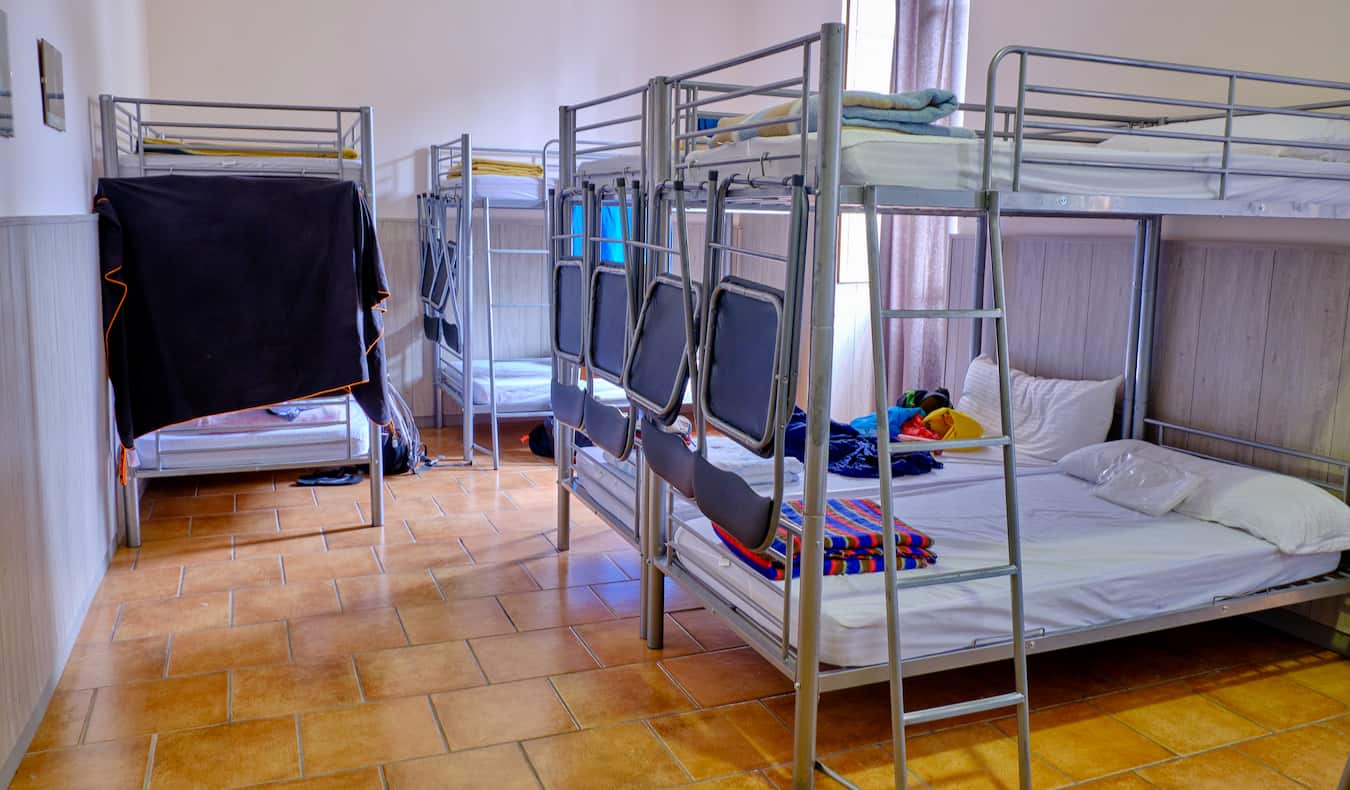
Here’s a list of all my best hostels around the world . If you’re planning on backpacking Europe , it’s worth getting HostelPass , a card that gives you up to 20% off hostels throughout Europe. It’s a great way to save money, and they’re constantly adding new hostels too. I’ve always wanted something like this and so I’m glad it finally exists. Use code NOMADICMATT for 25% off.
6. Take an extra bank card and credit card with you Disasters happen and things get stolen or compromised. I once had a card duplicated and a freeze put on it. I couldn’t use it for the rest of my trip. I was very happy I had a backup. You don’t want to be stuck somewhere new without access to your funds. This happened to a friend once and they had to borrow money for me for weeks while they waited for their new card to arrive.
Here are some helpful articles on banking:
- How to Avoid Banking Fees While Traveling
- 22 Ways to Cut Your Expenses and Have Money for Travel
- How to Pick the Best Travel Credit Card
7. Make sure to use no-fee bank cards. Don’t give banks your hard-earned money. Keep that for yourself and spend it on your travels. Get a credit card and debit card that doesn’t charge a foreign transaction fee or an ATM fee. Over the course of a long trip, the few dollars they take every time will really add up!
Here’s an article that will tell you how to do that.
8. Don’t fly direct. When booking flights, sometimes it is cheaper to fly in to airports close to your final destination, and then take a train, bus, or budget airline to where you need to go.
To use this method, find out how much it is to go directly to your destination. Then, look at prices to nearby airports. If the difference is more than $150 USD, I look to see how much it is to get from the second airport to my primary destination.
My favorite flight search engine is Skyscanner . This is my go-to website for finding cheap flights. It searches a lot of different airlines, including many of the budget carriers that larger sites miss.
Here are some more tips on finding cheap flights!

Here are some helpful articles on solo travel:
- Why I Travel Alone
- The Joy of Solo Travel
- Travel: The Ultimate Personal Development Tool
- How to Overcome Being Alone
- Reading People: One Skill Travel Has Taught Me
10. Always visit the local tourism information center. This is probably one of the most underused travel tips in the world. Tourism information centers know about everything going on in town. They can point you to free activities, special events happening during your stay, and everything in between. They even offer discounts on attractions and transportation. It is their job to help you experience the destination better. It’s amazing how many travelers skip this when they are visiting somewhere but, as a savvy traveler, you know to use this resource!
11. Take free walking tours. Besides being free, these tours will give you a good orientation and background of the city you are visiting. I love, love, love taking walking tours when I travel. You pass the time, you get to pepper the guide with questions, and you get to learn so much about where you are. Here are some of my favorite walking tour companies around the world:
- The Best Walking Tours in New York City
- The Best Walking Tours in London
- The Best Walking Tours in Paris
- The Best Walking Tours in Berlin
- The Best Walking Tours in Amsterdam
And while free walking tours are great, sometimes it’s worth it to take a paid walking tour if you’d like to dig deeper into a particular aspect of the destination. Walks is one of my favorite paid walking tour companies, offering in-depth history and cultural tours in cities around the world (especially Europe). Its small-group tours also tend to offer exclusive behind-the-scenes access you can’t get elsewhere.
For fellow foodies, Devour Food Tours has all kinds of amazing food tours around Europe.
12. Don’t be afraid to use a map. Looking like a tourist isn’t as bad as getting really lost and ending up in the wrong neighborhood. Don’t be afraid to use a map or ask for directions and look like a tourist. After all, you are one!
13. But don’t be afraid to get purposefully lost. Wandering aimlessly through a new city is a good way to get to know it, get off the beaten path, and away from the tourists. You might be surprised by the hidden gems you find. I like to wander around and try to find my way without using Google Maps. Travel is the art of discovery and you never know what cool little spot you’ll come across.
14. Ask hostel staff for information — even when you aren’t staying there. Hostel staff deal with budget travelers all day, every day. They know exactly where to go for cheap meals and attractions. They also tend to be locals so they know the city very well. Ask them for all sorts of information. Even if you aren’t staying in one, just pop in and ask for help. They’ll usually give it.
15. Sign up for flight deals. When it comes to travel, your flight(s) will likely be your biggest expense. Save money by signing up for flight deal websites. You’ll get epic flight deals straight to your inbox, saving you time and money. Also be sure to sign up for airline newsletters, since that is where they will announce their sales first. The best websites for finding travel deals are:
- Going (formerly Scott’s Cheap Flights) – The BEST for upcoming US flight deals.
- The Flight Deal – Great for global flight deals.
- Holiday Pirates – The best for European flight deals.
- Secret Flying – A great site for flight deals from around the world.
16. Don’t buy a money belt — they’re stupid. Thieves know they exist and being seen with one basically shouts, “Look at me, I’m a tourist with money! Rip me off!” The more you can blend in and act like a local, the easier it will be to get deals and avoid touts. If you’re worried about pickpockets, keep a better eye on your stuff!
17. When you go out, take only what you need. Limit the amount of cash and bank cards you carry with you when you go out, so if something does happen, you can easily recover. Never take more than one credit card or ATM card with you. My rule for cash is to limit what I carry to $50 USD.
18. Always carry a lock. Carry a small combination lock with you when you travel. They come in handy, especially when you stay in dorms. Most hostels use lockers, so budget travelers need to provide their own travel lock to keep stuff secured. While you can usually rent or buy them at hostels, it’s much cheaper just to buy one before you go. (Just don’t use one with keys because if you lose the keys, you’re screwed!)
19. Make extra copies of your passport and important documents. Don’t forget to e-mail a copy to yourself too. You never know when you might need to have some sort of documentation with you and might not want to carry your original. Additionally, if your passport gets stolen having a copy will come in handy for your police report.
20. Learn basic phrases in the native language of your destination. The locals will appreciate it and it will make your interactions easier. You don’t need to master the language but learning a few things like “Hello,” “Goodbye,” “Thank you!”, “Where’s the bathroom?” will go a long way to endearing yourself with the locals. They’ll like that you tried.
Here are some tips on how to learn a language .

Here are some posts that highlight my favorite reads:
- 13 Travel Books That Will Give You Serious Wanderlust
- The Best Travel Books
- 12 Books to Take You Around the World
22. Don’t be ashamed to walk into a Starbucks or McDonald’s. Sometimes familiarity is comforting and both places have free wifi and public restrooms you can use. (Just don’t eat the food at McDonald’s! That shit is gross and unhealthy for you! You can get it back home!). Libraries and most modern coffee shops also have free Wi-Fi too.
23. Always get behind business travelers when in security lines. They move fast since they are usually in a rush and travel light. They know the drill. Line up behind them as much as possible. You’ll speed through the line!
24. Never get behind families in airport security. They take forever. It’s not their fault. They just have a lot of stuff because of the kids. Try to avoid getting in lines with lots of kids. It’s going to take a while.
25. When you check in to the hotel, don’t be afraid to ask for an upgrade. They have a lot of flexibility when it comes to assigning upgrades at check-in. It never hurts to ask. Often times they can accommodate you if the hotel isn’t full. Just be super nice!
Note: If you stay in hotels frequently (or want to), it might be worth it to get a hotel credit card . You can earn points on your everyday spending at home and convert those points into free stays. The best cards come with status, making upgrades more likely too!
26. Write down your experiences. Even in this hyper-technological age, I think everyone needs to write more during their travels so they have something to look back on. I never leave home without a journal. Not only do I use them for work (I’m constantly taking notes and writing down ideas) but I also use them to keep track of my travels.
Simple travel journals work great for journaling during your trip as well as for writing down logistical information like directions, contact information, and language tips.
If you want a travel journal that isn’t just blank pages but rather has space for itinerary planning, places to jot notes in the local language, inspirational quotes, and more, grab our new travel journal. It was designed specifically with travelers in mind, so you can take notes as well as write down stories and reflections during your travels.
27. Lunchtime is the best time to visit historical sites. Be a contrarian. You’ll have fewer crowds getting in your way as big tour buses, groups, and most travelers head to lunch. It’s always best to visit an attraction super early, late, or when people eat. You’ll have even the most popular places to yourself!
28. Never eat in a touristy area or near a tourist attraction. As a general rule, I walk five blocks in either direction before I find a place to eat. The closer you are to tourist attractions the more you are going to pay and the worse the food (and service). Use websites like Yelp , Google Maps , or Open Rice to find some delicious and popular restaurants around you.
Additionally, never eat anywhere the menu is in like 6 languages! That means the restaurant is just for tourists!
29. Locals don’t eat out every night and neither should you. Go grocery shopping. You can learn a lot about locals’ diets by seeing the type of food they buy. Plus, it will save you a lot of money. You won’t regret it. Cook your food, save money, and surprise yourself!
30. Eat at expensive restaurants during lunch. Most expensive restaurants offer lunch specials featuring the same food they would serve for dinner but for a fraction of the cost! That’s the best time to eat out when you travel.
I share more tips on how to eat cheaply around the world here.
31. Pack a headlamp. This is a handy tool for both backpackers and anyone looking to do any hiking or camping. If you’re going to be staying in a hostel, having a headlamp is helpful when you need to check in or out but don’t want to disturb your fellow travelers by turning on the lights. They’re also helpful in emergencies.
32. Carry a basic first-aid kit. Accidents happen, so be prepared. I always take band-aids, antibacterial cream, and ointments for minor cuts and scrapes. You never know when you’re going to need it and you can’t always get it when you travel.
You can either assemble a first aid kit yourself ( here are some tips for doing so ), or purchase a pre-made kit online .
33. Don’t believe the cheap flight myths. Don’t drive yourself too crazy trying to get the absolute cheapest fare. There are a lot of myths online about how to find cheap flights, but there is no magic bullet or one secret ninja trick. It’s not cheaper to book on a particular day of the week, or if you search in an incognito window.
Spending five hours to try to save $10 will cause you a lot of stress. Once you find a flight deal that you’re happy with, book right away, as airfares change by the minute. Remember, you usually have a 24-hour window to cancel in case you need to.
Here are some article on how to save money on flights:
- 5 Steps to Booking a Cheap Flight Online
- How to Always Find a Cheap Flight
- Where I Find the Best Travel Deals
34. Use Meetup, the sharing economy, and hospitality websites to meet locals. These websites will help you get an insider’s perspective on your destination by connecting you with locals in the places you visit. The sharing economy has changed the way people travel allowing you to meet locals, get off the tourist travel, and save mega money! It’s a triple win – and I use these resources all the time when I travel.
Here’s an article on how to use the sharing economy (and what websites to use) when you travel.
35. Be open to strangers. Not everyone bites. Say hi to people on the road. Turn strangers into friends. Remember they are just like you! They want to live a happy, full life and have hopes and dreams too! You never know. You just might make some lifelong friends.
36. But keep your guard up. Some people do bite, so keep a healthy level of suspicion. You don’t want to fall for any travel scams or get yourself into uncomfortable situations. Be open but cautious. Here is a list of travel scams to avoid.

- My Favorite Restaurants in Europe
- The Best Places to Eat in NYC
- How to Eat Cheap Around the World
- 30+ Places to Eat in Tokyo
- How to Eat Around the World on a Vegan Diet
38. Avoid taxis. They are always a budget buster. Never, ever take a taxi unless you absolutely have too!
39. Take a reusable water bottle through airport security and fill it up at your gate. Single-use plastics are common in a lot of countries around the world. They’re also polluting our oceans and destroying the environment. Drink from the tap when you can — you’ll save money and help the environment. If you’re going somewhere where you can’t drink the water, be sure to get a water bottle with a filter. I love Lifestraw .
40. Get city attraction cards. If you are going to visit a lot of museums and other attractions in a short period of time, a city pass is going to save you money on admission (plus most provide free public transportation too!).
41. Take pictures of your luggage and clothes. If your bag gets lost, this will help identify it more easily and speed up the process of having your travel insurance reimburse you.
42. Carry emergency cash. Because emergencies happen, like that time in Romania when I couldn’t find an ATM and needed money for the bus to the hostel. I usually try to keep around $200 USD in emergency cash in case something happens!
43. Get good shoes. You walk a lot when you travel. Don’t beat up your feet. Love them as much as they love you, and they’ll take you to amazing places.
My favorite shoes for traveling are Suavs shoes , which are versatile and durable. They’re comfortable and great for exploring a new city all day, but also look nice enough that you can dress them up if you want to at night.
44. Get vaccinated. Because falling prey to an illness in a foreign country is not fun — and many countries require you to get vaccinated in order to visit them. So regardless of your opinion on the subject, you just might have to.
Here is an article on how to stay healthy on the road.
45. Learn to haggle. Haggling is a fun, playful way of not getting charged the foreigner price. It’s the art of negotiating and one that will help you throughout all of life, not just at the market.

Here are some articles to help you get started with using points and miles:
- Points and Miles 101: A Beginner’s Guide
- How I Earn 1 Million Frequent Flier Miles Every Year
- The Best Travel Credit Cards
- The Ultimate Guide to Picking the Best Travel Credit Card
47. Take a jacket. Nights get chilly.
48. Eat street food! If you skip the street food, you miss out on culture . Don’t be scared. If you’re nervous, look for places where kids are eating. If it’s safe for them, it’s safe for you.
49. Get travel insurance. Travel insurance is the most important thing to get that you never want to use. If something goes wrong, you don’t want to be out thousands of dollars in bills. Travel insurance will be there if you get robbed, flights get canceled, you get sick or injured, or have to be sent home. It’s comprehensive and, for just a few dollars a day, one of the best investments you can get for a trip.
You may think you’re superman/woman but so did my friend who broke her arm, didn’t have insurance, and had to pay thousands out of pocket. Insurance was there when I had to replace my camera and when I popped an eardrum scuba diving! Get it! Here are some tips on how to find the best travel insurance.
My favorite companies are:
- SafetyWing – A budget-friendly choice for travelers who need basic coverage. They are affordable, have great customer service, and make it easy to make a claim. If you’re on a tight budget, go with SafetyWing!
- Insure My Trip – The best insurance for those over 70 years old.
- Medjet – This is a membership program that provides emergency evacuation coverage should you get into a dire situation while traveling and be hospitalized. Medjet is meant to supplement your regular travel insurance.
50. Be patient. Things will work out in the end. No need to rush. You’ll get to where you are going in due time. Travel is about the journey, not the destination.
51. Be respectful. Locals are willing to help you out, but there’s probably a language barrier, so keep your cool when something doesn’t go your way. If you don’t, you’ll end up just looking like an asshole tourist.
52. Don’t over plan your trip. Let your days unfold naturally. Schedule two or three things and let the day fill in the rest on its own. It’s less stressful, and letting the day just take you is one of the best ways to travel. Here’s my advice on how not to over plan your travels!
53. Relax. See Be patient .
54. Be frugal — but not cheap. Don’t be pennywise but pound-foolish. Look for deals and don’t waste money, but don’t miss out on great experiences or walk 10 miles to save a couple of dollars. Time is money. Spend them both wisely.
55. Take earplugs. Anyone who has ever stayed in a hostel knows that earplugs are a necessity. Snorers are everywhere and you need your sleep.
But even if you’re not going to be in a hostel, they’re still helpful for sleeping well if your accommodation is located on a busy street, or for sleeping in buses, overnight trains, and other types of transportation. A good night’s sleep is priceless — be prepared!
These earplugs are reusable and work much better than the cheap foam ones, blocking out any distracting noises.
56. Always carry a power bank. Batteries die. Your good mood shouldn’t.
We all travel with numerous electronic devices like phones and tablets, but it can be hard to keep them all charged. An external battery solves that problem.
57. Remember that you’re not alone even if you’re traveling solo. Traveling alone never means you’re really alone. Wherever you go, there is a network of travelers who will be your friends, give you advice or tips, and help you out. They will guide you, point you in the right direction, and be your mentors. You aren’t out there on your own. You’ll make lots of friends and tons of memories.
If you’re not sure about traveling on your own for the first time, you can always join a group tour, such as those we offer at The Nomadic Network . I’ve designed all the itineraries myself to ensure they cover the highlights, get you off the tourist trail, and connect you with friends and locals.

59. Pre-book your tickets to attractions, activities, and excursions online. If you’re planning to do any activities or excursions on your trip, book them online. Companies usually offer a discounted price when compared to buying in person. Not only that but you’ll be able to pay with a credit card, giving you some extra protection as well as more travel points!
Many major attractions also allow you to reserve your spot and skip the line. Always look online to see if this is an option. This will you to avoid wasting time in multi-hour lines and go right in. I’ve seen people wait hours for the Paris Catacombs, Louvre, London Churchill War Rooms, churches, temples, historic fortresses, and more. Pre-book the day before, skip the line, get to see more during your day!
Get Your Guide is my favorite place to book activities in advance. It’s a huge online marketplace for tours and excursions, with tons of options in cities all around the world, including skip-the-line attraction tickets, cooking classes, walking tours, and more!
60. Avoid TripAdvisor. TripAdvisor is fine when you need opening hours or an address, but when it comes to reviews I ignore it completely. People always leave a negative review when something bad happens but rarely leave a positive review when something good happens so the reviews tend to be skewed.
On top of that, it’s very easy to create fake reviews and make a place seem better than it is. Many hotels and restaurants hire firms to artificially inflate their reviews on the platform. Additionally, TripAdvisor has been known to take down reviews that are overly negative as well as reviews on sexual assault. Use TripAdvisor with caution. Or better yet, don’t use it at all.
61. Finally, wear sunscreen. For as the Baz Luhrmann song “Everybody’s Free (To Wear Sunscreen)” goes:
If I could offer you only one tip for the future, sunscreen would be it. The long-term benefits of sunscreen have been proved by scientists Whereas the rest of my advice has no basis more reliable Than my own meandering experience.
Book Your Trip: Logistical Tips and Tricks
Book Your Flight Find a cheap flight by using Skyscanner . It’s my favorite search engine because it searches websites and airlines around the globe so you always know no stone is being left unturned.
Book Your Accommodation You can book your hostel with Hostelworld . If you want to stay somewhere other than a hostel, use Booking.com as it consistently returns the cheapest rates for guesthouses and hotels.
Don’t Forget Travel Insurance Travel insurance will protect you against illness, injury, theft, and cancellations. It’s comprehensive protection in case anything goes wrong. I never go on a trip without it as I’ve had to use it many times in the past. My favorite companies that offer the best service and value are:
- SafetyWing (best for everyone)
- Insure My Trip (for those 70 and over)
- Medjet (for additional evacuation coverage)
Want to Travel for Free? Travel credit cards allow you to earn points that can be redeemed for free flights and accommodation — all without any extra spending. Check out my guide to picking the right card and my current favorites to get started and see the latest best deals.
Need Help Finding Activities for Your Trip? Get Your Guide is a huge online marketplace where you can find cool walking tours, fun excursions, skip-the-line tickets, private guides, and more.
Ready to Book Your Trip? Check out my resource page for the best companies to use when you travel. I list all the ones I use when I travel. They are the best in class and you can’t go wrong using them on your trip.
Got a comment on this article? Join the conversation on Facebook , Instagram , or Twitter and share your thoughts!
Disclosure: Please note that some of the links above may be affiliate links, and at no additional cost to you, I earn a commission if you make a purchase. I recommend only products and companies I use and the income goes to keeping the site community supported and ad free.
Related Posts
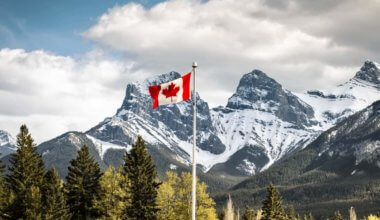
Get my best stuff sent straight to you!
Pin it on pinterest.

- (855) 476-5080
Come Explore A World Worth Knowing
Destinations and itineraries inspired by the most fascinating events in history.
Tours designed and led by HISTORY® Channel-approved, world-renowned historians and local experts.
Let your curiosity be your guide… as you explore a world worth knowing.
This is HISTORY Travel.™
Travel With A Historian
Go deeper. Explore the ruins of Ancient Greece or the opulence of Medici-era Florence; walk in the footsteps of Winston Churchill or Abraham Lincoln’s hand-picked generals; see the winter wonderland that is Yellowstone; hear the sultry notes of jazz echoing through the streets of the French Quarter. No matter your particular passion, our world-renowned historians and local guides will lead you on a once-in-a-lifetime experience to discover the history that’s all around us.
With a historian leading the way, your travels take on new meaning. Each HISTORY Travel™ expert provides on-the-spot, topic-specific information, and historical commentary at every stage of your journey. Their expertise provides crucial context, helping you connect your individual experiences to the larger historical picture.
Krewasky A. Salter
80th anniversary of d-day, find your next trip | inspired by history, cuban cars and culture: vintage velocity, mysteries of egypt, 80th anniversary of d-day: aboard a seine river ship.

Academic Travel Abroad is an educational travel provider for some of this country’s most prestigious organizations. Riding the post-war wave of interest in travel to Europe, ATA launched operations in 1950 by assisting universities and cultural institutions in the creation of group travel programs for their members. Today, ATA is a leader in cultural and educational group travel with over 70 years of experience and an expansive network of experts worldwide, ATA curates travel experiences for intellectually curious adults that delve beneath the surface, access the authentic, and shun the touristic.
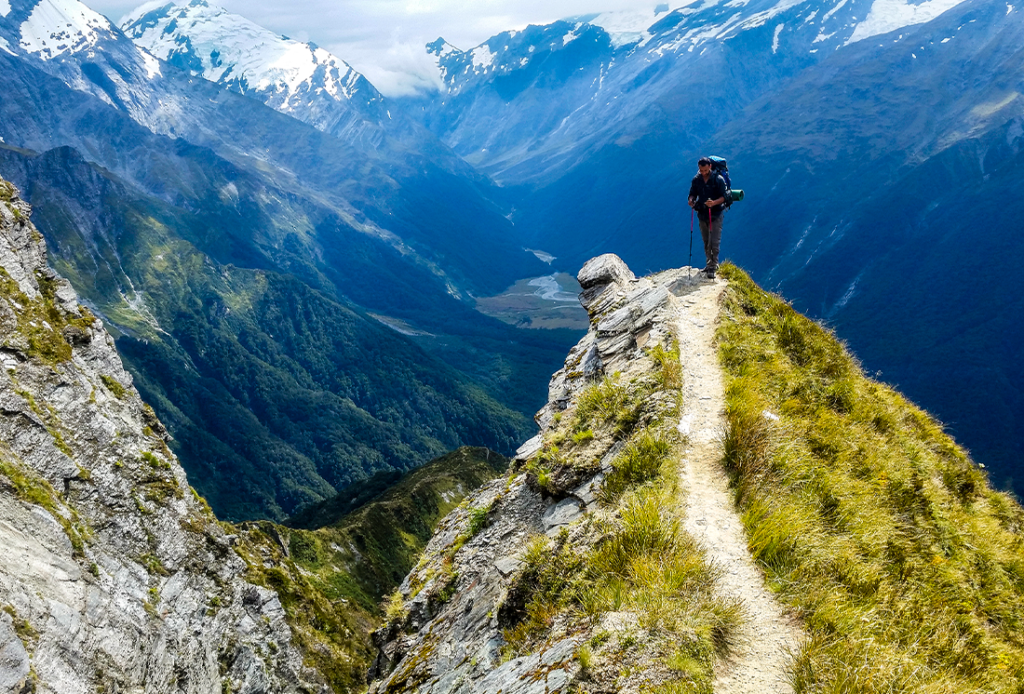
Stay Up to Date on Upcoming Trips
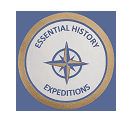
- [email protected]
- Subscribe to Our Newsletter
- Upcoming Expeditions
- Testimonials
LET'S GO ON AN ADVENTURE
Discover history, guided historical & cultural educational tours, private and group tours in wwii normandy, battle of the bulge, market-garden & rhine crossings, italy incl sicily, germany, pearl harbor and pacific; wwi france and belgium; american revolution, american civil war, cuba, south africa, greece & turkey, and vietnam; as well as england and scotland, poland, czech republic and the netherlands, essential history expeditions develops, coordinates and conducts vibrant and memorable historical tours and cultural expeditions to worldwide locations to educate and inspire guests..
Essential History Expeditions is pleased to have received ALL five-star reviews on Yelp! Check out our Yelp reviews here and our testimonials here . More than 50 percent of all guests who join us for an EHE tour register for a second tour and approximately 15 percent of guests have traveled with us three or more times! Our goal is not to run many tours per year but, instead, to focus on a few highly crafted tours with engaging guests. We truly value the friendships we develop with guests in seminal locations around the world!
“The experience bolted to the top of all my vacations, tours and trips around the world!”
Sample expeditions.
Pearl Harbor 85th & Hawaiian History and Culture
Italy: From Sicily to Rome, 1943-44
The Pacific: America in WWII, 1941-45
South Africa: The Prism of Mandela
Essential Vietnam
World War I: America in The Great War
80th Anniversary D-Day 2024
Heaven & Earth Pilgrimage: Vietnam
Sample Private Normandy: History/Culture
OVERVIEW OF
Essential history expeditions adventures.
- In-depth guided educational tours with expert historian
- Comprehensive knowledge of all tour history and a deep knowledge of all history tour locations and culture
- Experiential & immersive
- Culture-based adventure
- Fast-paced and hands-on tours
- Guest ability to role-play historical characters
- Exciting mix of history and culture
- All inclusive
- All high-quality accommodations and transportation (partnership expeditions may be mid-range accommodations to control prices)
- 90 percent of all meals
- Social hour most evenings
- All entrance fees
- All gratuities to outside support
- Restaurants specifically selected for local and cultural experience
- Fantastic history & educational tours for individuals, couples, families, groups, reunions and corporate leadership teams
- Personalized tour support
- Flexible and customizable
- Comprehensive arrangements
- Travel available or included
- Ability to customize an adventure by developing Partnership Expeditions
- Attentive to individual needs, such as dietary restrictions
Expert Guide And Historian
Dr. brian detoy.
- PhD in European History
- 28 years of service as an Infantryman in the United States Army with multiple deployments
- Chief of Research & Publications at Combat Studies Institute and senior Historian in Iraq theatre
- 14 years as a professor and program director at the United States Military Academy at West Point and the University of Kansas
- Featured in numerous documentaries on the History Channel, A&E , Military Channel, Discovery Channel and PBS
- Author of numerous publications on military history and travel destinations
- Presenter and chair at numerous conferences worldwide
- Experienced world-wide traveler
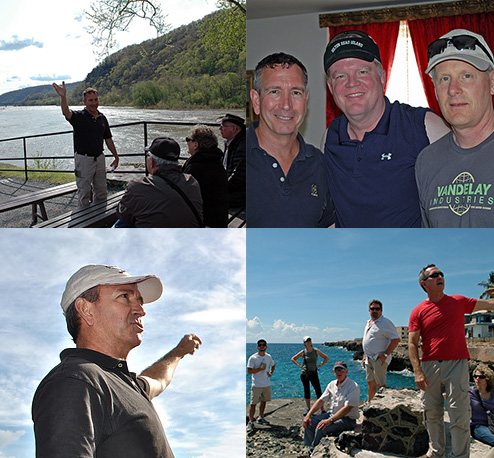
Why is travel insurance so important?
In today’s changing travel environment, it’s important to protect your travel investment so you can relax and enjoy your trip. Unforeseen events such as flight delays, baggage loss or even a sudden sickness or injury could impact your travel plans. For your convenience, we offer a Travelex Insurance Services protection plan to help protect you and your travel investment against the unexpected. For more information on the available plans click here or contact Travelex Insurance 800-228-9792 and reference location number 06-0263.

The product descriptions provided here are only brief summaries and may be changed without notice. The full coverage terms and details, including limitations and exclusions, are contained in the insurance policy. Travelex Insurance Services, Inc CA Agency License #0D10209. Travel Insurance is underwritten by Berkshire Hathaway Specialty Insurance Company, NAIC #22276. V94

Subscribe To Our Newsletter
Join our mailing list to receive the latest news & updates about Essential History Expeditions
You have Successfully Subscribed!
Understanding Travelogue: The Art of Describing Journeys
Introducing travelogue, what is a travelogue, history of travelogue, examples of famous travelogues, building a journey description, selecting your destination, capturing the essence of the place, describing cultural experiences, writing tips for travelogue, keeping a travel journal, using descriptive language, incorporating personal experiences, publishing your travelogue, choosing the right platform, promoting your travelogue, engaging with your readers, exploring travelogue examples, travelogue about new york city, new york, travelogue about san francisco, california, travelogue about chicago, illinois.
Imagine packing your bags, lacing up your travel shoes, and setting off on an exciting journey around the world, all without leaving the comfort of your favorite chair. Welcome to the world of travelogues, a genre of writing that allows you to do just that. In today's blog, we'll take a closer look at the art of travelogues, and how they transport readers to fascinating destinations and cultural experiences around the globe. Let's set off on our journey of understanding travelogues, where we'll explore their history, famous examples, and how to create one that will capture the imagination of your readers.
Travelogues have a unique ability to transport readers to new places, introducing them to different cultures, cuisines, and landmarks through the power of the written word. But what exactly is a travelogue, and how did this genre come to be?
Answering the question, "which statement best defines a travelogue", a travelogue is a narrative that describes a journey, often to a foreign country, and includes the traveler's personal experiences and observations. It's much more than just a travel guide—it's a personal storytelling format that allows the writer to share their unique perspective and insights about the places they've visited.
Travelogues have a rich history dating back to ancient times when explorers would document their journeys. Over time, these narratives have evolved from simple trip reports to engaging pieces of literature, often capturing the spirit of an era or the essence of a culture. Marco Polo's travels to the East and Mark Twain's 'Innocents Abroad' are two notable examples from history which have shaped the travelogue genre.
From Jack Kerouac's 'On the Road', which perfectly captured the spirit of the Beat Generation, to Elizabeth Gilbert's 'Eat, Pray, Love', which inspired thousands to embark on their own journeys of self-discovery, there are countless examples of famous travelogues. Each of these works stands as a testament to the power of travelogues to not just describe physical journeys, but also the emotional and spiritual journeys that often accompany them.
In the following sections, we'll delve into the process of creating a travelogue, offering tips and insights to help you capture the magic of your own travels.
Describing a journey in a travelogue is more than just listing places you visited or things you saw. It's about capturing the essence of the place, the culture, the people, and your experiences. So, how do you build a compelling journey description?
Before you can start writing, you need to choose your destination. Are you captivated by the hustle and bustle of New York City, New York, or would you rather explore the laid-back charm of San Francisco, California? Perhaps the rich history of Chicago, Illinois is more your style. No matter where you choose to go, make sure it's a place that ignites your passion and curiosity. After all, the best travelogues are written by those who are truly fascinated by their chosen destination.
Once you've chosen your location, it's time to capture its essence. This is where your powers of observation come in. What makes the place unique? Is it the architecture, the food, the local customs, or the natural beauty? Take note of the details that stand out to you and use them to paint a vivid picture of the place. Remember, your readers are relying on your words to transport them to this place, so make every word count.
Travelogues aren't just about places—they're also about people and their cultures. So, immerse yourself in the local culture. Attend festivals, try new foods, learn a few words in the local language, and interact with the locals. These experiences will give your travelogue a depth and richness that a simple location description can't achieve. Plus, these cultural insights will help your readers feel more connected to the place, as if they've experienced it firsthand.
Now that you've chosen your destination and immersed yourself in its culture, it's time to put pen to paper and start writing your travelogue.
Writing a travelogue is not just about detailing your journey; it's an art that requires creativity, authenticity, and an understanding of your readers' interests. Here are some tips to help you create a captivating travelogue.
A travel journal can be your best friend when writing a travelogue. It's a place where you can record your observations, experiences, and thoughts as you explore your destination. Not only does it ensure you don't forget any crucial details, but it also allows you to reflect on your experiences and understand how they have shaped your perception of the place. So, carry a journal with you and make a habit of writing in it every day.
Descriptive language is the key to bringing your travelogue to life. It helps your readers visualize the places, people, and experiences you're describing. For example, instead of saying "the food was good," you could say "the pasta was cooked to perfection, the sauce rich and tangy, and the fresh basil added a delightful aroma." See the difference? The second statement not only gives a clearer image but also engages the readers' senses, making your narrative more immersive.
Your personal experiences are what make your travelogue unique. So, don't shy away from sharing your stories, reflections, and even the lessons you've learned during your journey. They add a personal touch to your writing and help your readers connect with you on a deeper level. Remember, a travelogue is not a guidebook—it's a personal narrative that reflects your unique journey.
With these tips, you're well on your way to writing a compelling travelogue. But how do you get it out into the world? Let's move on to the next section to find out.
Now that you've penned your journey's story, it's time to share it with the world. Here's how to go about publishing your travelogue.
The platform you choose to publish your travelogue can significantly influence its reach. Traditional publishing options include books and travel magazines. However, in the digital age, blogs, social media, and online travel platforms have become increasingly popular. For beginners, starting a blog or using platforms like Medium can be a good option. It's easy, low-cost, and allows for immediate feedback from readers.
Writing a great travelogue is only half the battle. You also need to promote it to ensure it reaches your target audience. Social media is a powerful tool for promotion. You can share snippets of your travelogue, intriguing photos, or even behind-the-scenes stories to pique interest. Collaborating with fellow travel bloggers or influencers can also be beneficial in getting the word out about your writing.
Engagement is crucial in building a loyal reader base. Responding to comments, asking for feedback, and starting discussions can make readers feel valued and encourage them to keep coming back. Remember, writing is a two-way street. As much as it is about expressing your thoughts, it's also about listening to what your readers have to say.
By choosing the right platform, promoting your work effectively, and engaging with your readers, you can ensure your travelogue reaches the audience it deserves. So, are you ready to share your journey with the world?
Let's take a look at how all these tips and tricks come together in real travelogues. We'll explore three examples, each focusing on a different city in the United States.
When you think of a city that never sleeps, New York City instantly comes to mind. Any travelogue about this bustling city needs to capture its vibrancy, diversity, and unending energy. It's not just about describing the towering skyscrapers or the iconic Statue of Liberty. It's also about narrating the experience of walking down Times Square, the feeling of catching a Broadway show, and the taste of a hot dog from a street vendor. The essence of New York City lies in these details.
San Francisco offers a blend of natural beauty, cultural diversity, and tech innovation. A travelogue about San Francisco should not only describe the iconic Golden Gate Bridge or the historic Alcatraz Island, but it should also delve into the city's vibrant arts scene, its diverse food culture, and its role as a hub for tech startups. From the aroma of fresh sourdough bread in Fisherman’s Wharf to the sight of sea lions lounging at Pier 39, it's these details that bring the city to life in a travelogue.
Chicago, with its impressive architecture, vast parks, and rich cultural scene, offers a wide range of experiences for travellers. In a travelogue about Chicago, one might describe the thrill of looking down from the Skydeck of Willis Tower, the serenity of a walk in Millennium Park, or the excitement of a Chicago Bulls game. But it's equally important to capture the city's spirit, such as the warmth of its people, the taste of its famous deep-dish pizza, and the sound of jazz in its lively music scene.
These examples should give you a clear idea of what a travelogue looks like in practice and how you can bring your own journeys to life. So, if you were to answer "which statement best defines a travelogue", how would you do it? A detailed description of a journey? A personal account of travel experiences? Or perhaps a combination of both, enriched with personal insights and cultural observations? The choice is yours. Happy writing!
If you're intrigued by the art of describing journeys and want to take your travelogue to new heights, check out the workshop ' Travel Photography: Chasing the Northern Lights ' by David Rocaberti. This workshop will not only teach you how to capture stunning visual elements, but also guide you in weaving compelling narratives to make your travelogue truly unforgettable.

Live classes every day
Learn from industry-leading creators
Get useful feedback from experts and peers
Best deal of the year
* billed annually after the trial ends.
*Billed monthly after the trial ends.

Past Lane Travel
Named a top history & travel blog in the usa, past lane travel, where history and travel meet.
Hey there, I’m Jessica, an award-winning historical fiction and suspense/thriller author who loves sharing my passions for history and travel.
I’ve discovered so many off-the-beaten-path historical sites while doing research for my novels that I decided to share these destinations with others.
(You’ll also see a lot of Gettysburg content — that’s because it’s my hometown!)
I hope you’ll tag along with me as I explore “life in the past lane” on this unique USA history and travel blog.
Learn more about me…

My Top Travel Destinations

U.S. HISTORICAL SITES

HISTORIC HOTELS And B&B’s

Recent Posts

Explore The Rich History Of The Jefferson Hotel In Richmond VA

Drayton Hall Plantation SC: 11 Incredible Historical Facts

Complete Guide To A Gettysburg Horseback Tour From A Local

Five-Star Trifecta: This Virginia resort is a jewel in The State’s tourism crown
In a significant boost to the Virginia hospitality industry, the Salamander Resort in Middleburg has been awarded a trifecta Five-Star rating in the 2024 Star Awards list created by Forbes Travel Guide.
The trifecta was achieved with a Five-Star rating for the Salamander Resort, Harrimans Grill and Salamander Spa.
Read more…

Explore By State
Find historic gems off the beaten path.

Get inspired
Places you’ve never thought about.

Helpful Resources
Guides, Tips and Historic Hotel Reviews
Most Popular posts

Travel Thru History
Historical and cultural travel experiences
Travel stories and tips on destinations worldwide
Plus: How to get discounts on airfare, hotels and more travel deals…
Scroll down…
Read our first-hand travel stories: adventure, cultural, artistic, spiritual and more, by award-winning travel writers and photographers …
Search this website, some of our travel stories.
Hover over image for more info
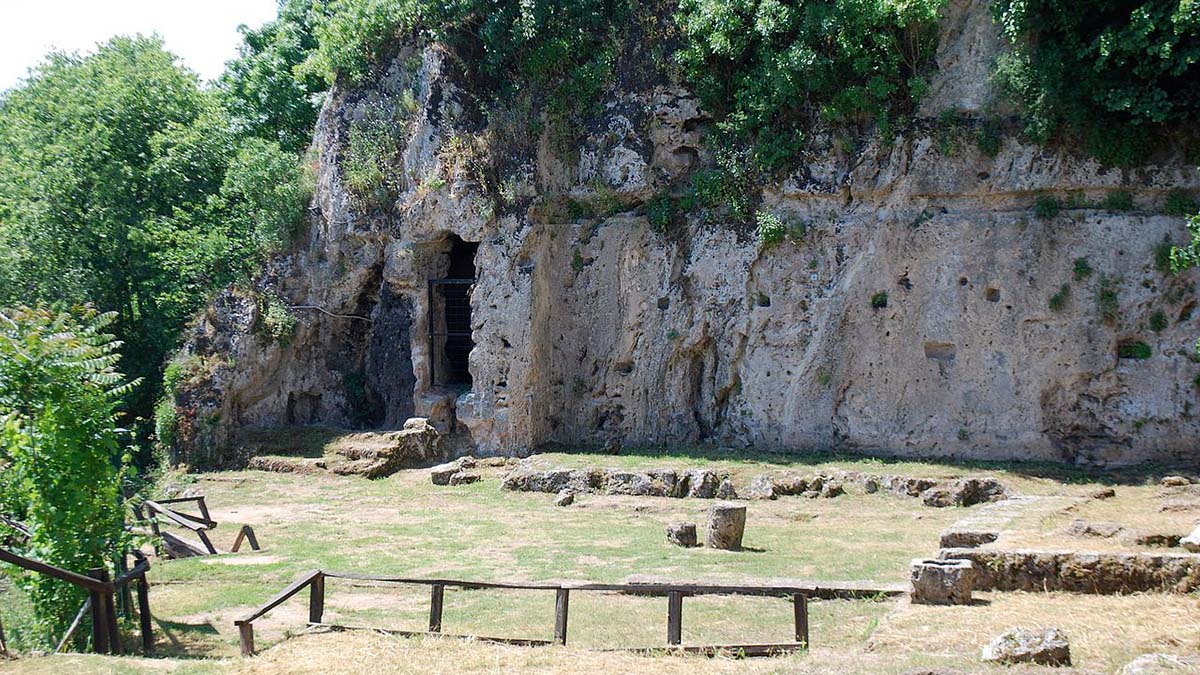
Mieza: A Royal School for Noble Boys
Macedonia, Greece by W. Ruth Kozak It was a school, dedicated to the Nymphs, fashioned for a young prince and his … [Read More...]
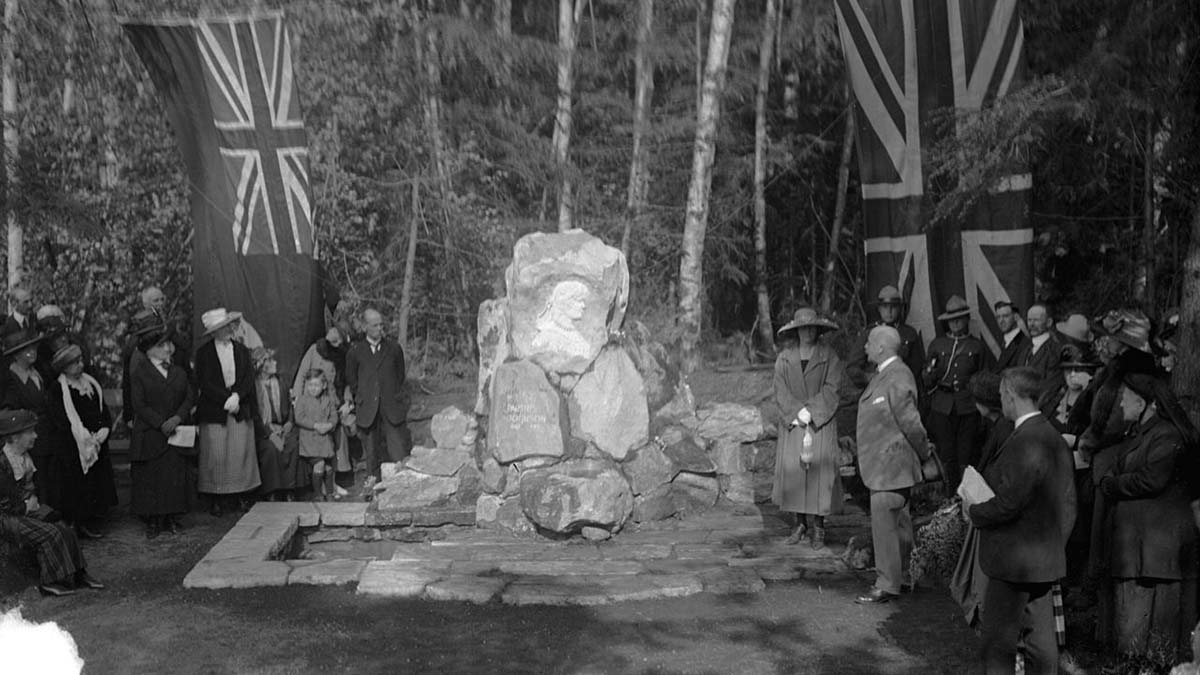
Pauline Johnson, Vancouver’s Mohawk Princess Poet
by W. Ruth Kozak If you visit my city, Vancouver, British Columbia, Canada, you are sure to spend some time in one of … [Read More...]
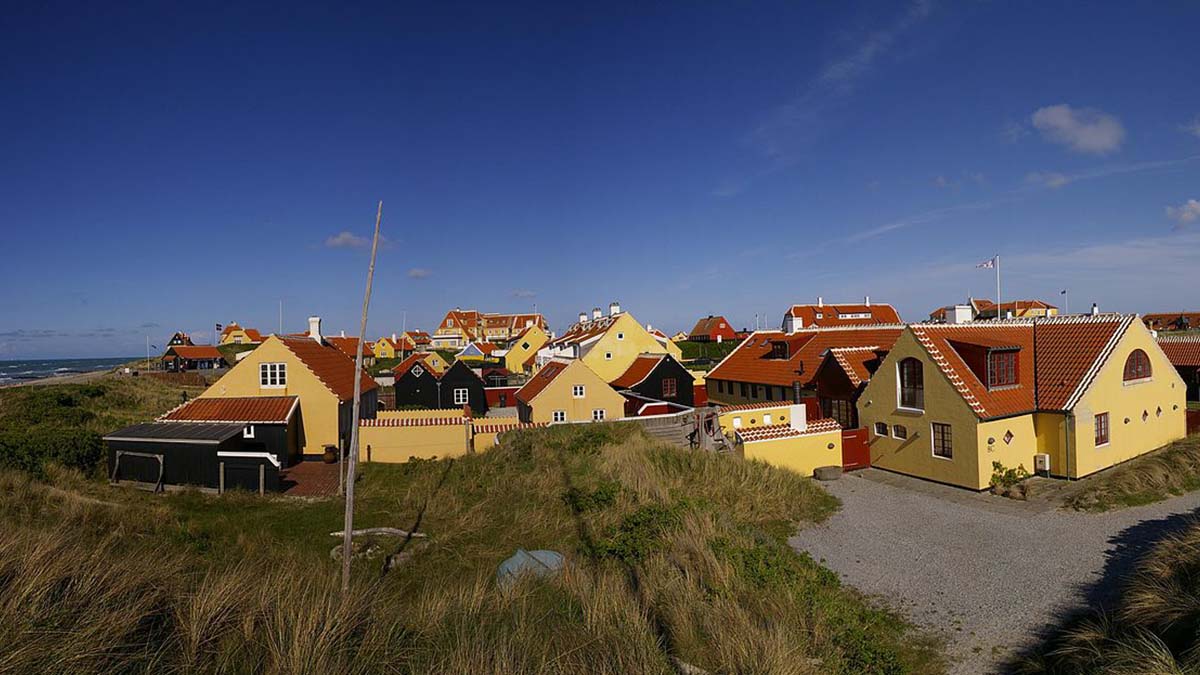
Jutland Jaunt: Journey to the North of Denmark
by Nell Raun-Linde Two seas meet with a vengeance at the northern tip of Denmark’s Jutland Peninsula. As the … [Read More...]

New Year’s Safari in Rural Cuba
Bariay Bay, Cuba by Susan Zuckerman Curls of wood smoke rise above farms, permeating the morning air with a pungent … [Read More...]
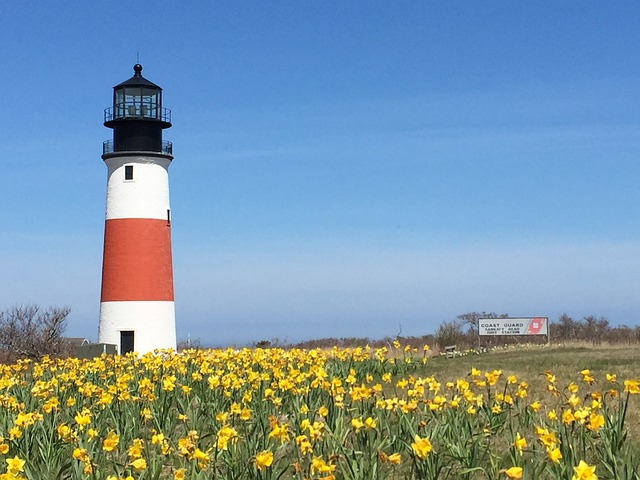
Nantucket: 5 museums and landmarks to visit when you are on the island
The famous American author Herman Melville once wrote, “Nantucket! Take out your map and look at it. See what a real … [Read More...]
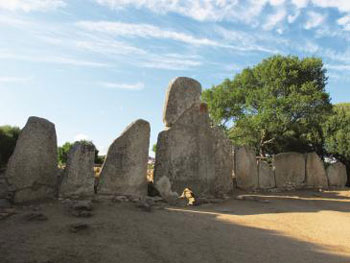
Mystery of Sardinia’s Nuraghe
Sardinia, Italy by Cornelius Myers Down through history, ancient civilizations have left inscrutable and symbolic … [Read More...]
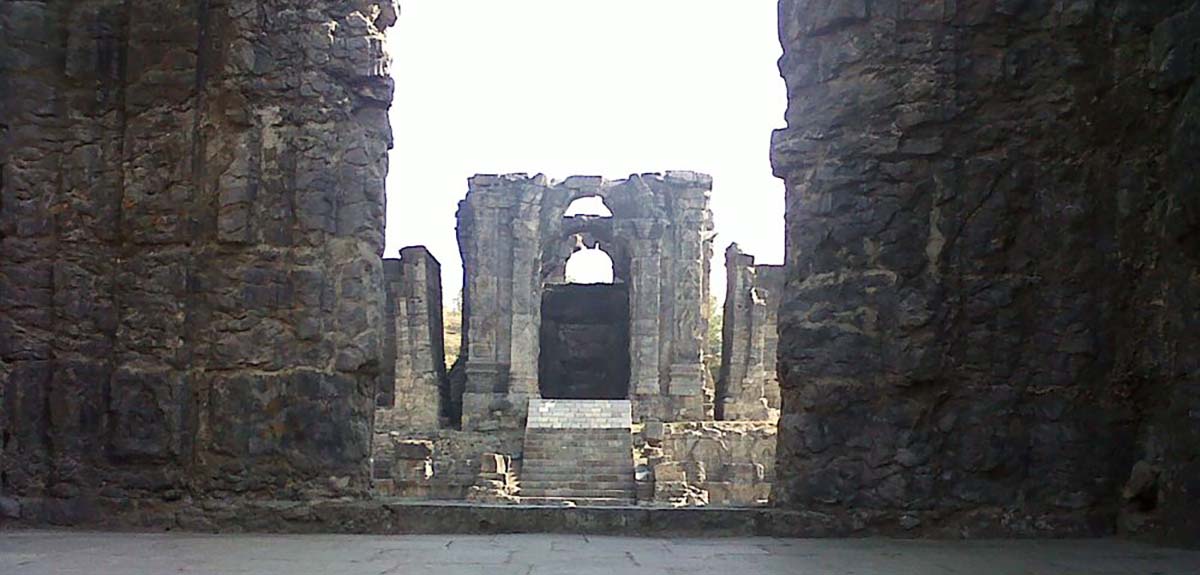
India: Kashmir’s Martand Sun Temple
Intriguing Ruins of a Lost Dynasty by Priya Florence Shah In early November 2011, I was fortunate to go on a 10-day … [Read More...]
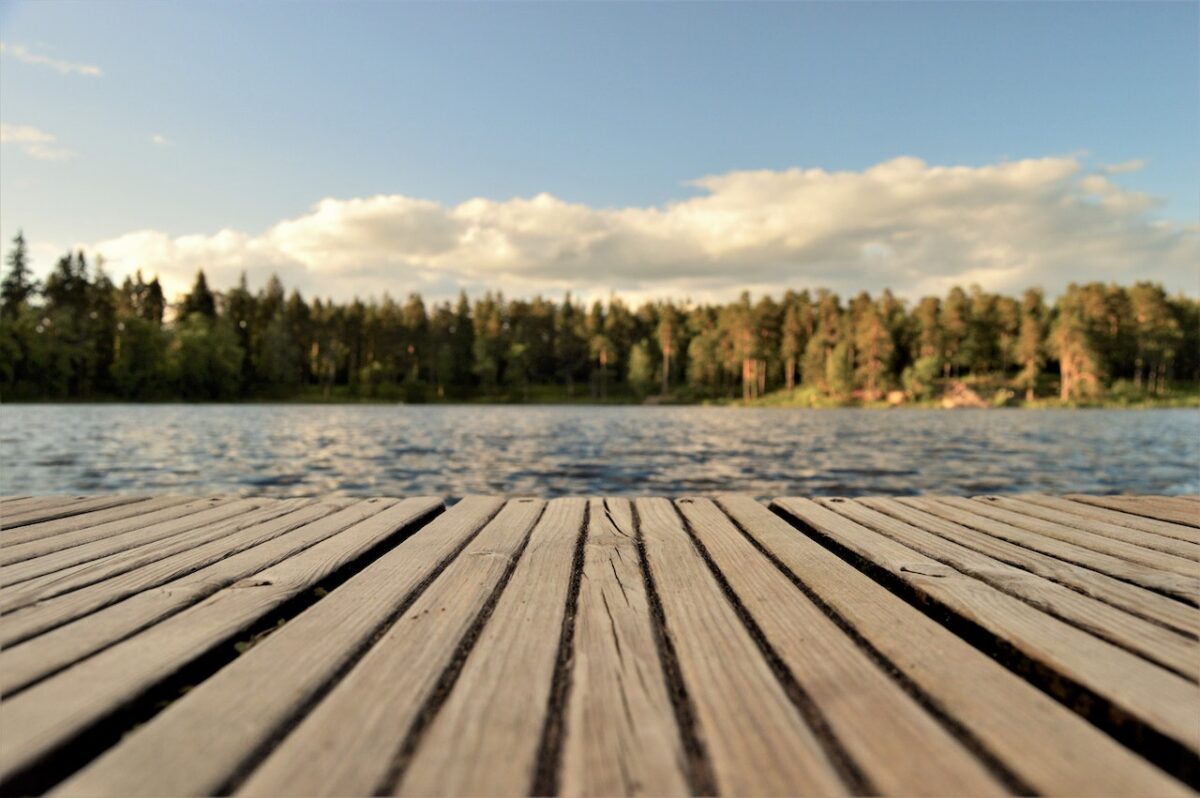
The Ultimate Road Trip Adventure in Sweden
Are you ready to embark on an unforgettable journey through Sweden's lush forests, picturesque landscapes, and vibrant … [Read More...]
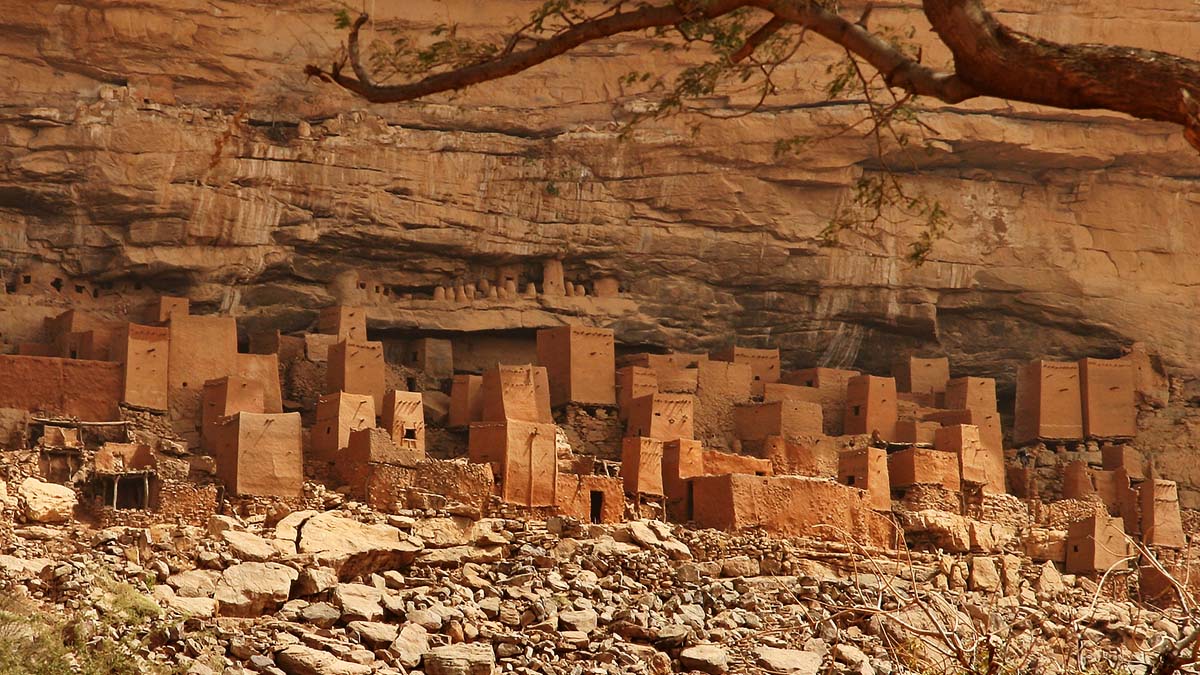
Dogon Cliffs of Bandiagara, Mali
by Emma Jacobs We arrived in Bandiagara, at the edge of the region, before dawn in the dusty lot of the bus station. … [Read More...]

- The Untold Stories of Mount Rushmore: Beyond the Faces
Mount Rushmore, known for its colossal carvings of four U.S. presidents, holds a wealth of stories beyond its grand … [Read More...]

A Photographic Stroll Through History: Siena’s Cathedral of Santa Maria Assunta
by Ron Ellege What do some of Italy's finest artists of the day, Nicola and Giovanni Pisano, Donatello, Pinturicchio, … [Read More...]
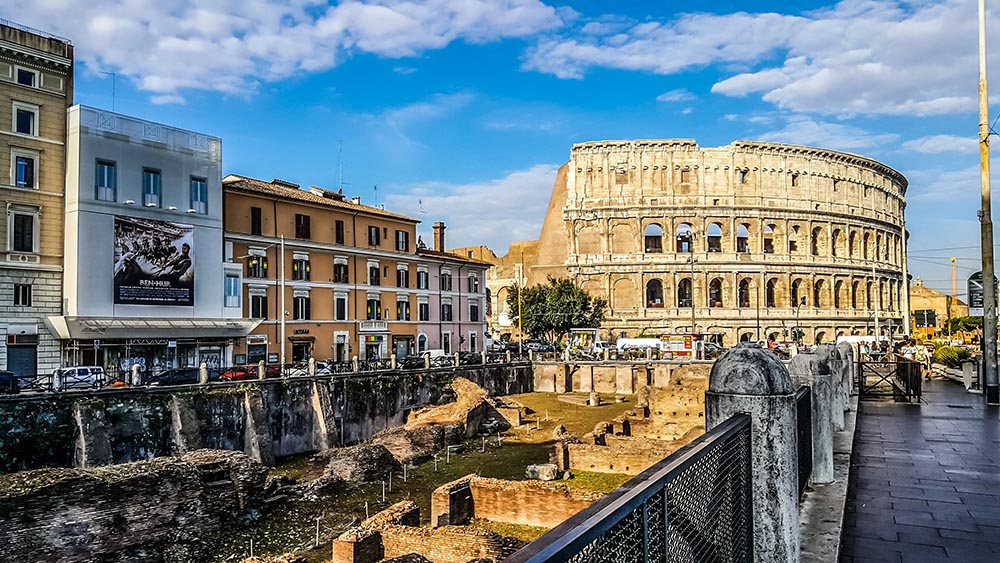
- Iconic Sites of Rome: From Colosseum to Capitoline Hill
Rome, commonly known as the "Eternal City," is a mesmerizing location that effortlessly blends its extensive history … [Read More...]
I’m a former president of the B.C. chapter of the Travel Media Association of Canada ( TMAC ), as well as a lifetime member and past president of the British Columbia Association of Travel Writers ( BCATW ).
This website was founded in 2008 by W. Ruth Kozak, and she passed the torch to me in July, 2020.
Find out more about me here .
If you are a travel writer looking for more exposure here on Travel Thru History, please see our Writers Guidelines .
Recent Posts
- Unexpected Reasons Why Mykonos Is A Great Destination For History Lovers
- Best Time To Visit Tenerife: Weather, Temperature, & Season
- A Guide to San Francisco’s Most Instagrammable Landmarks
- Exploring Florida’s Natural Springs: Fashionable Swimwear for Water Adventures
- From Castles to Caves: Exploring Slovakia’s Diverse Landscapes
- Enjoy Iconic Street Art in San Francisco
- Navigating Hong Kong Visa for Indians: Your Essential Guide
- Summer Travel Packing Essentials for Exploring Attractions and Nightlife
- Adventure Atlanta: Stories of Exploration and Discovery
- Uncover Indoor Gems in Pigeon Forge Perfect for Rainy Days
- Tips to Avail the Best Car Rental Deals in Ras Al Khaimah
- Unveil the Mysteries of Alcatraz: A Journey into San Francisco’s Past
- What Are the Top Rainbow Trout Fishing Spots in Florida?
- Why Travel to Destinations You Hadn’t Considered?
- Steps To Take If You Lose Your Passport
- How to Immerse Yourself in the History of the Balkans
- The Vibrant Street Art of Miami’s Wynwood Walls
- Reviving the Past: Exploring the Ghost Towns of Nevada
- Travel Guide to Cheap Riyadh To Istanbul Flights Hacks
- A Comprehensive Guide About Norway Residence Permit Requirements
- Why Digital Nomads Love Bansko Bulgaria
- Essential Tips for Exploring Dingle Peninsula, Ireland
- Kuélap, a Chachapoya Citadel in Northern Peru (Part 2 of 2)
- Learn About the Viking Heritage in Reykjavik, Iceland
- The Majestic Scenery and Wildlife of Banff, Canada
- Seeking Jane at the Austen Fest in Mount Dora, Florida
- Kuélap, a Chachapoya Citadel in Northern Peru (Part 1 of 2)
- A Guide to the Relaxing Adirondacks
- The Most Impressive Gothic Cathedrals in Prague, Czech Republic
- The Colonial Charm and Modern Vibe of Cartagena, Colombia
- The Top 10 Places to Visit in Himachal Pradesh
- How to Spend Your Weekend in Ireland
- Chasing the Past: An Archaeological Adventure in Cahokia, Illinois
- Search Please fill out this field.
- Manage Your Subscription
- Give a Gift Subscription
- Sweepstakes
- Destinations
Greece's Largest Island Is Packed With Ancient History, Gorgeous Resorts, and a Stunning Pink-sand Beach
Get ready for plenty of fun in the Grecian sun.
:max_bytes(150000):strip_icc():format(webp)/Stacey-Leasca-2000-631fabdcfe624115bea0ce8e25fdec96.jpg)
Best Hotels and Resorts
Cities to visit, best things to do, best beaches, best time to visit, how to get there, how to get around.
Gautier Houba/Travel + Leisure
Crete, Greece's largest island, clocks in at more than 3,000 square miles and offers plenty of ancient history, incredible food, and natural beauty to explore. But you don't have to take my word for just how special Crete is.
"I often describe Crete as a compact, island version of California. We have surfing and backcountry skiing in winter. In summer, we have canyon hiking, mountaineering, and, my personal favorite, hidden beaches only accessible by boat. And the shoulder seasons are — chef's kiss — perfection," Anastasia Sotiropulos, a tour guide based in Chania, Crete, shared. "The real treasure of Crete, though, are the people. The farmers, cheesemakers, fishmongers, artists, restaurateurs, winemakers, musicians, and homemakers create unique experiences for those lucky enough to visit this incredible island."
Top 5 Can’t Miss
- Stay at a hotel with stunning Mediterranean views, like Elounda Bay Palace or Domes of Elounda.
- Explore the ancient Palace of Knossos.
- Catch some sun on Elafonissi Beach, one of the world’s most beautiful pink-sand beaches.
- Wander the streets of Chania’s Old Town to admire Venetian, Turkish, and Greek architecture.
- Visit during the shoulder season to avoid the hottest temperatures and largest crowds.
Ready to start exploring for yourself? Here's everything you need to know to plan a trip to Crete.
Gautier Houba/Travel + Leisure
Elounda Bay Palace
This luxury hotel has long been beloved for its mix of elegance and charm. The rooms and suites here open up to sweeping views of the azure Mediterranean waters, and the hotel's private beaches ensure you can always find a chair (and an umbrella). Make an appointment at the Chenot Spa, which offers massages, facials, and body treatments using science-forward ingredients and techniques.
Domes of Elounda, Autograph Collection
Looking to stretch out? Domes of Elounda is the place to be. Known for its breathtaking views of the Mediterranean and the historic island of Spinalonga, the resort is home to just suites and villas, which open to fantastic patios with private plunge pools. Yes, this hotel comes with its own spa, but guests can also indulge in an in-room treatment to truly never lift a finger.
Courtesy of Blue Palace, a Luxury Collection Resort & Spa
Blue Palace
Blue Palace was named a Travel + Leisure reader favorite in the 2023 World's Best Awards , and in 2024, it's getting a whole new look. The renowned hotel is reopening as a modernist boutique hotel with just 47 bungalows and suites, all with brand-new interiors and some with private plunge pools. But even if you don't book a room with a pool, that's okay, as the hotel sits just steps from the beach anyway.
Casa Delfino Hotel & Spa
Find yourself in a 17th-century Venetian mansion-turned-boutique hotel at Casa Delfino . The hotel, located in the heart of Chania's Old Town, allows travelers to stay amid the action while also offering a retreat-worthy rooftop garden that comes with sweeping views of the sea. It's a perfect place for families thanks to its one and two-bedroom suites.
A visit to Chania's Old Town is a must, thanks to its charming Venetian, Turkish, and Greek architecture. To make the most of your time in Old Town, book a tour with a guide who can show you all the best sights and all the prime spots to get a great meal.
Get in a little more Venetian architecture at Rethymno Old Town , one of the best-preserved historical districts in Crete. The city is built around the Venetian fortress, which provides fantastic panoramic views from its hilltop location. Don't skip the artisan shops where you can find the perfect souvenir.
No visit to Crete is complete without a visit to its capital, Heraklion . Here, visitors can check out numerous historic sites, the Archaeological Museum mentioned below, and all the city's bustling markets, cafes, and bars. And as a bonus, the Palace of Knossos is just a short drive away.
Elisanth_/Getty Images
Explore the Palace of Knossos.
Dive into more than 4,000 years of Greek history at the Palace of Knossos , Crete's most iconic archaeological site. The ancient complex is absolutely massive, and it comes with a gorgeous view of the sea thanks to its position high on the hill. "Crete's most famous archaeological site is the great Minoan Palace of Knossos, the oldest, largest, and most elaborate of these sites," Peter Sommer of Peter Sommer Travels , shared. "In its wide courts, shaded colonnades, and intricate arrangements of room after room, floor after floor, one can really come to grips with a civilization from far back in the Bronze Age, and grapple with questions that are still hotly debated – what did these palaces look like, what were they for, who lived in them, and how did they function?"
Hike the Samaria Gorge.
Outdoor lovers will adore spending a day hiking through the Samaria Gorge, a lengthy hike through Crete's White Mountains. The hike stretches on for nearly 10 miles through ancient cypress and pine forests and the abandoned village of Samaria before ending at the sea. However, the most famous part of the hike has to be the "Gates," where the gorge is just 13 feet apart but is more than 1,500 feet high. Make sure to give yourself plenty of time if you plan to hike the entire trail. The park's official site estimates that it takes about five hours to complete the journey.
David C Tomlinson/Getty Images
Visit the Old Venetian Harbor of Chania.
Take a stroll through the Old Venetian Harbor of Chania and take in all the colors of Greece. Travelers can walk past homes and buildings showcasing Crete's unique melding of history, including all its Venetian, Ottoman, and Greek influences. Shop in its boutiques, grab a frappe in a cafe, view the massive fortress, and dine on plenty of fresh ingredients (hello, Greek salads) at its waterfront restaurants. Just make sure to have your camera ready, as its colorful buildings make for the perfect Instagram backdrop.
Learn something new at the Heraklion Archaeological Museum.
Get an even deeper education on the island's history with a visit to the Heraklion Archaeological Museum , which houses the world's most comprehensive collection of artifacts from the Minoan civilization. Its most famous exhibit is the Phaistos Disc, a clay disc sporting more than 240 symbols that is said to be more than 3,000 years old. As the museum notes, "experts have not yet a definitive conclusion of the contents of the inscription," so maybe you can uncover what it all means during your visit.
Elafonissi Beach
Get ready to step foot on one of the world's most beautiful and romantic beaches, Elafonissi Beach . The stretch of shoreline is well-known for its pink sand — created by millions of crushed seashells —that disappears into shallow, turquoise waters. The beach, which is part of a nature reserve, is an ideal spot for families with small children thanks to the calm waters, but there are also plenty of spots for adults to put down their towels and umbrellas for a quiet day at the beach.
Balos Lagoon
One more brilliant beach to visit is Balos Lagoon , a beach made up of brilliant white sand that's lapped by unbelievably blue water. "One of the most popular must-see places in the Chania region is the Balos Lagoon with hypnotizing turquoise waters and a panoramic landscape," Alonso Marly, a travel expert at Skylux Travel , said. "I suggest visiting the beach early in the morning to experience the lagoon at its most tranquil and skip the tourist crowds."
Find a different style of landscape at Vai Beach , famous for the palm forest lining the coast. Once again, it's a spot where travelers can find warm, sandy beaches and beautiful blue waters, just this time with the bonus of tree shade for the perfect beach snooze.
Related: 15 Most Beautiful Places to Visit in Greece
The best time to visit Crete is from June to August when the weather on the island is at its prime. As WeatherSpark notes, the warmest weather can be found between early June and late September, when the average daily high temperature hits above 79 degrees Fahrenheit. Things get particularly hot in July, when the average temperature hits 84 degrees.
"When it comes to the best times to visit Crete, keep in mind that the island is seasonal, and during winter months, most of its attractions are closed," Marly added. "However, throughout the high season, it is full of life day and night."
But, if you're looking to escape the crowds, try plotting a visit during the island's shoulder seasons, which fall over April to May and September to early October.
"If possible, I recommend visiting the island during the shoulder season when it's not too hot and crowded – from April to June or September through October — to make the most of your authentic Greek holiday, full of sunshine and unforgettable experiences," Marly said.
Crete is accessible via its international airports in Heraklion (Heraklion International Airport, HER) and Chania (Chania International Airport, CHQ). Heraklion is the island's busiest airport, and it is also the second-largest airport in Greece, just behind Athens. Several major airlines fly into the airport, including Emirates, Aegean, RyanAir, EasyJet, and KLM.
For those looking to avoid the airport, there is a ferry option, but be warned: It's a long ride. Travelers can hop aboard a ferry from Piraeus Port in Athens to Heraklion or Chania, but the ride can take between nine and 10 hours.
Related: Everything You Need to Know to Plan Your Perfect Greek Islands Vacation
The best and easiest way to get around Crete is with your own car. Remember, this is Greece's largest island, so if you want to explore more widely, you will need some wheels. There are a ton of rental car companies on the island, including big names like Avis, Budget, and Hertz, all ready to loan you a ride.
Public Transit
Crete also has a robust public bus system that can get you to most points of interest. Just note the buses here tend to move more slowly than cars, but it's also a rather affordable option, with rides starting at just a few euros.
Scooters are also a rather popular mode of transportation here, as they are in almost all of the Greek islands. Visitors do need a valid license to rent scooters and must wear a helmet while riding.
- Deutschland
Italy: History and Heritage

History of Italy
Discover the history of Italy on your private, tailor-made tours with travel tips from our experts.
There are few countries in the world that can boast of histories as impressive as Italy’s. On the one hand, you have the glory and decadence of the Roman Empire, whose ruins still mark the cities and countryside of Italy, on the other, the vibrancy of the Renaissance movement with its globally renowned art and architecture. Despite its storied past, did you know that Italy as a single country is barely even 200 years old?
Prior to the wars of independence, Italy was composed of different city-states, the Catholic Church, and the Austro-Hungarian Empire. Its varied history makes it a country of contrasts and contradictions – it is both ancient and new, singular, yet many-faceted. It is this unique characteristic that brings countless travelers to Italy every year, and you too can immerse yourself in its many hues on your tailored, luxury tour of Italy.
In Caesar’s footsteps
The story of Rome is one of the greatest stories in history – of how a small town surrounded by seven hills grew into one of the world’s most powerful empires. From the time of the Roman Republic and Julius Caesar, and the illustrious Emperor Octavian I to the age of the ‘Five Good Emperors’ in the 1st and 2nd centuries, Rome is a city that took on the world and won. In its heyday, the Roman Empire included nearly all of Europe, northern Africa, the Balkans and even some parts of the Middle East.
Although the Roman Empire fell centuries ago, its shadow still looms large over Italy. Aspects of Roman culture still impact the world around us, from our languages to modern legal systems and politics. Beneath some parts of Rome, sections of the original Roman sewer are still being used. To visit Roman sites in Italy, is, in many ways, to visit the birthplace of western civilization.
In the city of Rome, preserved ancient buildings stand proudly beside more modern constructions. It’s easy to casually stroll through the city and come across signs of its glorious history – The Colosseum, the ruins of the Roman Forum, and the miraculously preserved Pantheon are all a short walk from each other in the city center.
Eventually, the Roman Empire over-expanded and weakened, splitting into two – the Eastern Roman Empire and the Western Roman Empire. Interestingly, though the Western Empire ended around 476 AD, the Eastern Empire, now called the Byzantine Empire, which was governed from Constantinople (modern Istanbul), lasted until 1453 AD.

Medieval Italy and the Renaissance
Once Rome fell, different parts of the Italian Peninsula were ruled by different groups and kingdoms. As a result, different areas of the Italian peninsula subsequently developed their own cultures, customs, and character.
This was a time of violence and conquest, yet it was a time that saw a revolution in art, architecture, literature, science, and philosophy. Nowhere is this better exemplified than in Florence. In its heyday, the city was home to luminaries such as Leonardo Da Vinci, Niccolo Machiavelli, Donatello, Michelangelo, and Botticelli, who lived and worked within decades of each other and shaped the world around them. Much of their work remains even today and can be seen throughout Italy and in other parts of the world as well.
In Florence, you can head to the Galleria dell’Accademia to view Michelangelo’s sublime world-famous Statue of David, as well as the works other renowned artists of the age. Numerous works of art and sculpture that graced the households of powerful families, are housed within Florence’s several other famed galleries. Another must-visit is the Uffizi Gallery, a short walk from the beautiful Ponte Vecchio, where you can view some of the greatest pieces of the Renaissance. The building itself is tremendously historic; it was designed to be the office of the legendary Medici banking family, who governed the city during the Italian Renaissance.
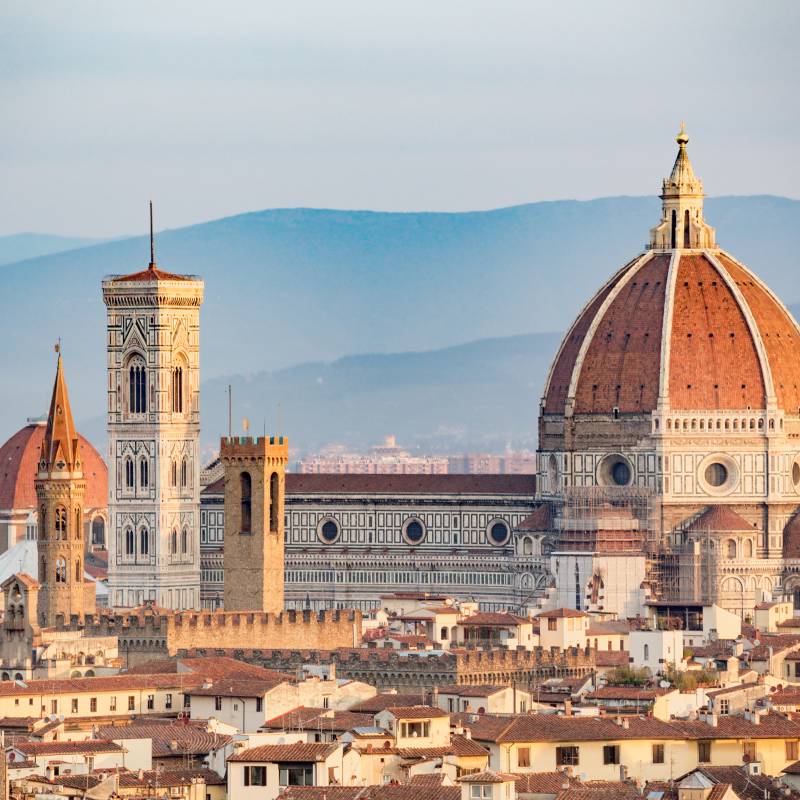
Modern Italy
In 1796, a couple of years after the French Revolution, Italy was invaded by Napoleon. Although his armies were badly outnumbered Napoleon was able to establish a client state. In 1815, this Napoleonic Kingdom was annexed by the Austro-Hungarian Empire, and the idea of an independent country unifying the entire Italian Peninsula began to form.
However, this dream didn’t come to fruition easily. Instead, over the following decades, numerous wars and insurrections managed to hammer out a unified and independent country in 1871. Despite Italy’s long, and turbulent history, it stands proudly as a jewel of Europe, a country of immense natural beauty and high culture.
Today, Italian people are famous for embracing their traditions and heritage: from the saltless bread in Tuscany that owes its roots to an infamous quarrel between a coastal family and the Medici of Florence, to the happy hour ‘aperitivo’ embraced by Emanuele II as far back as the 18th-century. On your tailor-made tour of Italy, discover its time-honored traditions, history and heritage for yourself!
Discover the history of Italy for yourself on a tailor-made tour with us. Get in touch with us for an obligation-free itinerary.
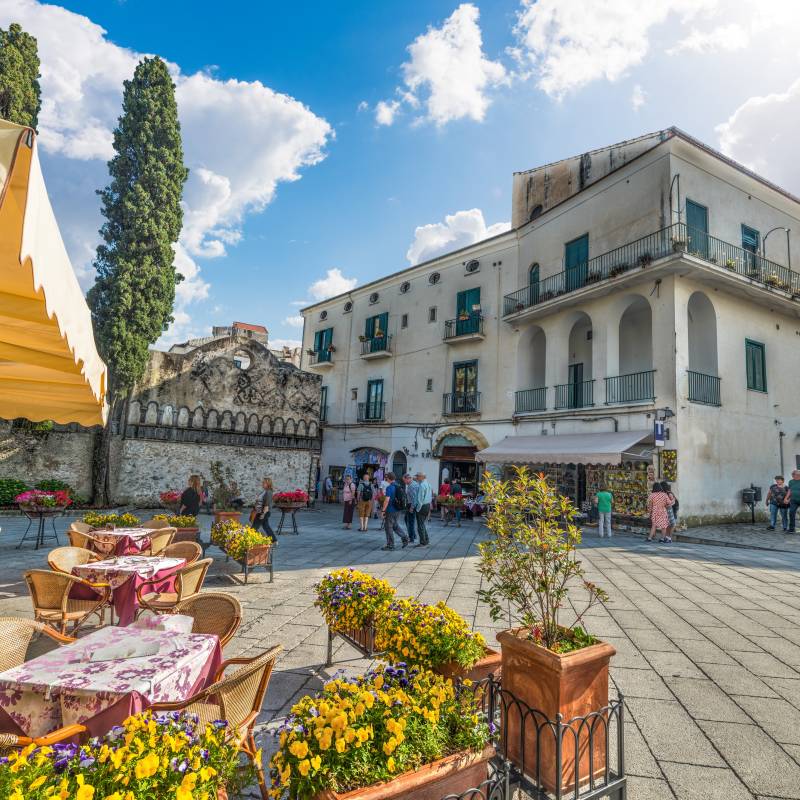
From the Blog

Your Guide to the Top 10 Food Destinations in the World
Embark on a culinary sojourn that will most certainly tantalize your tastebuds! Our curated list of destinations will provide a truly mouthwatering vacation.

Discover the UK & Ireland through its Architecture
From charming cobbled lanes to impressive Victorian viaducts, there’s plenty of attractive architecture to be found in the UK and Ireland.

Ode to the Centuries: Art and Architecture in Italy
Whether you’re a fan of classical columns and ornate frescoes or more contemporary allures, you’ll be spoilt for choice in Italy. Learn more about Italian art and architecture to plan your cultural vacation.
Popular Trips to Italy
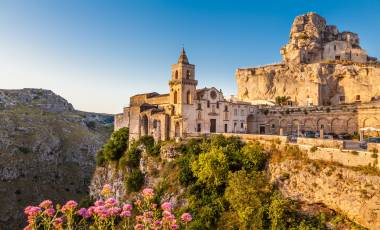
Italy: Rome, Matera & Apulia
This tour is ideal for those who want to go beyond the usual and see Italy’s hidden gems. Enjoy a walking tour of Rome and admire the glorious Vatican museums before heading off to explore the towns of Matera, Lecce and Fasano. Learn about Matera’s turbulent history on a tour that takes you to an…
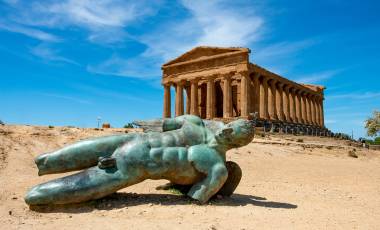
Italy: Best of Sicily
This customizable self-drive tour is ideal for those who want to experience the top attractions of Sicily, and get in a bit of relaxation as well. Admire some of Palermo’s most famous landmarks such as the Teatro Massimo, the largest opera house in Italy, and Chiesa della Martorana, a majestic 12th century Byzantine church. Explore…
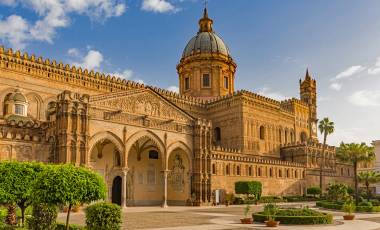
Italy: Sicilian Heritage and Beaches
Delve into the region’s culture and heritage as you make your way through some of Sicily’s loveliest cities and towns. Marvel at the beautiful architecture of Palermo and get a taste of the local cuisine on a guided street food tour. Unwind on a picturesque beach and enjoy a boat tour in Cefalù. During a…
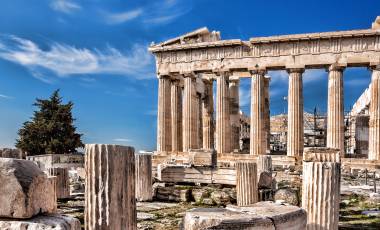
Highlights of Italy and Greece
Experience the best of Italy and Greece on this superb 12-day tour. Enjoy guided walking tours of Florence, the birthplace of the Renaissance, and Rome, which was the center of the mighty Roman Empire.

Highlights of Italy and Croatia
Embark on an enchanting 12-day journey through Italy and Croatia. Explore Florence’s Renaissance wonders, Venice’s magical canals, and Rovinj’s vibrant culture. Dive into history at Split’s Diocletian’s Palace, and marvel at Dubrovnik’s fortified walls. Indulge in incredible cuisine and breathtaking views. Our experts handpicked hotel options including Hotel Santa Maria Novella, Hotel Carlton on the…

South Italy: Amalfi Coast & Puglia
Discover the jaw-dropping beauty of Italy’s Amalfi Coast on this ten-day tour. From the UNESCO World Heritage site of Matera to the culinary landscape of Fasano and the incredible architecture of Lecce, this tour is all about immersive cultural experiences and much more. If you’ve been dreaming of a European vacation, a trip to Italy’s…

Italy Travel Guide
Whether you’re keen to explore ancient basilicas adorned with priceless works of art or embark on a culinary tour of atmospheric markets and rustic family eateries, get the top tips on the culture in Italy and what to expect from our destinations experts.
The cuisine in Italy is celebrated around the world, and there’s no dearth of delicious no matter where you visit! From mouth-watering pastas to gourmet cuisine, award-winning vintage and top dishes from each region, eat your way through Italy with our travel tips.
Best Time To Visit
From visiting ancient towns to cruising the Italian Riviera, exploring Tuscany on a wine tour, relaxing by a tranquil lake in Lombardy, or celebrating the Carnevale in Venice, time your luxury Italy tour to match your interests. Discover the best time to visit each region from our experts.
The Enchanting Difference
Authentic & unique.
Our award-winning, licensed local guides provide incredible insights and exclusive experiences for you.
Personalized & Private
Our experts completely customize your private tour to match your interests and preferences.
High-Quality Experiences
All our accommodations and services are personally tested by our team.
Fully Supported Travel
You’ll have a personal and dedicated trip coordinator, backed by 24/7 support in case of emergencies while you’re traveling.
Financial Protection & Flexibility
Your booking is flexible and completely secure with us.
Safe & Secure
Your safety and well-being are our top priorities.
Do you have a vacation in mind? Personalize your itinerary with our Trip Builder.

IMAGES
VIDEO
COMMENTS
How travel guidebooks charted and changed the world. Referenced by generations of globe-trotting travelers and kept on bookshelves as dusty, dog-eared souvenirs, guidebooks have played an influential role in dissecting and shaping travel culture for over 200 years. In contrast to the inherently fleeting attractions of the internet, these well ...
1900s. The 1900s was all about that horse-and-carriage travel life. Horse-drawn carriages were the most popular mode of transport, as it was before cars came onto the scene. In fact, roadways were ...
1952: a golden age of air travel is born as BOAC goes commercial. By the 1950s, aviation had come a long way from The Wright Brothers' Flying Machine. The British Overseas Airways Corporation made another world first: a commercial jet service, designed by British engineer Geoffrey de Havilland. Enter a golden age of air travel.
A guide book to the 1915 Panama-California Exposition An assortment of guide books in Japan. A guide book or travel guide is "a book of information about a place designed for the use of visitors or tourists". It will usually include information about sights, accommodation, restaurants, transportation, and activities. Maps of varying detail and historical and cultural information are often ...
However, when in the 1840s, an extensive network of railways was built, people started to travel for fun. Mid-19th century definitely marks a real beginning of modern tourism. It's the time when the middle class started to grow. And they have found a way to travel easily around Europe. It's coming by no surprise that the first travel agency ...
A Brief History of Travel and Tourism. Culture. Utilizing the widest definition of the word, human beings have been travelling since the dawn of time. No matter one's beliefs about the creation of humans, everyone can agree our species began in some single locale, likely Africa or the Middle East, and 'travelled' outwards, settling new lands.
Scanning my shelves of travel books and guides, I notice the gaps: the books that went travelling with me, but never returned. Geoff Crowther's Africa on a Shoestring, the first one I ever bought.
Travel. Holidays with History Hit; History in Photos; Travel the Roman world; Historic UK; ... Where History Happened Guide. Ian Fleming's London: 5 Key Historical Locations to Visit ... Discover the Ancient World of Alexander the Great Guide; History Hit brings you the stories that shaped the world through our award winning podcast network ...
Historical travel includes various kinds of destinations, from Stone Age cave paintings to Cold War installations of the late 20th century. History is a central focus for some travellers and some destinations, and almost every traveller in most places will at least have a look at some old buildings or the local museums .
A short history of travel guides. The first travel guide was in the form of a periplus (Latin for &lsquoa sailing around&rsquo), a manuscript that charted the ports and landmarks (and the distances between them) that a sailing vessel would expect to find along a shore. Later, pilgrims&rsquo tales of their religious travels around Europe became ...
Travel is one of the best ways to understand and connect with the past. From exploring a medieval castle to standing on a World War II battlefield to walking through ancient ruins that date back centuries, experiencing these places first hand brings history to life in a way that just reading about it never could. These places tell the stories ...
Continuing this history of travel writing through ages, in the 18 th century travel writing was known under the name ' Book of Travels '. Usually these were maritime journals - and the people devoured them. British James Cook's diaries (1784) reached the status of a modern day international best-seller.
Continues: Encyclopedia of Exploration to 1800: A Comprehensive Reference Guide to the History and Literature of Exploration, Travel and Colonization from the Earliest Times to the Year 1800.Continued by: Encyclopedia of Exploration, 1850 to 1940: The Oceans, Islands and Polar Regions: A Comprehensive Reference Guide to the History and Literature of Exploration, Travel and Colonization in the ...
For nearly 30 years, a guide called the "Negro Motorist Green Book" provided African Americans with advice on safe places to eat and sleep when they traveled through the Jim Crow-era United States
Travel is the movement of people between distant geographical locations. Travel can be done by foot, bicycle, automobile, train, boat, bus, airplane, ship or other means, with or without luggage, and can be one way or round trip. [1] Travel can also include relatively short stays between successive movements, as in the case of tourism .
Make copies of your important documents. Make digital and hard copies of all your important travel-related documents. Start by photographing your driver's license, your state ID and/or your passport. You should have copies of your IDs in your phone's library in case you get separated from the actual document.
Visit the monuments to freedom erected by former slaves in Haiti after the revolution. Take a sunset walk around La Fortaleza and Old San Juan in Puerto Rico. Tour the earliest settlements by Europeans in the New World at St. George in Bermuda. Play old-school Oregon Trail while driving the Oregon Trail.
tourism, the act and process of spending time away from home in pursuit of recreation, relaxation, and pleasure, while making use of the commercial provision of services. As such, tourism is a product of modern social arrangements, beginning in western Europe in the 17th century, although it has antecedents in Classical antiquity.
Travel4History is an Travel Guide & Blog about the most fascinating historical destinations on our Planet.
Dry Fox travel towels are my favorite (use the code "nomadicmatt" for 15% off your purchase)! 2. Use a small backpack/suitcase. By purchasing a small backpack (I like something around 35/45 liters), you will be forced to pack light and avoid carrying too much stuff. Humans have a natural tendency to want to fill space.
Let your curiosity be your guide… as you explore a world worth knowing. ... HISTORY Travel TM is created and managed by Academic Travel Abroad. Academic Travel Abroad is an educational travel provider for some of this country's most prestigious organizations. Riding the post-war wave of interest in travel to Europe, ATA launched operations ...
A Brief History of the Hawaiian Islands. 1,500 years ago: Polynesians arrive in Hawaiʻi after navigating the ocean using only the stars to guide them. 1778: Captain James Cook lands at Waimea Bay on the island of Kauaʻi, becoming the first European to make contact with the Hawaiian Islands. Cook names the archipelago the "Sandwich Islands ...
All gratuities to outside support. Restaurants specifically selected for local and cultural experience. Fantastic history & educational tours for individuals, couples, families, groups, reunions and corporate leadership teams. Personalized tour support. Flexible and customizable. Comprehensive arrangements.
Travelogues have a rich history dating back to ancient times when explorers would document their journeys. Over time, these narratives have evolved from simple trip reports to engaging pieces of literature, often capturing the spirit of an era or the essence of a culture. Marco Polo's travels to the East and Mark Twain's 'Innocents Abroad' are ...
History of France. Discover the history of France on your private, tailor-made tours with travel tips from our experts. From a province of the Roman Empire, to the master of Europe, to a hub of global culture and more, France has enjoyed a long and fascinating history. The country has slowly evolved through these various phases, and through its ...
Travel Tips. Here are some tips to help you plan your trip, no matter the destination. In general, just remember that traveling with kids is not a vacation - it's a family experience! No, it won't be easy or the same as when you traveled before kids. ... Click to follow The History Mom and receive notifications of new posts by email. This ...
Past Lane Travel, Where History and Travel Meet. Hey there, I'm Jessica, an award-winning historical fiction and suspense/thriller author who loves sharing my passions for history and travel. I've discovered so many off-the-beaten-path historical sites while doing research for my novels that I decided to share these destinations with others ...
Some of our travel stories. Hi, I'm Robert Scheer, the editor and publisher of Travel Thru History. I'm a former president of the B.C. chapter of the Travel Media Association of Canada ( TMAC ), as well as a lifetime member and past president of the British Columbia Association of Travel Writers ( BCATW ).
Crete, Greece's largest island, clocks in at more than 3,000 square miles and offers plenty of ancient history, incredible food, and natural beauty to explore. But you don't have to take my word ...
History of Italy. Discover the history of Italy on your private, tailor-made tours with travel tips from our experts. There are few countries in the world that can boast of histories as impressive as Italy's. On the one hand, you have the glory and decadence of the Roman Empire, whose ruins still mark the cities and countryside of Italy, on ...